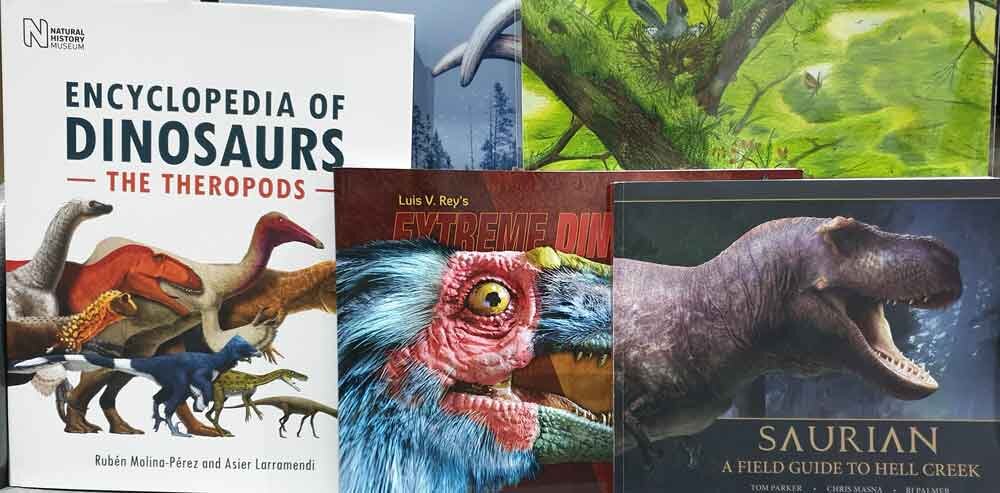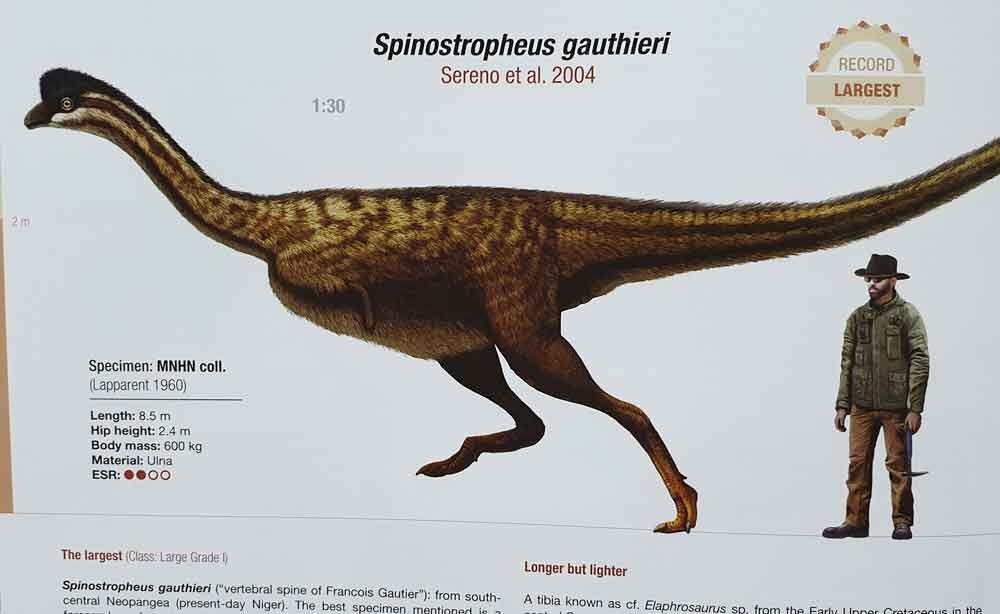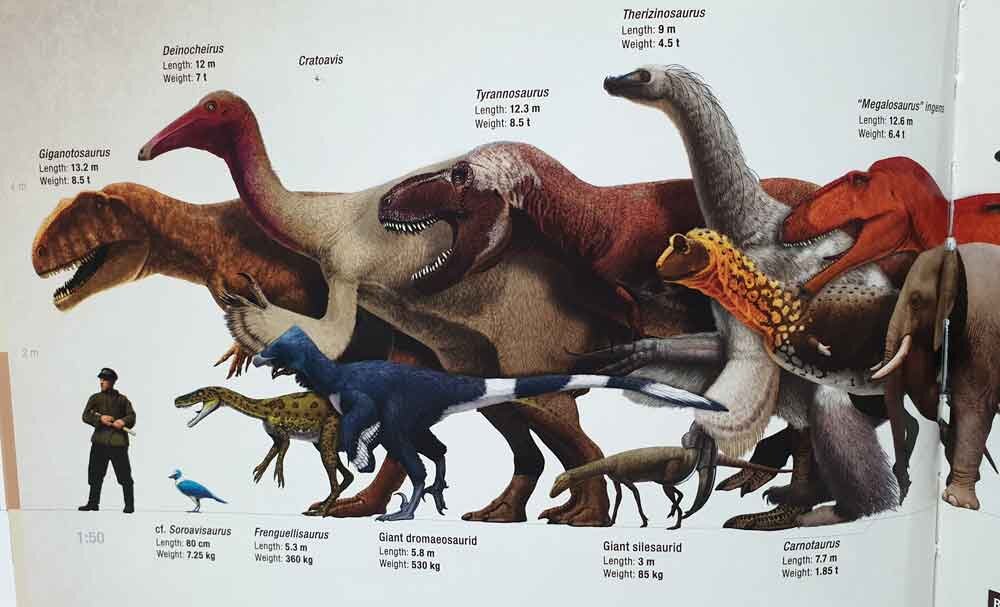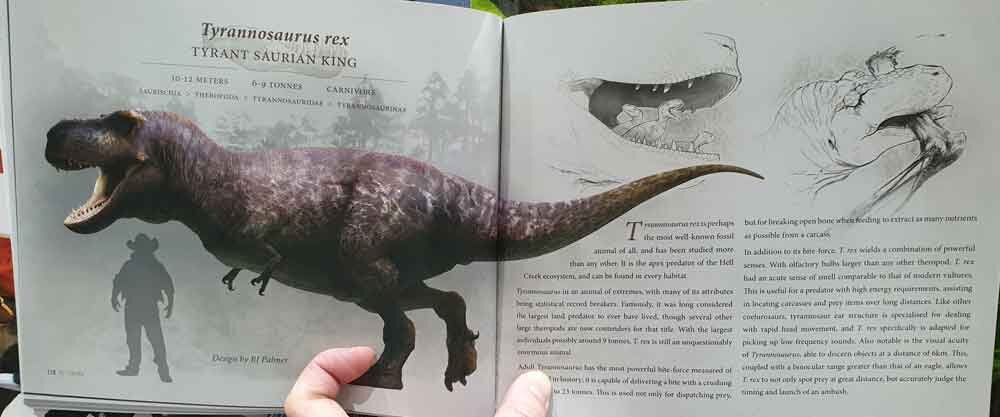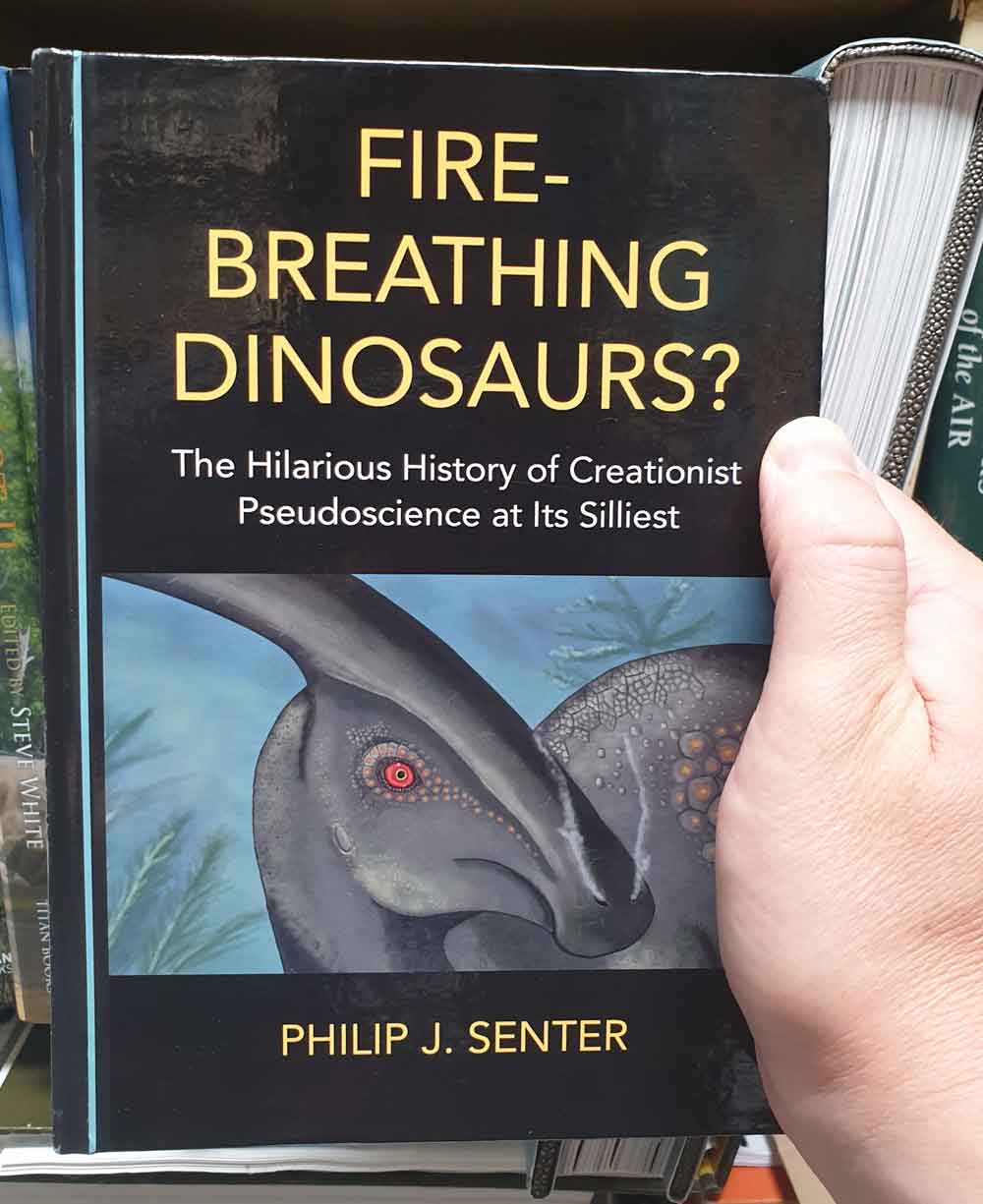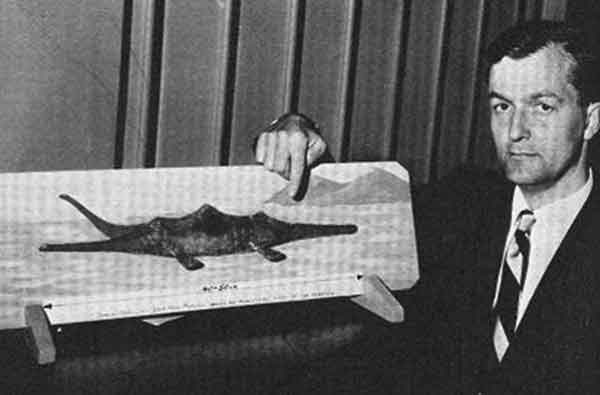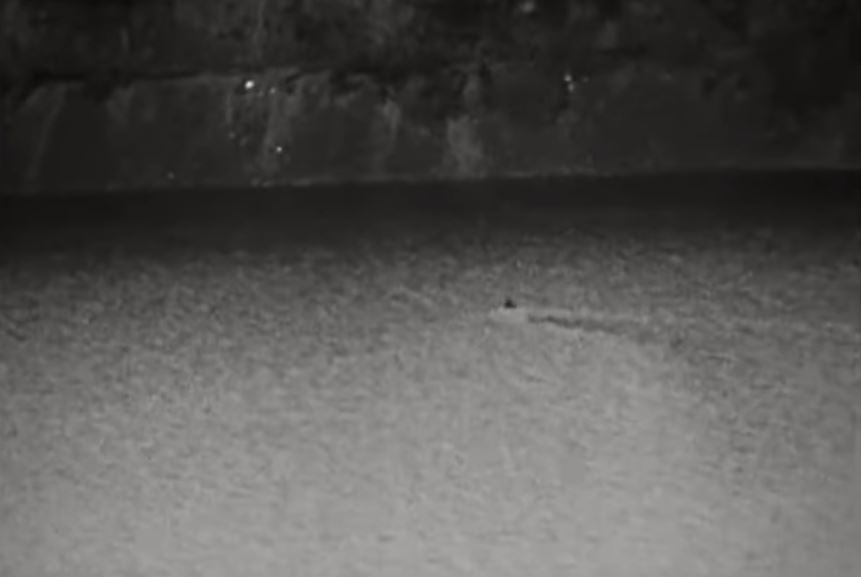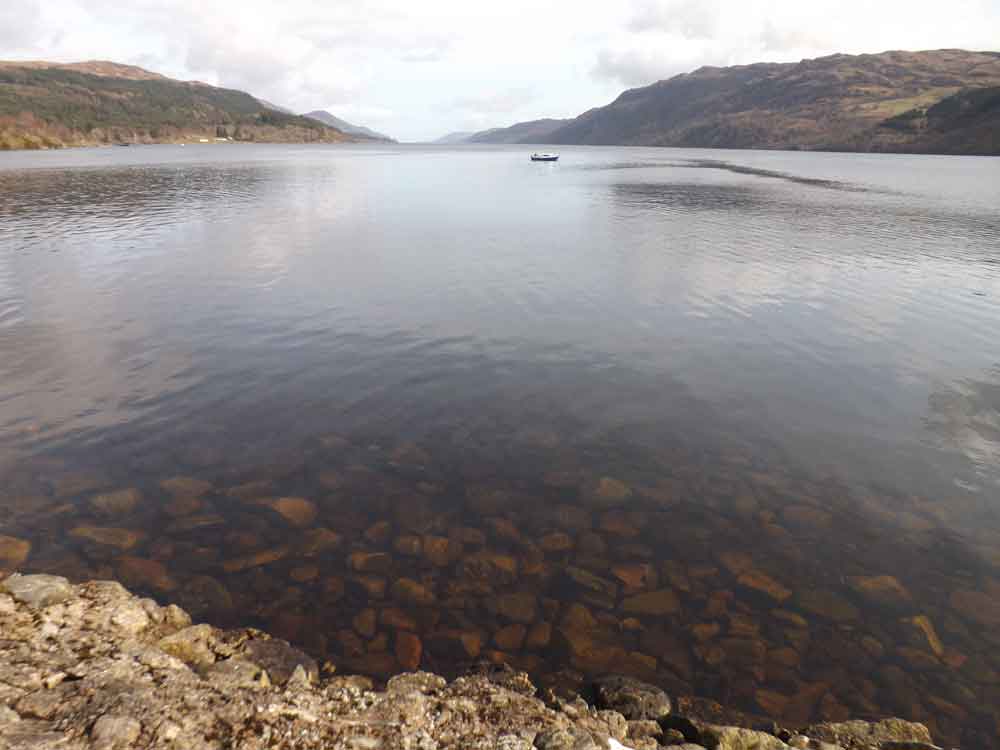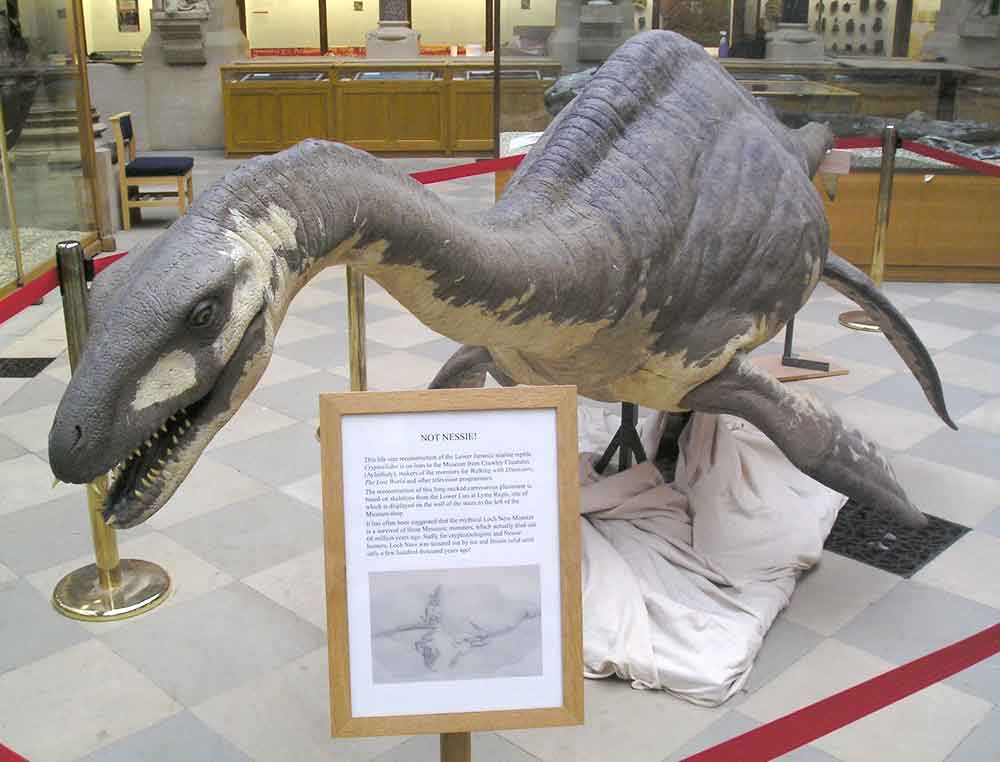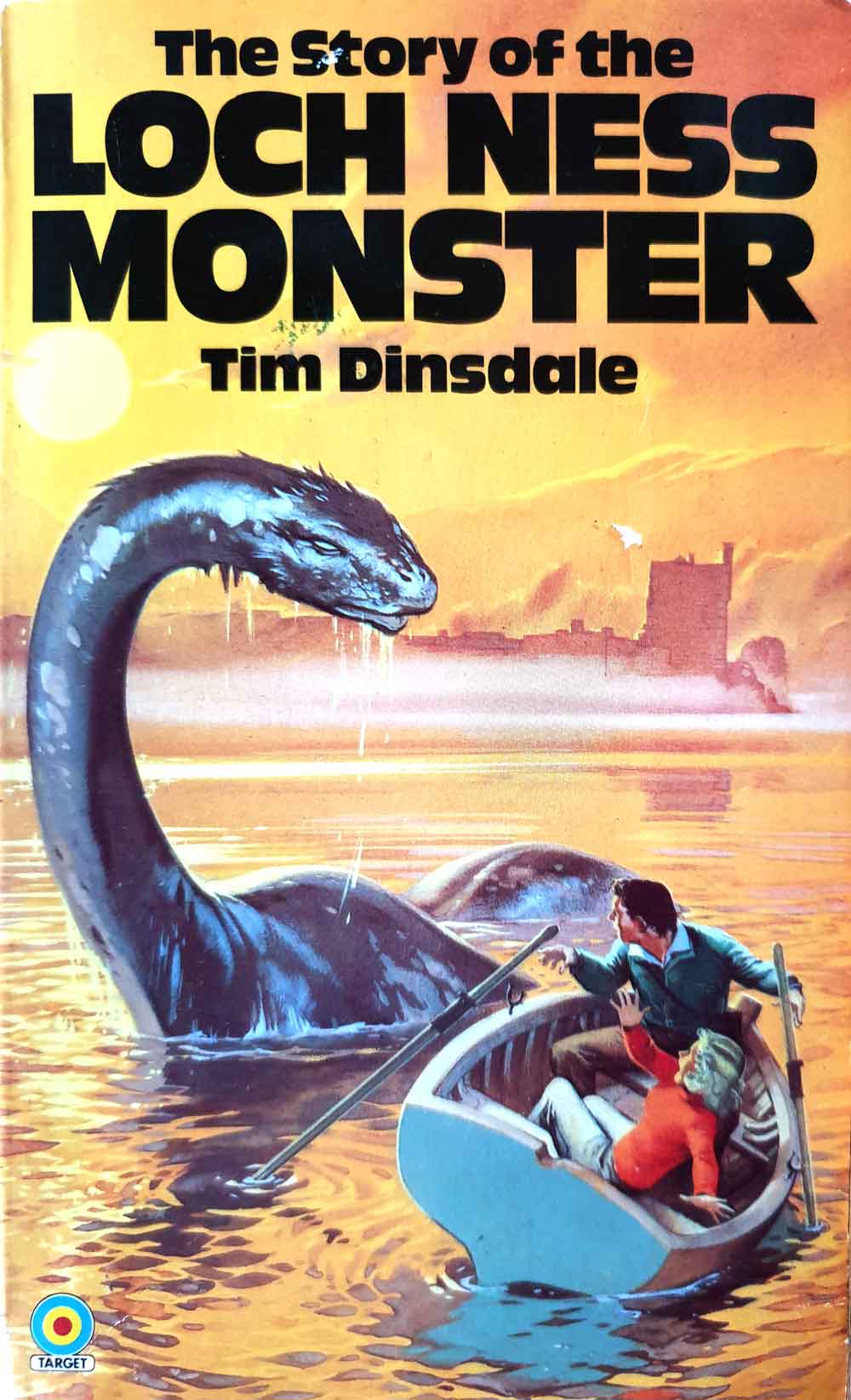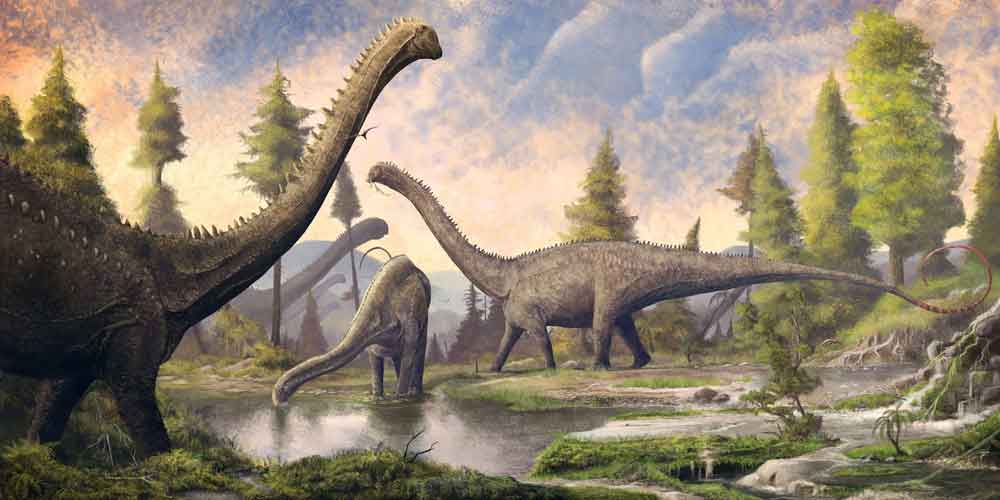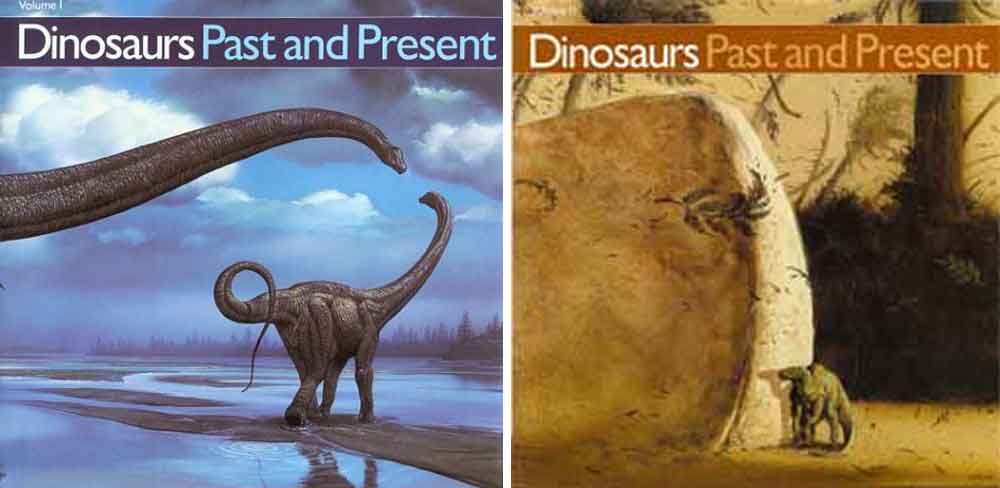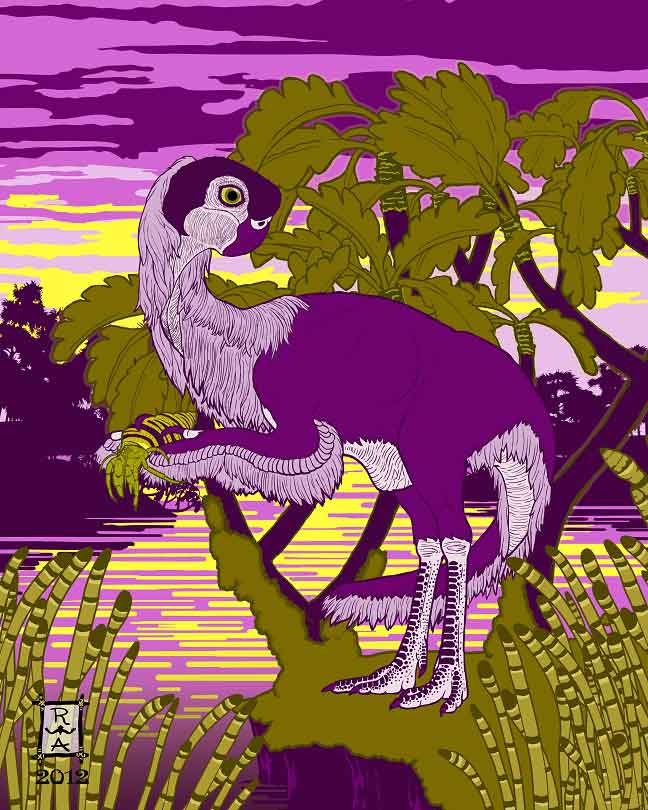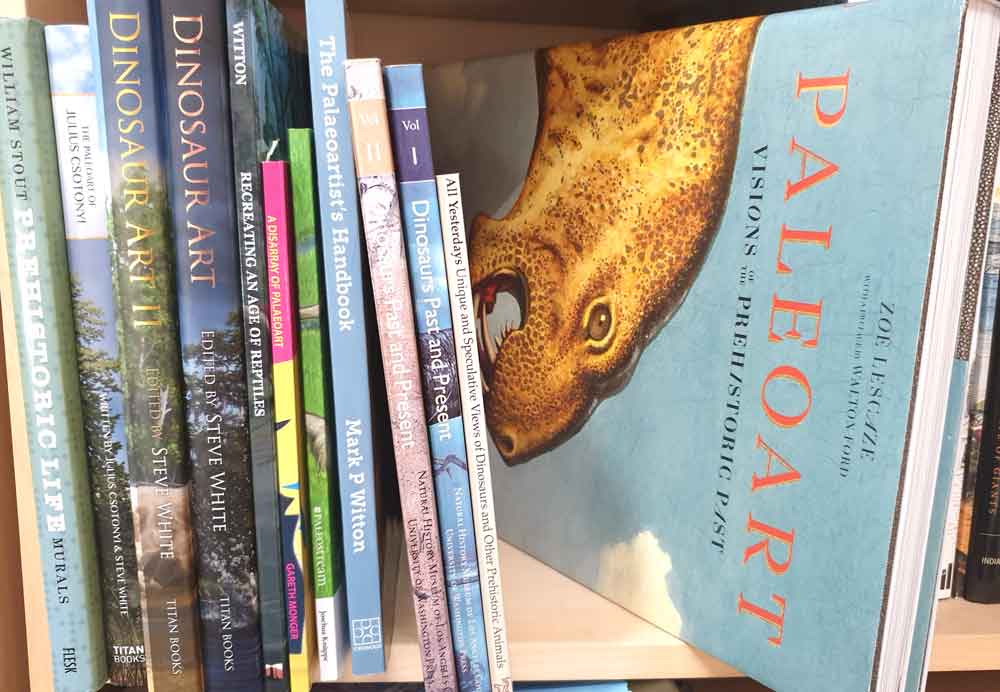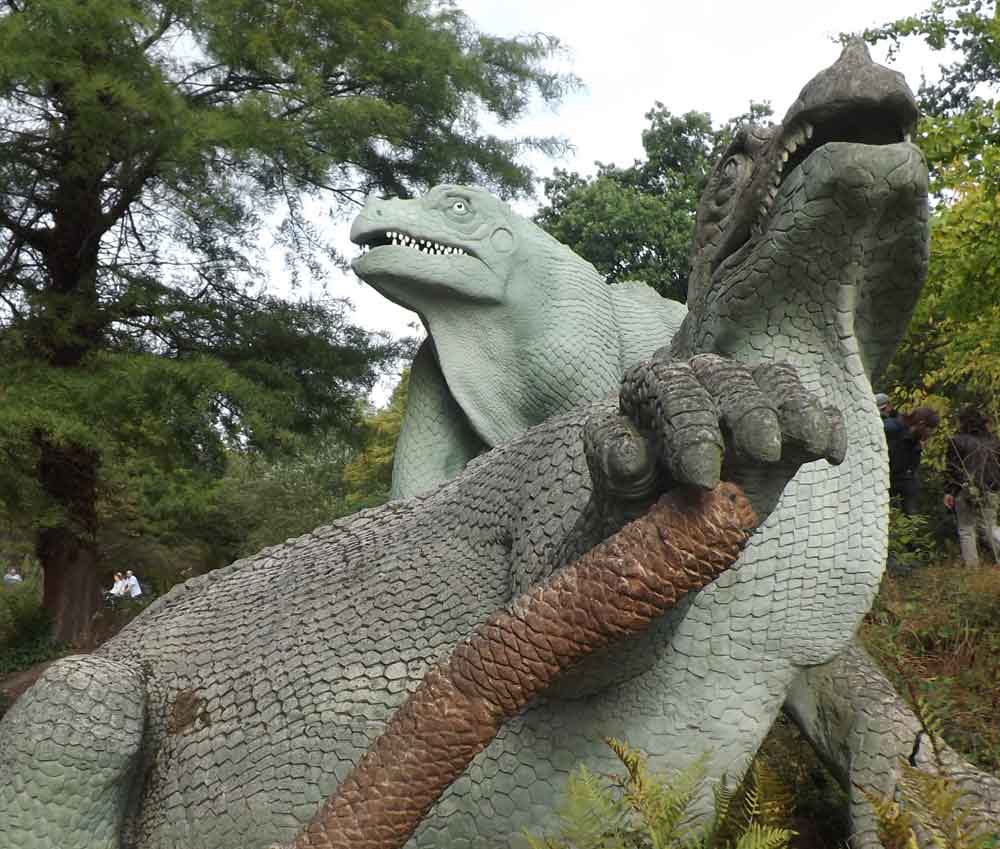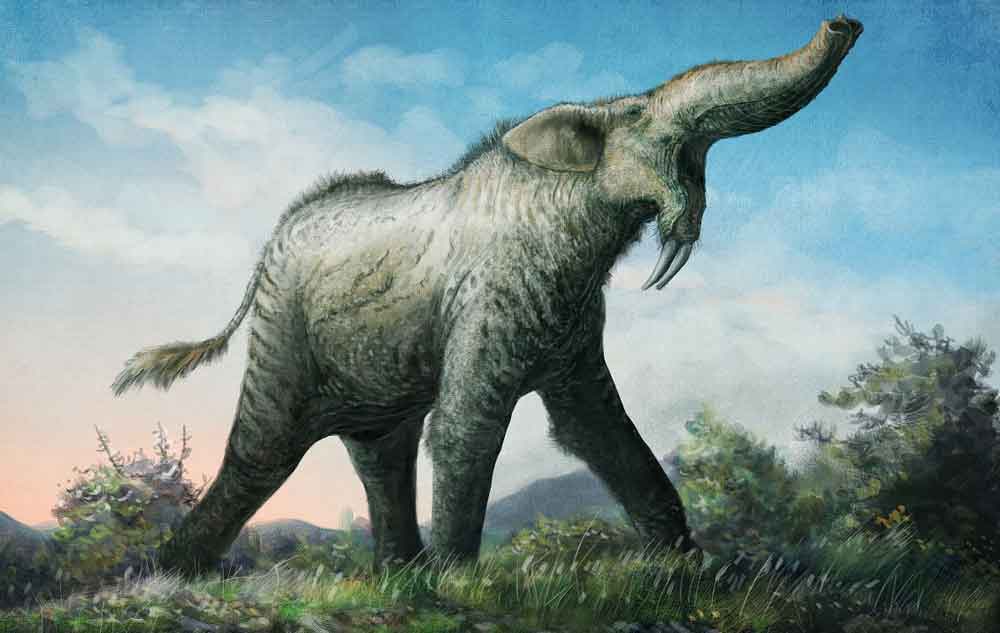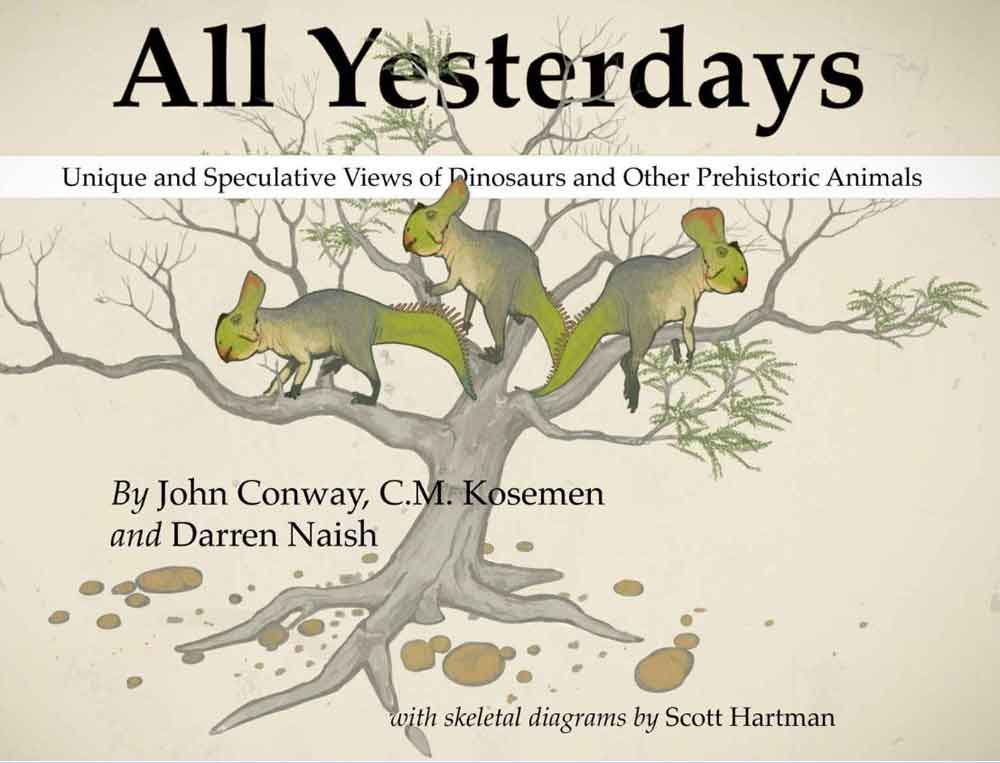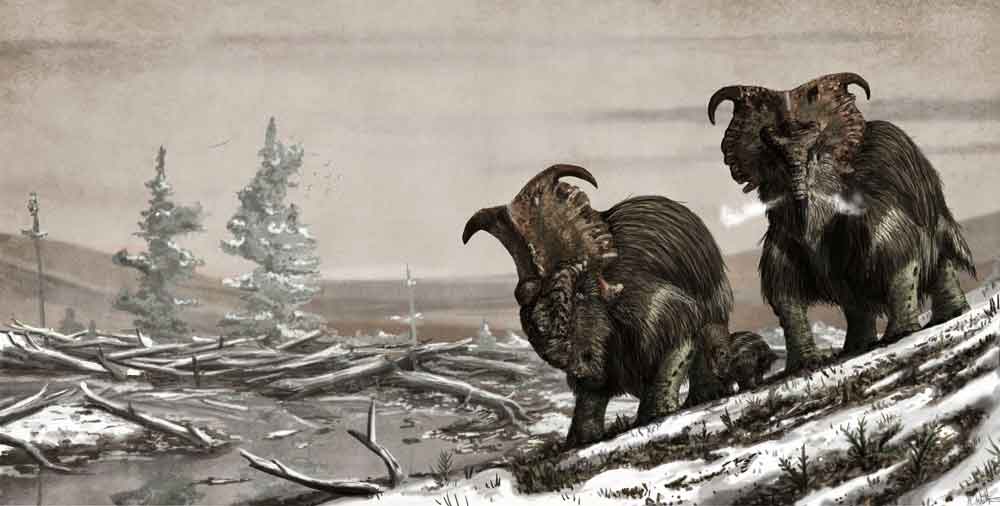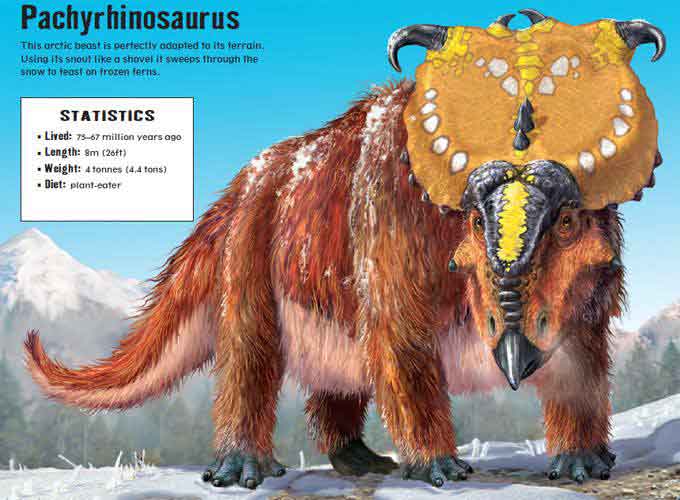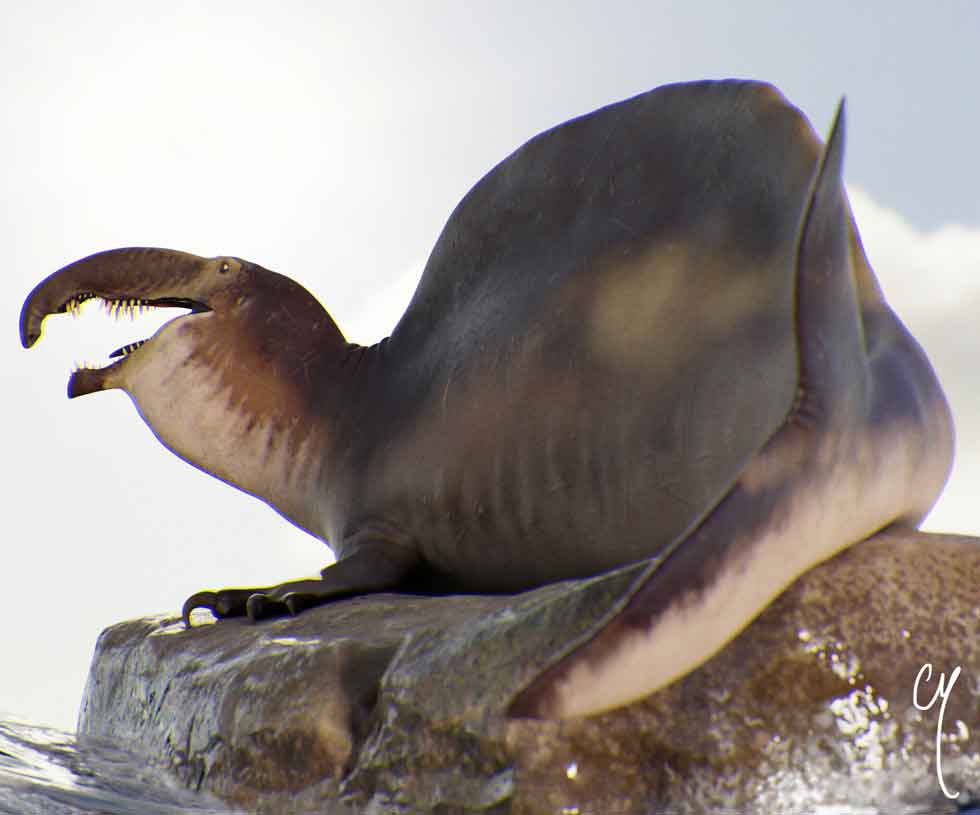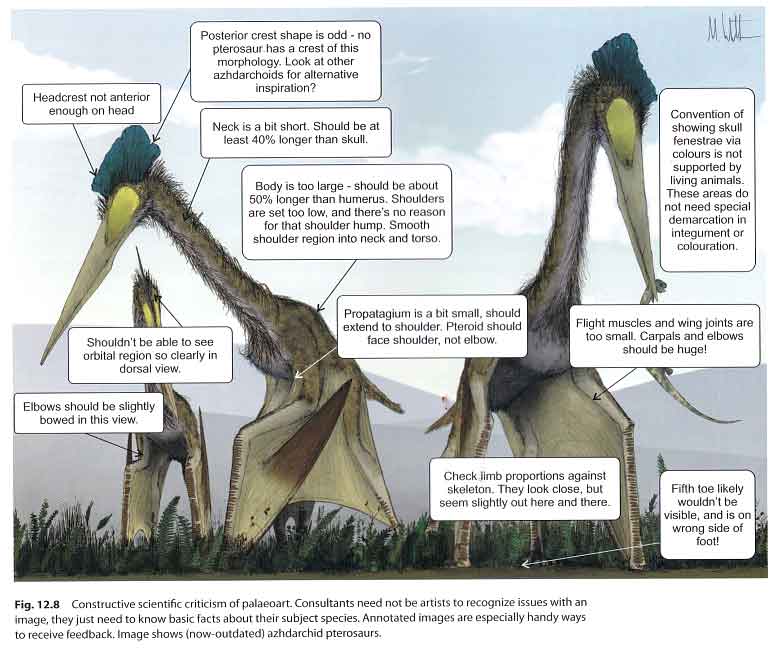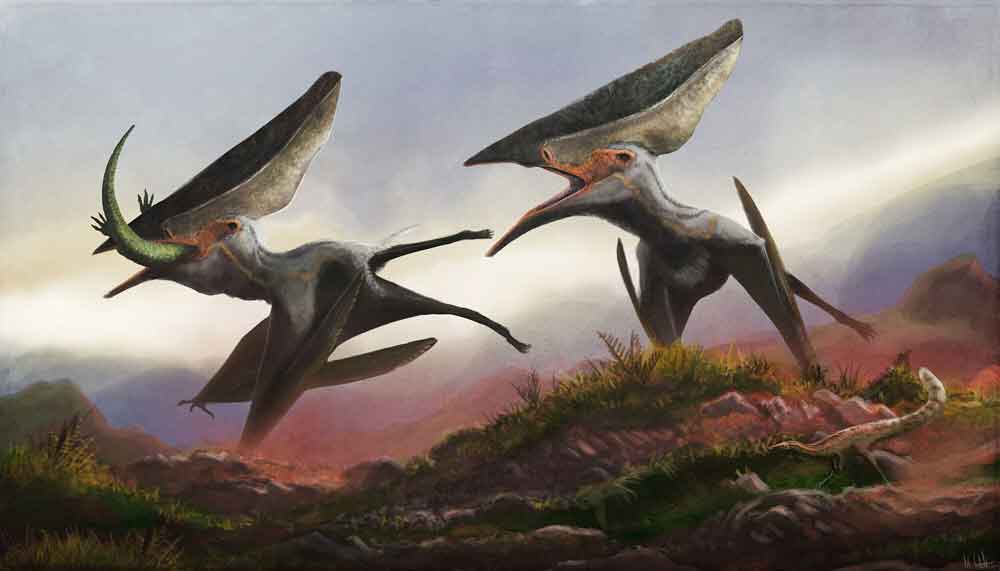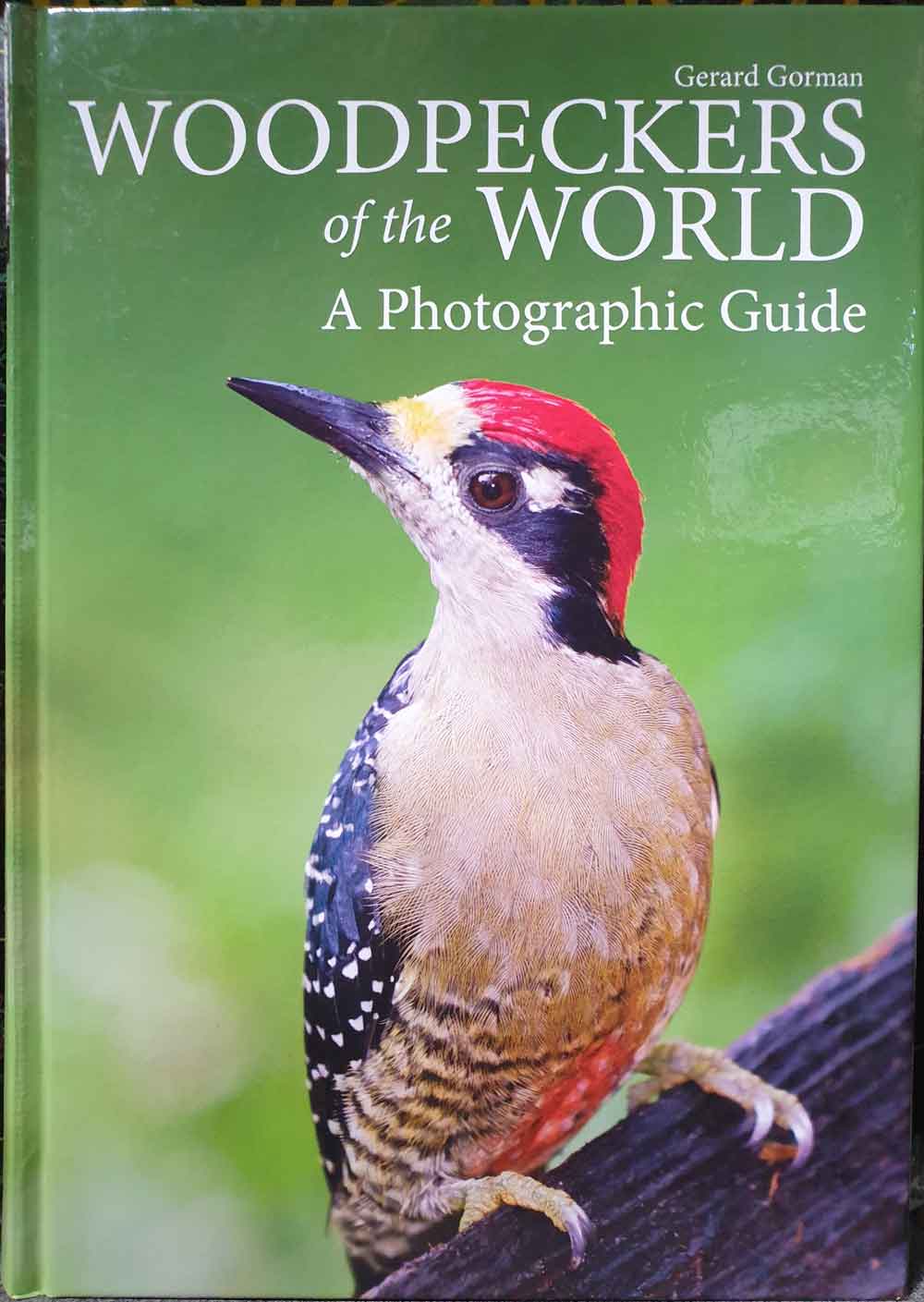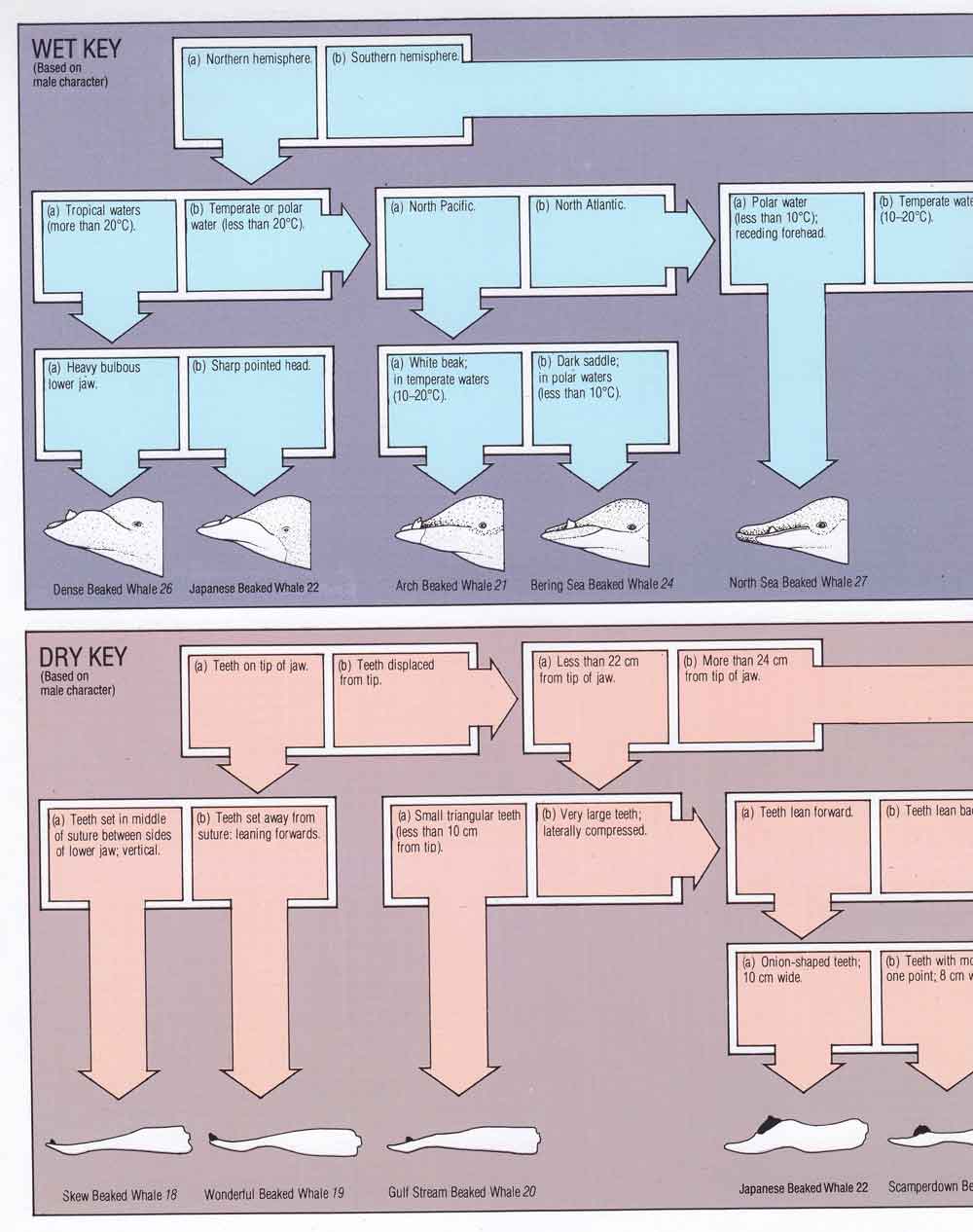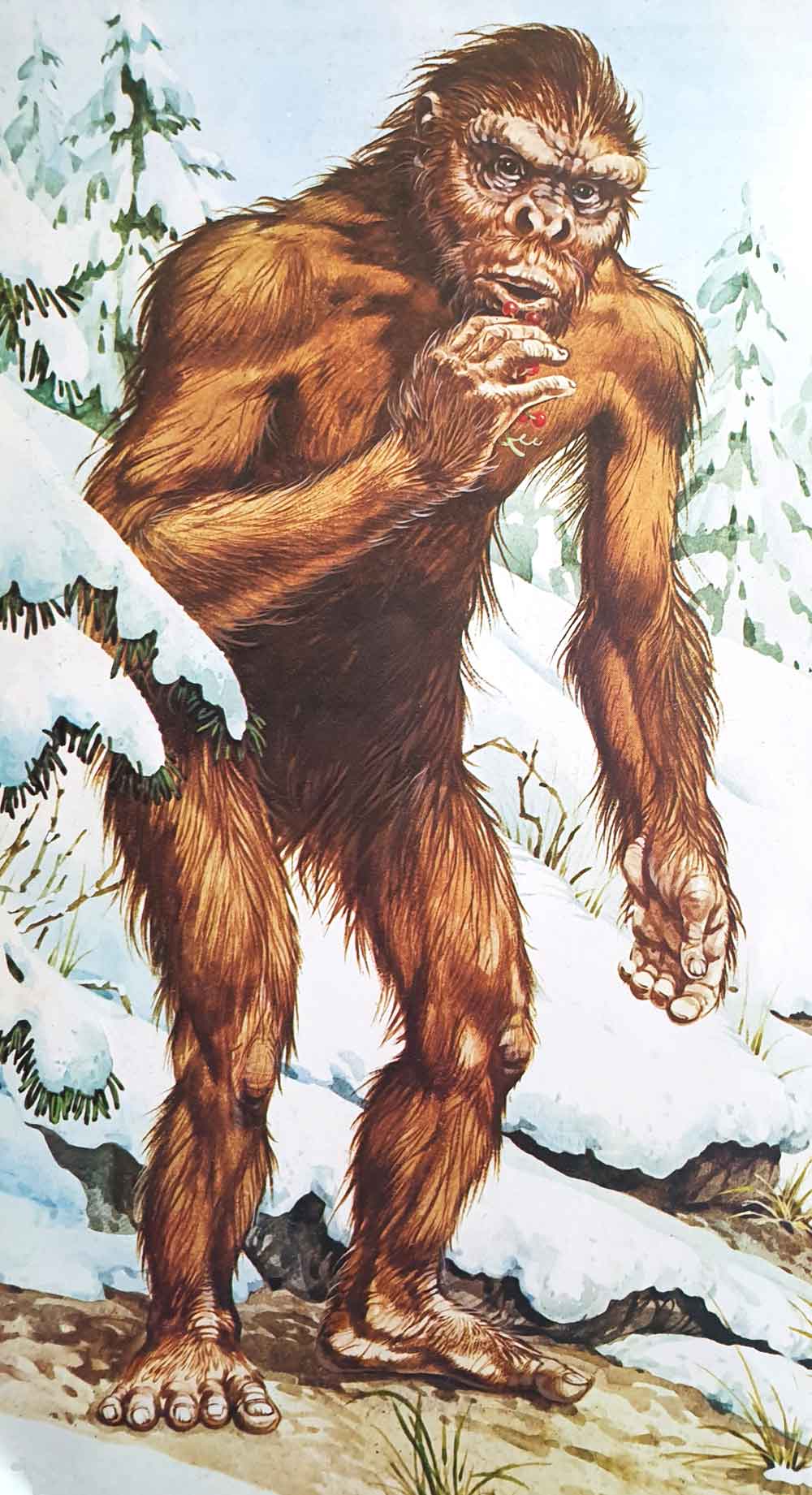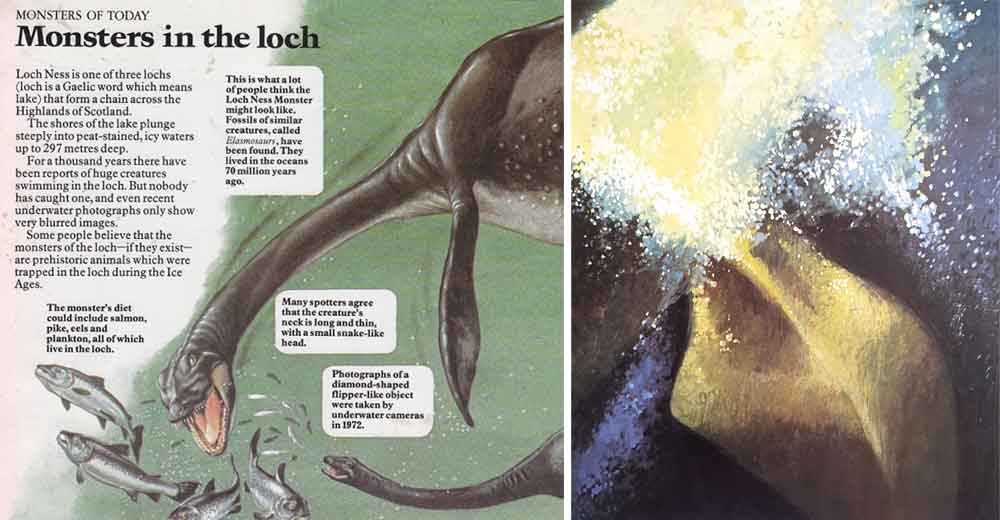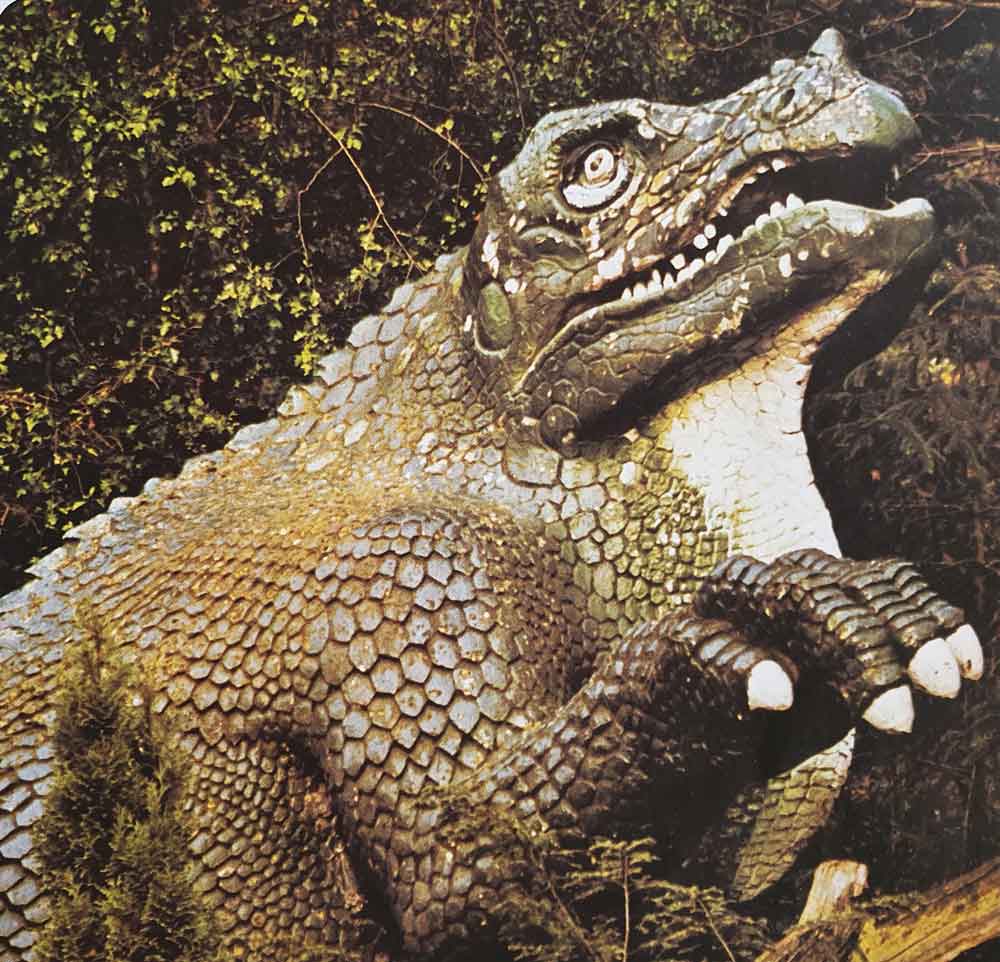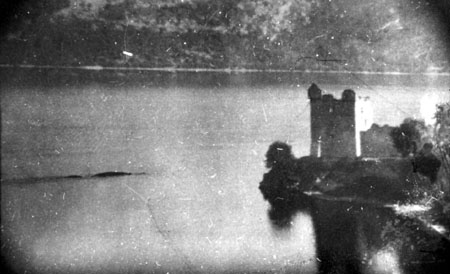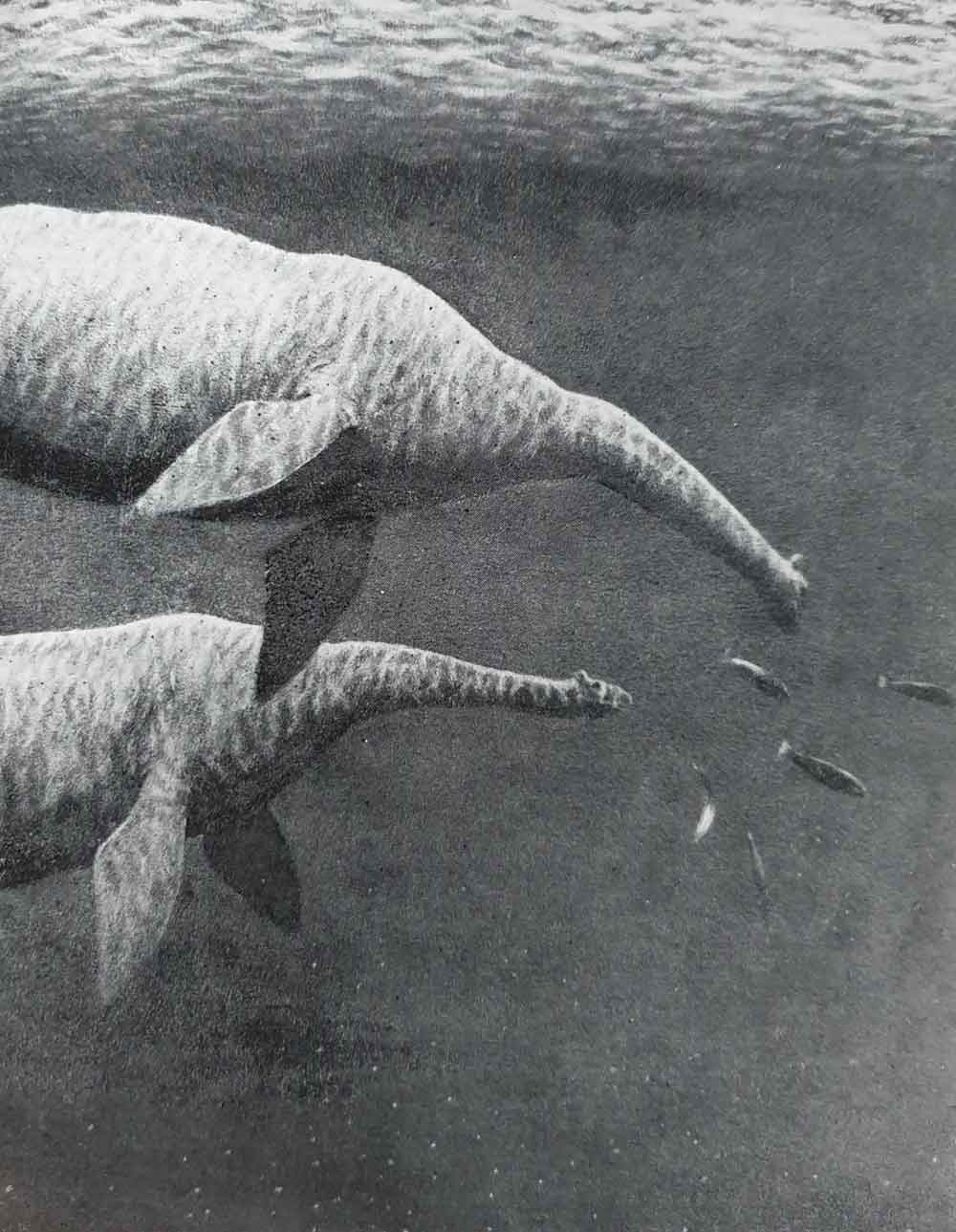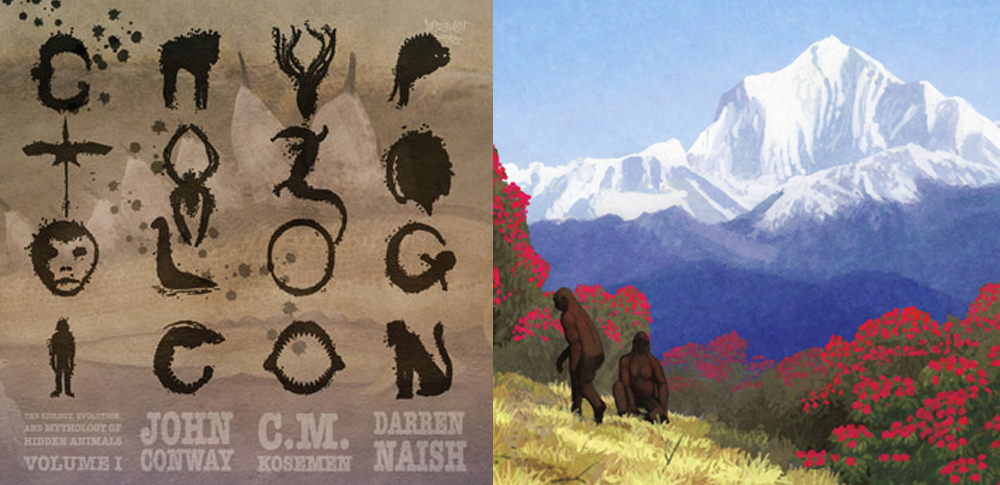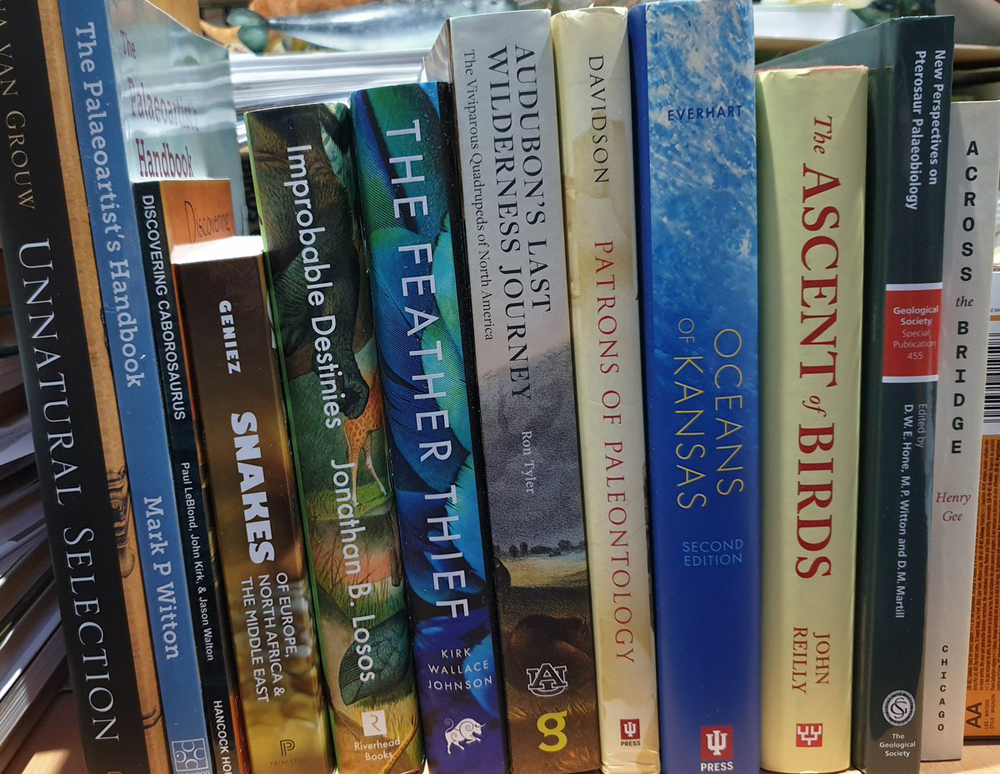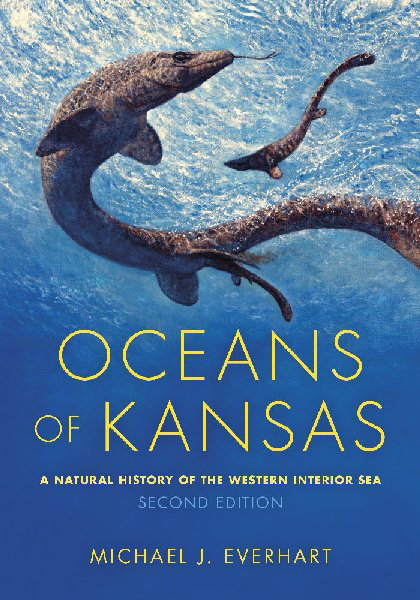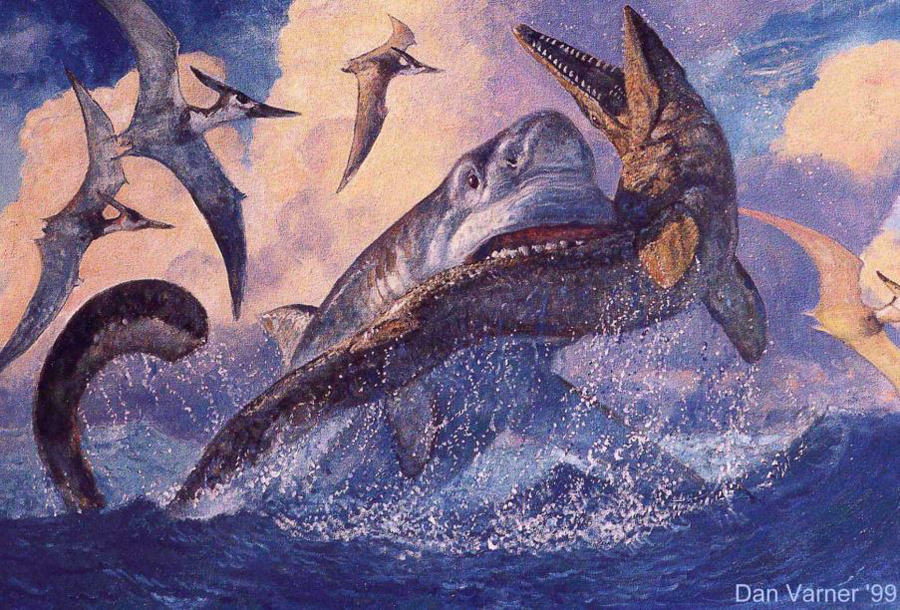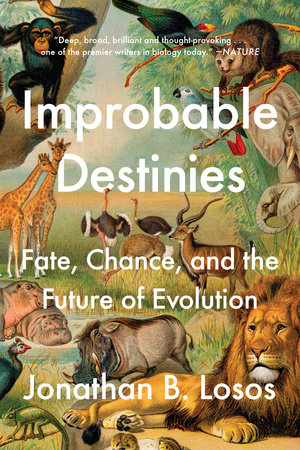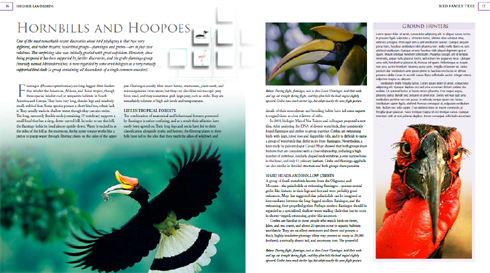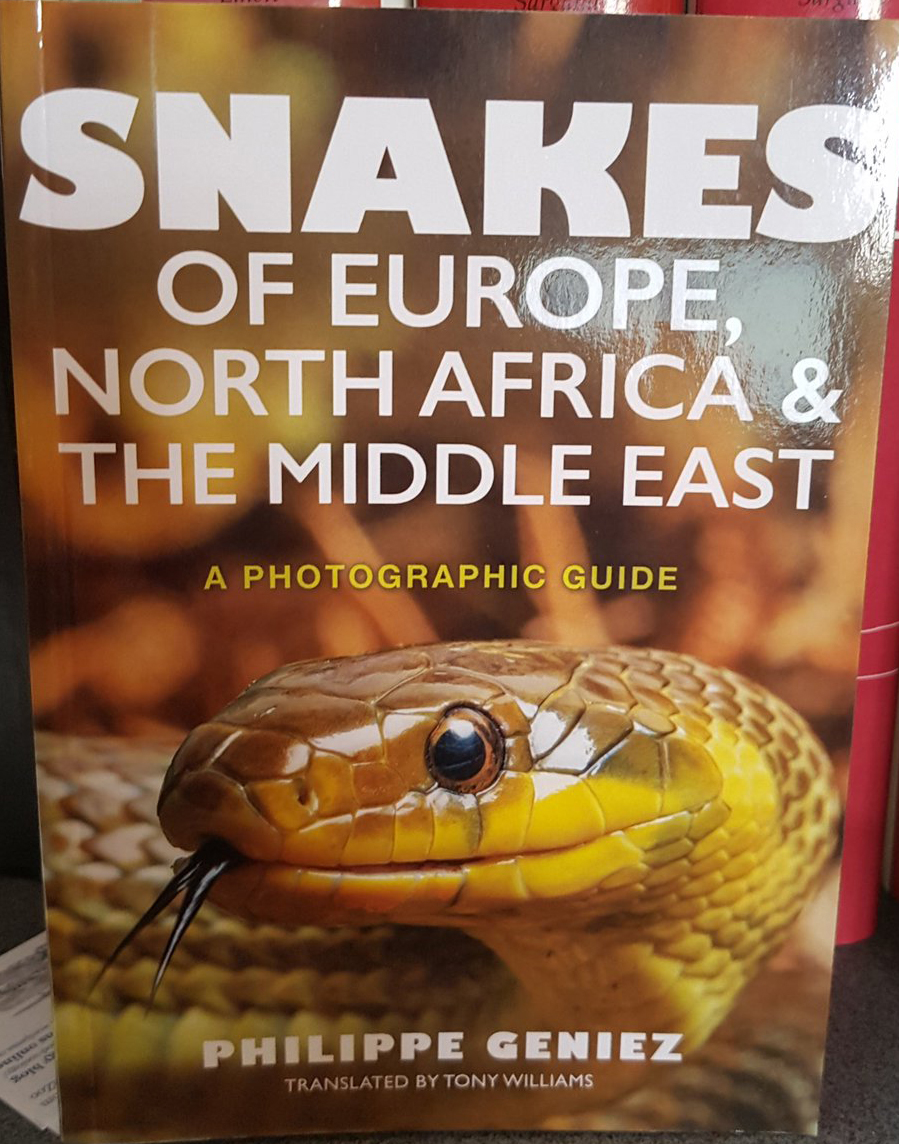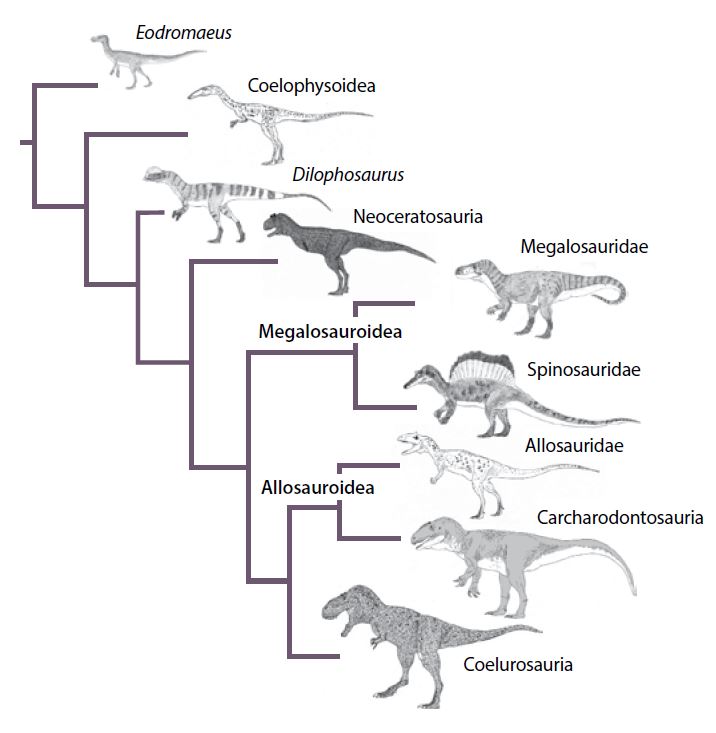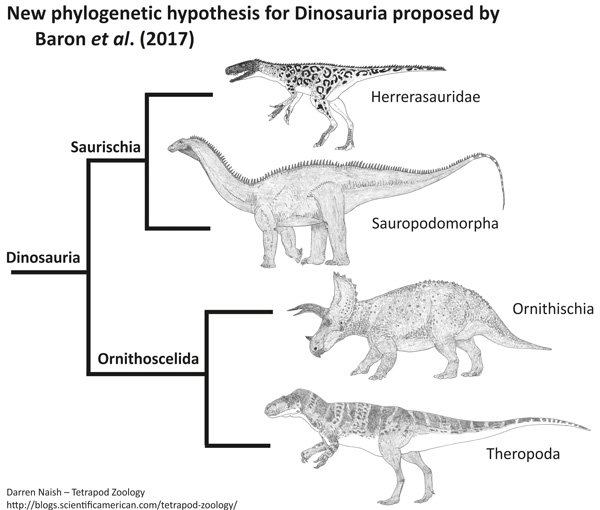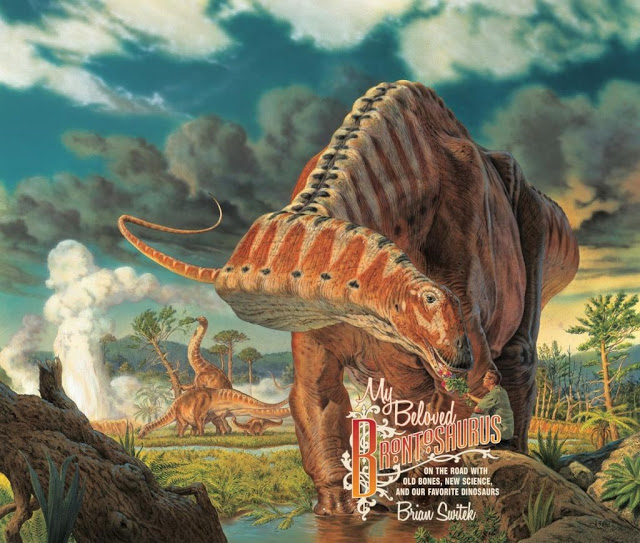It’s been said that the present is a Golden Age for cryptozoology books, cryptozoology being the ostensible study of creatures known from legend, account or anecdote but not accepted as valid by science...
The Third Edition of Naish and Barrett's Dinosaurs: How They Lived and Evolved
Among the proudest of my achievements is the publication of Dinosaurs: How They Lived and Evolved, DHTLE for short, co-authored with Professor Paul Barrett and published by the Natural History Museum, London. I think it’s fair to say that it’s the flagship ‘dinosaur book’ of the museum. It’s also one of only a handful of dinosaur-themed books written at ‘adult level’. “Finally, a modern, intelligent, trade book on dinosaurs for thoughtful readers”, to quote a reviewer at Quarterly Journal of Biology.
Announcing Mesozoic Art, a Lavish New Volume on Modern Palaeoart
The giant, fantastically illustrated new volume Mesozoic Art: Dinosaurs and Other Ancient Animals in Art, edited and written by Steve White and myself and published by Bloomsbury Wildlife, is now on sale…
A Look Back at Dorling Kindersley’s 2001 Encyclopedia of Dinosaurs & Prehistoric Life
My New Book: Dinopedia from Princeton University Press
Pete Dunne and Kevin T. Karlson’s Gulls Simplified: A Comparative Approach to Identification
Announcing Dinopedia, Out September 2021
Kirk W. Johnson’s 2018 The Feather Thief, a Review
Beautiful, Big, Bold Dinosaur Books: of Molina-Pérez and Larramendi’s Theropods, Rey’s Extreme Dinosaurs 2, and Parker et al.’s Saurian
One of the reasons you read TetZoo is because of the dinosaurs, and among the dinosaur-themed things I write about on fairly regular basis are new(ish) dinosaur-themed books.
Partly because I’m way overdue on the book reviews I planned to write during 2019, I’m here going to talk about some recently-ish published dinosaur-themed books that you’d do well to buy and read, if you wish, or can. I’ve written about recently-ish published dinosaur-themed books on quite a few recent occasions; see the links below for more. Let’s get to it.
Encyclopedia of Dinosaurs: the Theropods, by Rubén Molina-Pérez and Asier Larramendi
I can say right out of the gate that this 2019 work is one of the most spectacular dinosaur-themed works that has ever seen print. Think about that for a minute, since it’s a pretty grand claim. Yes. This book is spectacular: big (288 pages, and 24.5 cm x 30 cm), of extremely high standard, packed with information, and containing a vast number of excellent and highly accurate colour life reconstructions. Originally published in Spanish, it has now been translated (by David Connolly and Gonzalo Ángel Ramírez Cruz) and published in English by London’s Natural History Museum. The book consists of eight sections, which variously go through the theropod cladogram, discuss geographical regions and the theropods associated with them, and review theropod anatomy, eggs, footprints and so on. And it’s packed with excellent illustrations… hundreds of them.
A selection of pages from Molina-Pérez & Larramendi (2019). At left, eggs depicted to scale (with a basketball). At right, just two of the many pages that feature theropod skeletal elements. Images: Molina-Pérez & Larramendi (2019).
The art is great – the majority of colour images being by the phenomenally good and reliable Andrey Atuchin – and I’d recommend that anyone interested in the life appearance of dinosaurs obtain the book for its art alone. I have one criticism of the art though, which is that the colour schemes and patterns used for some of the animals are occasionally based on those of living animals (most typically birds).
Just two of the many UNNAMED theropod species reconstructed in the book. Exciting stuff! The humans that feature in the book are an interesting lot. Images: Molina-Pérez & Larramendi (2019).
Familiar theropods of many sorts are illustrated, but a major plus point is that many of the animals depicted are either obscure and mostly new to the world of palaeoartistic depictions (examples: Spinostropheus, Dryptosauroides, Bonapartenykus, Nanantius, Gargantuavis) or are as-yet-unnamed species: animals which clearly represent something new (since they’re the only member of their group known from the relevant geographical region and segment of geological time) but have only been referred to by their specimen numbers or by a ‘cf’ attribution (a theropod called, for example ‘cf Velociraptor mongoliensis’ is being compared by its describers to V. mongoliensis and is clearly very much like V. mongoliensis, but quite possibly not part of the species and perhaps something new. The ‘cf’ is short for ‘confere’, as in: compare with).
If the reconstructions in the book are anything to go by, Spinostropheus - according to one specimen (an ulna) it could reach huge sizes - was among the most remarkable of theropods. Just look at it. Image: Molina-Pérez & Larramendi (2019).
Two issues strike me as problematic though. One is that the arrangement is really difficult to get to grips with, and it’s taken me numerous attempts to understand and appreciate why the book is arranged the way it is. The second issue concerns what appears to be a suspiciously high degree of taxonomic precision for footprints. The authors depict footprints, said to be representative of the different theropod groups covered in the taxonomy section at the start of the book, and seem confident that the tracks concerned (which are often fairly nondescript) were made by species belonging to the relevant group. It’s hard to be convinced that this is reliable, except in a very few cases: I’m happy to agree that the giant Tyrannosauripus pillmorei track, for example, really was made by a member of Tyrannosauridae. Then again, maybe the authors have devised a new track identification method that isn’t yet known to the rest of us.
The several montages in the book are truly things of beauty. Image: Molina-Pérez & Larramendi (2019).
And on that note, it’s obvious that a vast quantity of novel science was performed as part of the background research for this book. The methods and data used by the authors are explained up front. Impressive stuff, and stuff which should be published in the technical literature at some point. Are their results always ‘good’? Well, I have my misgivings about the idea that Dinornis the moa was the fastest (non-flying) theropod ever and capable of sprinting at a phenomenal 81 km/h…
So, so many diagrams of tracks and trackways. Image: Molina-Pérez & Larramendi (2019).
Despite my minor misgivings, this book is attractive enough and interesting enough that it’s a must-have for those seriously interested in dinosaurs and in artistic depictions of them. Buy it if you can. This volume promises to be the first in a series. At the time of writing, the second of these – devoted to sauropods – is being advertised and is due to appear soon. Given that there’s every reason to assume that its artwork and overall quality will be similar to that of the theropod volume reviewed here, I have very high hopes and look forward to seeing it.
Molina-Pérez, R. & Larramendi, A. 2019. Encyclopedia of Dinosaurs: the Theropods. The Natural History Museum, London. pp. 288. ISBN 9780565094973. Hardback. Here at publishers. Here at amazon. Here at amazon.co.uk.
Luis Rey’s Extreme Dinosaurs 2: the Projects
Luis Rey (who blogs here) has been active in the palaeoart world for a few decades now, and most people interested in the portrayal of dinosaurs in art will be familiar with his vibrant, bold and dynamic style. Luis’s work has appeared in museum installations, exhibitions, and in numerous publications, including books. Most notable among these are his own Extreme Dinosaurs (Rey 2001) and The Big Golden Book of Dinosaurs, by Robert Bakker (Bakker 2013). I feel it would be wrong at this point to avoid mentioning the fact that Luis and I were regular correspondents back when the first of those books appeared, but that my dislike of the 2013 book – which I made clear in a TetZoo review – coincided with a cessation in any contact we used to have. But things have moved on; Luis’s art has continued to evolve and let’s put all of that behind us.
A collection of Rey works at TetZoo Towers. Image: Darren Naish.
Extreme Dinosaurs 2: the Projects discusses the intellectual and artistic background to several dinosaur-themed museum installations which Luis has created, but does so in an evolutionary fashion such that they’re used to describe our improving knowledge of the Mesozoic world. Luis was illustrating colourful, fully feathered dromaeosaurs, oviraptorosaurs and so on at a time when the majority of relevant academics were dead against this, so it would be fair to see him as one of several artists who were predicting things that would prove correct in the end. I was on side too, and consequently was a vociferous Rey advocate in the early part of my academic career, deliberately using his reconstructions of dromaeosaurs – even the turkey-wattled, shaggily feathered ones – in conference presentations and publications. And for all the success of All Yesterdays and its associated movement, we have never forgotten that Luis was saying many of the same things already.
Some representative pages from Extreme Dinosaurs 2. At right, note the person wearing an oviraptorosaur costume while sat in a nest.
Maniraptorans, thyreophorans, ceratopsians, dinosaur eggs and nesting and the dinosaurs (and other Mesozoic reptiles) of Mexico all get coverage here as Luis explains the thinking behind new pieces of art and also how and why he’s modified older ones. Our understanding of feather arrangements in non-bird maniraptorans have improved a lot in recent years, plus we have so much new data on ankylosaur armour, ceratopsian skin and so on. If you haven’t been keeping up, this book would be a good primer. The text is concise and written in a friendly, informal style.
More representative pages, this time depicting therizinosaurs. Brightly coloured faces, bold patterns on the feathering, inflatable throat structures… what’s not to love? Image: Rey (2019).
I’m still not keen on the photo-bashing that’s now integral to the Rey style and don’t find it effective or successful. A few pieces included in the book don’t, therefore, work for me (examples: Santonian hadrosaur hassled by theropods on pp. 104-5, the Labocania scene on pp. 106-7). But can I please emphasise that I still find this a valuable book, and I very much recommend it as an interesting addition to the palaeoart stable, the autobiographical angle in particular being useful. My copy of Extreme Dinosaurs 2: the Projects is an advance softback version but I understand that a hardback is available too.
Rey, L. 2019. Extreme Dinosaurs 2: the Projects. Imagine Publishing, London/Metepec. pp. 139. ISBN 978-0-9933866-2-6. Softback/Hardback. Here at amazon.co.uk.
Parker et al.’s Saurian: A Field Guide to Hell Creek
Even if – like me – you’re not a video game buff and have little interest in video games or the playing of them, chances are high that you’ve heard about Saurian, a role-playing, survival simulation experience in which you play the role of a dinosaur negotiating a Maastrichtian environment modelled on that of the Hell Creek Formation. You have to avoid predators, find and procure food, raise babies, and live as long as possible. I’ve played The Simms, back in the day, and recall the urge to sink hours of time into living a virtual tiny life, so I can understand the appeal.
Representative pages, here showing the raptor prey restraint model in action. Poor pachycephalosaur. Image: Parker et al. (2019).
The relevance of Saurian to the TetZooniverse is that the game has been designed and built according to an incredibly high scientific standard, the team behind it having done a vast quantity of research on everything relevant to the Hell Creek world. And the good news is that this work hasn’t been wasted. This book – written by Tom Parker, featuring the artwork of Chris Masna and RJ Palmer (of Detective Pikachu fame and much else), and produced following consultation with a long list of relevant palaeontologists – is the result: it includes a vast quantity of amazing concept art, detailed vignettes and scaled artwork of the organisms and environments that feature in the game, and is simply a joy to look at. The text is brief but functions well. The book is a sturdy softback (20 x 24 cm) of 182 pages, printed to excellent, glossy standard.
RJ Palmer’s T. rex is one of the stars of the show. Some of you will know that the Saurian team abandoned an earlier, more feathery version. Assorted humans function as scale bars; you can likely guess who this one is based on. Image: Parker et al. (2019).
As should be clear by now, the thoroughness of the project’s world-building means that there’s more information here on Maastrichtian North American trees, rainfall patterns, swamps, beaches, amphibians, lizards, crocodyliforms, fishes and so on than you’ve ever seen before. The result is one of the most interesting, detailed and attractive volumes dedicated to Late Cretaceous life. This book is a must-have for those seriously interested in palaeoart and in seeing prehistoric animals and environments depicted in detail, but it’s also good enough that those with a scientific or technical interest in Late Cretaceous life should obtain it too.
Oh wow, so much of the art in this book is just phenomenal. This scene depicts competition among scavengers at a carcass. You might just be able to see the anguimorph lizard inside the body cavity. Image: Parker et al. (2019).
Parker, T., Masna, C. & Palmer, R. J. 2019. Saurian: A Field Guide to Hell Creek. Urvogel Games. pp. 182. Softback. Here at publishers [BUT CURRENTLY OUT OF STOCK].
That’s where we’ll end for now. A few more dinosaur-themed book review are due to appear here soon, including of Donald Prothero’s The History of Dinosaurs in 25 Fossils and Michael Benton’s The Dinosaurs Discovered: How a Scientific Revolution is Rewriting Their Story.
For previous TetZoo dinosaur-themed book reviews, see… (linking here to wayback machine versions due to paywalling and vandalism of TetZoo ver 2 and 3 articles)…
Long and Schouten's Feathered Dinosaurs, a review, January 2008
Luis Chiappe's Glorified Dinosaurs: The Origin and Early Evolution of Birds, January 2011
What they’re saying about The Great Dinosaur Discoveries, November 2011
Greg Paul’s Dinosaurs: A Field Guide, August 2012
New Dinosaur Books, Part 1: Barrett on Stegosaurs, August 2018
New Dinosaur Books, Part 2: Ben Garrod’s ‘So You Think You Know About… Dinosaurs’ Series, August 2018
The Second Edition of Naish and Barrett’s Dinosaurs: How They Lived and Evolved, November 2011
Refs - -
Bakker, R. T. 2013. The Big Golden Book of Dinosaurs. Random House, New York.
Rey, L. 2001. Extreme Dinosaurs. Chronicle Books, San Francisco.
A Review of Robert L. France’s Disentangled: Ethnozoology and Environmental Explanation of the Gloucester Sea Serpent
Among the most famous sea monster cases of all time is that of the Gloucester Sea Serpent of New England, USA. This giant, serpentine creature was seen on numerous occasions between 1817 and 1824, often at relatively close range by large numbers of people, and often by people of respectable standing. Many drawings of the creatures were produced, but physical evidence of its existence was never obtained, the one relevant incident being the 1817 recovery of a small snake with a peculiar lumpy dorsal outline. This was very obviously a Black or Eastern racer Coluber constrictor afflicted with a spinal deformity.
Caption: the most famous depiction of the Gloucester Sea Serpent is this fanciful one dating to August 1817, said to have been drawn from life. I don’t think the name of the artist is on record. Image: public domain.
The case of the Gloucester Sea Serpent is familiar enough that it’s covered in most works that review sea monsters and their claimed existence (e.g., Heuvelmans 1968), and indeed a few books are dedicated entirely to the creature itself (O’Neill 1999 [republished by Paraview in 2003], Soini 2010). How has the monster been identified? The opinion promoted most frequently by writers specialising in cryptozoology has been that it was a scientifically unrecognised, serpentine mammal with a series of dorsal humps arranged along its length (Heuvelmans 1968, Woodley 2008) or perhaps a giant sea reptile of the sort otherwise known only from the fossil record (O’Neill 1999).
Caption: two books dedicated to the Gloucester Sea Serpent - written for adults - are in existence, and both are worth reading. June O’Neill’s book of 1999 (though this is the cover of the 2003 Paraview edition), and Wayne Soini’s of 2010.
Robert France’s Disentangled is yet another volume dedicated to the Gloucester Sea Serpent, but it’s unlike any other. For all the popular and sensationalist interest in sea monsters, academic treatments of the subject are rare, making this book a significant addition to the literature; more so given that it was written by a qualified scientist with a substantial number of technical, peer-reviewed publications to his name. At this point I must spoil the surprise and reveal France’s primary hypothesis: that the appearance and occurrence of the Gloucester Sea Serpent was intimately tied to the economic and social history of the New England coast, and that sightings of this creature were actually of large vertebrate animals entangled in fishing gear (France 2019).
Caption: this is another especially famous depiction of the Gloucester Sea Serpent from 1817, and again it’s by an anonymous artist. The idea that the monster was seen at relatively close range is again emphasised. Image: public domain.
France on cryptozoology and cryptozoologists. What does France (2019) make of those authors who have gone before him, most of whom have been rather kind to the possible existence of sea monsters as valid zoological entities (that is, as giant marine animal species awaiting scientific recognition)? He is overwhelmingly critical of such writers, I think rightly dismissing their efforts as unscientific or, at least, as ‘bad science’. LeBlond and Bousfield’s infamous work on ‘Cadborosaurus’ (much written about here at TetZoo; see the links below) is not viewed favourably, nor is Michael Woodley’s 2008 book In the Wake of Bernard Heuvelmans (Woodley 2008). Michael (who no longer publishes cryptozoological articles; he and I co-authored some works between 2008 and 2012) has indeed promoted some unusual ideas that cannot be correct, these including that the ‘super otter’ and ‘many-humped’ sea monsters of Heuvelmans (1968) might actually be literal super-sized otters. France (2019) sees red, and describes Woodley’s writings here as “one of the most blatant displays of cryptozoological fancy” and a “ridiculous bit of science fiction” (p. 169).
Caption: books that discuss sea monster reports - here are some (albeit not all) of them - mostly interpret the relevant encounters as descriptions of giant, scientifically unrecognised animal species. Image: Darren Naish.
Henry Bauer has argued that sea monsters and lake monsters are based on reliable evidence supported by trustworthy experts, and that critics of cryptozoology are misguided and unscientific (e.g., Bauer 1982, 2002). But watch his public speaking and read enough of his articles and you’ll find that he endorses research denying a link between HIV and AIDS, and regards homosexuality as an illness. France has noticed this too and regards Bauer as a “fringe scientist” (p. 16).
As for the ‘Father of Cryptozoology’ Bernard Heuvelmans, France is highly critical, accusing him of sloppy scholarship, selective bias, manipulation of facts, an inability to identify hoaxes and misinterpretations of natural phenomena, of being “delusional at best, or outright dishonest at worst”, and of compiling “a house of cards assembled from a Trumpian world of ‘alternative facts’” (p. 30). Meurger (1988) is cited here as providing inspiration (it should really be cited as Meurger & Gagnon (1988)) but this takedown of Heuvelmans much more recalls Ulrich Magin’s critique (Magin 1996), paraphrased in Hunting Monsters (Naish 2017). I’ve even specifically likened the cryptozoological literalism of Heuvelmans and his followers to a house of cards, but I don’t doubt that this use of allegory could be coincidental. Cryptozoological classification schemes – the meat-and-potatoes of works by Heuvelmans, Coleman and Huyghe, Woodley and others – are described as a ‘nomenclature of nonsense’ by France (2019, p. 165).
Caption: the most influential sea monster book of them all is Heuvelmans (1968). Therein, he argued for the existence of nine distinct sea monster types, illustrated at left by Cameron McCormick. Their purported existence hasn’t exactly been embraced by biologists at large. Images: Cameron McCormick, Heuvelmans (1968).
When it comes to those who’ve been critical of cryptozoological literalism, France is quite the fan. Konar (2009) – an article I cannot claim to know – is cited and discussed since its author argues that cryptozoology is a pseudoscience. France writes favourably of Michel Meurger’s argument – promoted most famously in Meurger & Gagnon (1988) – that efforts to interpret the creatures of myth, folklore and anecdote as valid undiscovered animal species miss the point (“aquatic cryptids are ‘real’ only in the sense that they are mental constructs that have their origin in folklore and exist within a mythological landscape”; France 2019, p. 33), and he likes Daniel Loxton and Don Prothero’s Abominable Science (Loxton & Prothero 2015) and cites it frequently.
My own writings on sea monsters and cryptozoology in general are abundantly cited and fairly credited but mostly in a single paragraph on page 32 rather than scattered throughout the text as might seem appropriate. This (perhaps falsely) creates the impression that France only discovered my writings late in his project and opted to crowbar them in somewhere, but no matter.
After all this, what does France make of cryptozoology overall? Does it have value, has it been mis-framed, or is it just a pile of shit? I found France’s take on this issue difficult to parse and inconsistent. Despite strong agreement with those who argue that the study of cryptids is more to do with a sociocultural interpretation of the world, France argues in part of the book that it should be regarded as “an anachronistic form of natural history” (p. 35). He takes time to dismiss the notion that cryptozoology might be considered part of ecology. Which is odd, because surely the identification of entities reported via anecdote and observation is very obviously not ecology (assuming that ‘ecology’ relates to the study of how organisms relate to their physical surroundings) but instead more to do with systematics, biodiversity monitoring and/or social anthropology and folklore. Indeed, if the bulk of the cryptozoological literature involves the collecting of anecdotes about things implied or believed to be animals, and the evaluation of these anecdotes such that flesh and blood animals can be ‘shown’ to be at the bottom of the reports, we’re not talking about natural history or ecology but ethnozoology. France ends Chapter 1 with a hearty endorsement for the value of ethnozoology as a valid field of study, the takehome being that what people have been calling cryptozoology is ethnozoology.
The entanglement hypothesis. Introduction out of the way, France devotes the next section of the book to the 19th century ‘eco-cultural seascape’ of the North American eastern seaboard, covering the region’s geography, economy and cultural history. A classical and biblical background gave the region’s European colonists a belief system whereby elongate, unidentified marine objects (France uses the acronym UMO throughout the book) might be interpreted as gargantuan marine serpents, and some appropriate section of text is devoted to 19th century fishing methods and the technology employed. This looks on initial reading like an aside but is crucial for the argument that France (2019) later compiles, this being that entanglement explains the sea monster sightings.
But waitaminute – isn’t entanglement with marine debris (‘ghost gear’ and so on) a modern issue, linked to the use of modern fishing materials? No. It turns out that fishing gear has been lost or dumped at sea for as long as people have been making such things, that animals large and small have been becoming entangled in lost or dumped fishing gear since forever, and that seafaring people have been aware of this issue but have not had cause to report it, or have wilfully under- or unreported it, since time immemorial. Entanglement is a pretty horrible thing. Individual animals can remain bound in or connected to debris for literally years, and both old and modern materials used in fishing are made of materials that persist for decades and, potentially, centuries. As France (2019) shows via his analysis of Gloucester Sea Serpent reports, people’s descriptions of the UMOs concerned pertain to animals entangled in ropes, or swimming while connected to floats, buoys, barrels, kegs or netting. I found his case compelling.
Caption: some, perhaps many, of the sea monsters endorsed at times by cryptozoologists now need to be reinterpreted as observations of known animal species entangled with marine debris. Among them is the supposedly tadpole-like ‘yellow belly’ of Heuvelmans (1968). This imagined creature has been discussed at TetZoo on several occasions over the years. Images: Heuvelmans (1968), Darren Naish, Tim Morris.
By now it will be obvious why the book has the title that it does. Disentangled refers not only to the fact that entanglement with fishing gear explains many, most or all of the sea monster accounts relevant to the Gloucester case, but also that France (2019) has succeeded in disentangling the strands of a story that hasn’t previously been understood. Is this definitely so, though?
In view of the drubbing that cryptozoological literalists receive throughout France’s book, it’s ironic that Heuvelmans (1968) was the first to propose the entanglement hypothesis. In attempting to interpret a sea monster seen in Cape Town Harbour in 1857, and reported by a Dr François Biccard and seven other observers, Heuvelmans (1968) wrote that “This so-called body is so unlike any part of an animal that one cannot help thinking that it may have been a net or rope towed by a shark or [France has ‘of’ here] porpoise which had got caught in it and whose wounded body appeared to be what the doctor called the head” (Heuvelmans 1968, p. 242). But, alas, poor Bernard, here “Demonstrating a degree of perceptive reasoning markedly absent from the rest of his tome…” (France 2019, p. 194). Damned with faint praise. Incidentally, France (2018) has written a whole paper on the Cape Town Harbour case and its significance.
Caption: Biccard’s illustration of the 1857 sea monster (or UMO) seen from Table Bay, Cape Town. There weren’t two monsters - the picture shows two views of the same object. Heuvelmans (1968) was unable to place this creature within any one of his nine sea monster categories. Image: public domain.
But if the Gloucester Sea Serpent (and at least some other sea monsters too) really was an animal entangled in lost or discarded fishing gear, what specific animal are we talking about? France (2019) eliminates whales for various reasons and favours the view – in part based on the swimming speed of the monster, its ability to make extremely tight turns and its propensity to frequent very shallow water – that the most likely candidate was the Bluefin tuna Thunnus thynnus. “Most likely”? Is that the best we can do? The fact that the monster’s true identity can’t be precisely determined and remains unresolved is slightly awkward given France’s (2019) determination earlier in the book that cryptozoology is unsatisfyingly unspecific, and France readily admits this. But as a committed advocate of the notion that providing a provisional or ad hoc scientific conclusion is by no means problematic, I don’t see an issue.
Caption: tuna are remarkable fishes, and France (2019) emphasises how incredible they are. Strong, fast, and surprisingly big (this life-sized model - formerly on show at London’s NHM - is about 2 m long), they might help explain the Gloucester Sea Serpent UMO. Image: Darren Naish.
Yes, I agree with Robert France that entangled marine vertebrates are the real explanation behind some, if not many, sea monster sightings… or UMOs, if you prefer… and specifically those associated with Gloucester Harbour, Massachusetts. I’m slightly embarrassed not to have noticed this earlier. But, then, to reach this conclusion and write authoritatively about it requires not only a familiarity with the sea monster literature and cryptozoological lore but also with the anthropology, economy and industry of North America’s eastern seaboard, and few of us have been focused enough, or expert enough, to do that. Professor France, I raise my glass.
Caption: the entanglement hypothesis doesn’t mean that all ‘sea monster’ reports describe animals that can be interpreted in the same way: some accounts are, more likely, just misidentifications. One example mentioned by France is that of the ‘baby Cadborosaurus’, reinterpreted by myself and colleagues in 2011 (Woodley et al. 2011). Image: Woodley et al. (2011).
A few statements and proposals made in the book are objectionable and might be deemed wrong by a reader with specialised knowledge. The idea that the Spicer land sighting of the Loch Ness Monster was inspired by a scene in King Kong (mentioned favourably by France on p. 32) has experienced something of a pushback recently and should not be mentioned as if we know that it actually happened. France also refers to the kraken as if it’s the same thing as Architeuthis, the giant squid. This notion, while still popular, is not consistent with evidence (Paxton 2004, Naish 2017). Tim Dinsdale’s famous Loch Ness film of 1960 is not “waves plus a little imagination”, as France states (p. 181), but a boat. It is also wrong to state that lake monsters (like the Loch Ness Monster) are “known to [be] misidentified natural phenomena” (p. 173) and to cite ‘Binns 2017’ as if this is what Binns (2017) is all about: sure, misidentified natural phenomena have contributed to belief in lake monsters, but they don’t provide ‘the’ explanation given that there are lake monster sightings that involve known animal species, boats and so on. Binns (2017), incidentally, was reviewed here at TetZoo.
A curious aside concerns a case irrelevant to France’s entanglement hypothesis, this being Captain Hanna’s mystery fish of 1880. Hanna’s fish has variously been considered a mysterious long-bodied chondrichthyan (Heuvelmans 1968), a possible new species of long-bodied teleost (Roesch 1997; though note that a modern Ben Speers-Roesch does not support this idea) or an oarfish. France (2019) considers the last of these suggestions correct, the fish being “clearly recognizable” as a member of this species (p. 241). In the same section of text, France also notes that Frilled sharks Chlamydoselachus anguineus are sufficiently monster-like that a sighting of a live one near the sea surface “would be all that it would take to raise the cry of ‘sea serpent!’” (p. 242). More exciting is that France (2019) takes seriously the suggestion (made in an online 2015 National Geographic article) that “an 8 metre-long related animal was caught in 1880” (p. 242), the implication being that giant frilled sharks might be out there and awaiting discovery. That’s not altogether ridiculous given the recent discovery that Goblin sharks Mitsukurina owstoni - long assumed to not exceed 1.5 metres in total length - have been shown to sometimes exceed 6 metres in total length (Parsons et al. 2002). But there’s some confusion here: the 1880 ‘related animal’ is one and the same as Captain Hanna’s mystery fish!
Caption: S. W. Hanna’s sketch of the giant mystery fish - 7.6 m long - captured in a net off New Harbor, Maine, in 1880. Most books on sea monsters mention or discuss this animal, most frequently with the (frankly very silly) idea that it might have been a giant serpentine shark. Image: public domain.
My biggest gripe concerns the book’s editing. Alas, this otherwise fine and well-designed book does not appear to have been thoroughly proofed, for conspicuous and often amusing typos abound. Among those I spotted are ‘Huevelmans’ (p. 30, for Heuvelmans), ‘by his by living’ (p. 34, for ‘by his living’), ‘gapping mouth’ (p. 63, for ‘gaping mouth’), ‘sheds her objectively’ (p. 90, for ‘sheds her objectivity’), ‘as to creature’s identity’ (p. 92, missing ‘the’), ‘crypotozoologists’ (p. 141), ‘flour legs’ (p. 161, for ‘four legs’!), ‘pinnepeds’ (p. 169, for ‘pinnipeds’), ‘in in 1809’ (p. 184), ‘Prionace glavca’ (p. 227, it should be P. glauca), ‘more than a three hundred m’ (p. 227), ‘odentocetes’ (p. 228, for ‘odontocetes’), ‘merebeing’ (p. 265, for ‘merbeing’), and ‘preciously here’ (p. 246, for ‘precisely here’). I have to add that the lack of an index is a major and surprising weakness.
Oh, one final complaint, and it’s one that, regretfully, I so often voice in my book reviews: this book is phenomenally expensive. It’s £50 in the UK, €68 in continental Europe, and $77 in the USA. As per usual, the argument here - I suppose - is that it’s meant for institutions and their libraries, and not for individual researchers. Huh.
Caption: France (2019), one of the most important volumes now published on sea monsters, and certainly the most technical. Image: Darren Naish.
These issues aside, Disentangled, then, is a thoroughly worthy and interesting book, and those seriously interested in sea monsters, anthropological use of the sea, marine folklore and marine ecology and pollution should read it. The book itself is dense, with small print and copious black and white illustrations, and I like its design. With the publication of this book, we have entered a new era in our understanding of sea monsters and every subsequent work on the subject will have to cite and mention it. And it is a sad indictment on our species, on our impact on the planet and its other animal species, that the solution to what was long deemed one of nature’s greatest mysteries is resolved as but a deleterious consequence of our unthinking, wasteful and harmful ways.
France, R. L. 2019. Disentangled: Ethnozoology and Environmental Explanation of the Gloucester Sea Serpent. Wageningen Academic Publishers, Wageningen, The Netherlands. pp. 289. ISBN 978-90-8686-335-8. Softback. Refs. Here at publishers. Here at amazon. Here at amazon.co.uk.
For previous TetZoo articles on sea monsters (and lake monsters too), see… (reminder: articles at ver 2 and 3 are mostly ruined by hosting issues)…
The Loch Ness monster seen on land, October 2009 (now missing all images due to hosting issues)
Dear Telegraph: no, I did not say that about the Loch Ness monster, July 2011 (now missing all images due to hosting issues)
A baby sea-serpent no more: reinterpreting Hagelund’s juvenile Cadborosaurus, September 2011 (now missing all images due to hosting issues)
The Cadborosaurus Wars, April 2012 (now missing all images due to hosting issues)
Photos of the Loch Ness Monster, revisited, July 2013 (now stripped of all images, so completely useless)
Is Cryptozoology Good or Bad for Science? (review of Loxton & Prothero 2013), September 2014 (now stripped of all images)
My New Book Hunting Monsters: Cryptozoology and the Reality Behind the Myths, February 2016
Books on the Loch Ness Monster 1: Ronald Binns’s The Loch Ness Mystery Reloaded, March 2019
Books on the Loch Ness Monster 2: Gareth Williams’s A Monstrous Commotion, March 2019
Usborne’s All About Monsters, April 2019
Sea Monster Sightings and the ‘Plesiosaur Effect’, April 2019
Refs - -
Bauer, H. H. 1982. The Loch Ness monster: public perception and the evidence. Cryptozoology 1, 40-45.
Bauer, H. H. 2002. The case for the Loch Ness “monster”: the scientific evidence. Journal of Scientific Exploration 16, 225-246.
Binns, R. 2017. The Loch Ness Mystery Reloaded. Zoilus Press.
France, R. L. 2018. Illustration of an 1857 “sea-serpent” sighting re-interpreted as an early depiction of cetacean entanglement in maritime debris. Archives of Natural History 45, 111-117.
Heuvelmans, B. 1968. In the Wake of the Sea-Serpents. Hill and Wang, New York.
Konar, G. 2009. Not your everyday animals: applying Occam’s Razor to cryptozoology. The Scienta Review, MIT.
Loxton, D. & Prothero, D. R. 2013. Abominable Science! Columbia University Press, New York.
Magin, U. 1996. St George without a dragon: Bernard Heuvelmans and the sea serpent. In Moore, S. (ed) Fortean Studies Volume 3. John Brown Publishing (London), pp. 223-234.
Naish, D. 2017. Hunting Monsters. Arcturus, London.
Parsons, G., Ingram, G. W. & Havard, R. 2002. First record of the goblin shark Mitsukurina owstoni, Jordan (Family Mitsukurinidae) in the Gulf of Mexico. Southeastern Naturalist 1 (2) 189-192.
Paxton, C. G. M. 2004. Giant squids are red herrings: why Architeuthis is an unlikely source of sea monster sightings. The Cryptozoology Review 4 (2), 10-16.
Roesch, B. S. 1997. A review of alleged sea serpent carcasses worldwide (part one – 1648-1880). The Cryptozoology Review 2 (2), 6-27.
Soini, W. 2010. Gloucester’s Sea Serpent. The History Press, Salem, Massachusetts.
Woodley, M. A. 2008. In the Wake of Bernard Heuvelmans. CFZ Press, Bideford.
Philip J. Senter’s Fire-Breathing Dinosaurs?, the TetZoo Review
Many of us interested in the more arcane side of natural history will be aware of that body of literature that seeks to explain the biology, behaviour and history of living things within the words of a complex, multi-authored work known as The Bible. I refer of course to the creationist literature; to that number of books and articles whose authors contend that animals known from fossils simply must accord with the stories and descriptions of the Bible, and whose authors furthermore contend that the Earth and its inhabitants must have come into being within the last few thousand years.
Caption: a smouldering Parasaurolophus: the cover art for the book, by Leandra Walters. Image: (c) Leandra Walters/Senter (2019).
Creationist authors – the most familiar include Ken Ham, Kent Hovind and Duane Gish – have argued that non-bird dinosaurs and other fossil animals were inhabitants of the Garden of Eden, that predatory species like Tyrannosaurus rex ate water melons and sugarcane before The Fall, that humans and animals like Tyrannosaurus lived alongside one another during the early days of the Earth’s creation, that evolution cannot have happened, except when it did as species emerged from their different ancestral kind (or baramins), and that animals like Tanystropheus, tyrannosaurs and pterosaurs were seen and written about by people, and are responsible for the mythological creatures mentioned or described in the Bible and other ancient texts. Leviathan and Behemoth of The Bible, Grendel of the medieval epic Beowolf, the fire-breathing dragons of the Middle Ages and so on must – creationist authors contend – be descriptions of human encounters with giant reptiles otherwise known as fossils. And, yes: you read that right… creationist authors have argued, apparently seriously, that fire-breathing dragons must be descriptions of encounters with animals like dinosaurs and pterosaurs. So… they… breathed fire, then.
Caption: the Bible specifically states that the first few books of the Old Testament are not meant to be taken literally. Despite this, a number of Young Earth creationists promote a view of the ancient world where people lived alongside allosaurs and pterosaurs and so on. If you’ve seen a version of this page mentioning lemonade and homosexuality, it’s a spoof (the original text does not include that section of text). Image: (c) Ken Ham, Dinosaurs of Eden.
Over the past several years, Fayetteville State University biologist and palaeontologist Philip J. Senter has published a great many technical scientific articles evaluating the various claims and models of creationist authors; some of his articles are short-form versions of the text included in this new book (cf Senter 2017). His approach is to accept their proposals as valid scientific hypotheses, and not to knock, mock or discount them out of hand from the start. Remember that point; we’ll be coming back to it. This approach means that creationist claims can be considered tested in the empirical sense. It should also be noted that Senter is an Orthodox Christian with qualifications in theology, so his sympathetic and scientifically ‘honest’ approach to creationist claims should not and cannot reasonably be taken as any sort of attack on the Christian faith that the relevant creationists are part of. The fact that Senter is himself religious mean that he can make the argument (should he wish to) that the bad calls and bs put out by creationists is not just ‘bad science’ but ‘bad religion’, too. I’ve heard the same argument from other scientists who maintain an active religious life.
Caption: the book reviewed here is not the first time Senter has written about the ‘fire-breathing dinosaurs’ idea. Image: (c) Skeptical Inquirer.
For completion, and for those who don’t know, I should add that Senter is also an experienced and prolific author of studies devoted to more conventional palaeontological fare: descriptions of new dinosaur species, analyses of phylogenetic patterns, interpretations of functional morphology, and so on. The technical papers of his that I’ve found most useful and interesting include Senter et al. (2004) and Senter (2007) on dinosaur phylogeny, Senter (2006, 2009) on palaeobiology, and Senter (2005), Senter & Robins (2005), Senter & Parrish (2005) and Bonnan & Senter (2007) on dinosaur functional morphology.
Caption: the handsome cover of Senter (2019).
The early chapters of this book evaluate and discuss the creationist contention in general and the relatively young history of the entire movement. The impact of John Whitcomb and Henry Morris’s 1961 book The Genesis Flood is obvious, as is the fact that their arguments fail evaluation (Senter 2019). Nevertheless, their influence was such that – from the early 1970s onwards – a number of like-minded individuals were promoting Whitcomb and Morris’s vision, and were in particular arguing that ancient and medieval writings and works of art make explicit reference to dinosaurs and other long-extinct animals. Senter (2019) uses the term apnotheriopia (meaning ‘dead beast vision’) to describe the tendency of creationist author to interpret monsters in literature and art as long-extinct reptiles.
If apnotheriopia is one of your guiding principles, it ‘follows’ that the fire-breathing dragons canonical to Eurocentric, Christian mythology should be interpreted as dinosaurs or similar reptiles, and that such creatures were dragonesque fire-breathers. So integral has the whole fire-breathing thing been to these authors that they’ve proposed fire-breathing for dinosaurs of several sorts (most frequently hadrosaurs) as well as for pterosaurs and the giant Cretaceous crocodyliform Sarcosuchus (Senter 2019). You might know of one or two cases in which this idea has been mooted. Senter’s book shows that numerous authors have engaged with this vision and written about it. The sheer quantity of this literature is daunting – I was going to say ‘impressive’ but this absolutely seems like the wrong word – and Senter has clearly gone to some considerable trouble to obtain it. He must own a pretty hefty personal library of creationist volumes, and I’m reminded of a statement he makes in one of his papers, wherein he notes that collecting and reading creationist literature on dinosaurs and other extinct animals is one of his “guilty pleasures”.
Caption: some creationist authors have argued that certain dinosaurs could have functioned just like the living bombadier beetles AND SPEWED FIRE!!!!1! One minor issue: bombadier beetles don’t spew fire, they eject hot liquid. Image: Patrick Coin, CC BY-SA 2.5 (original here).
Indeed, the bulk of this book – the long section that runs from chapters 5 through 15 – is a chapter by chapter analysis of the different fire-breathing claims made by creationist authors. These people have, I’ve been surprised to learn, come up with six different mechanisms for fire production in extinct archosaurs. Senter (2019) goes through each in turn, in appropriate detail. In some cases, the proposed mechanisms are total non-starters (no, dear creationists, pterosaurs couldn’t house flammable gases inside their head crests) and can be brushed aside quite swiftly. But in other cases, Senter (2019) has to go down the rabbit-hole of gas chemistry, anatomy and biochemistry, and the history of burns and gaseous explosions in human medicine. All fascinating and well-argued stuff, and full of amazing nuggets of information.
Caption: Parasaurolophus - beloved posterchild of the fire-breathing dinosaurs movement - flames an anachronistic Ceratosaurus, a familiar image from the creationist literature. I believe that this is from one of Ken Ham’s books.
The conclusion, overwhelmingly, is that creationists have been spouting ill-informed (or uninformed) nonsense in coming up with their various fire-breathing fantasies. The proposals concerned are inconsistent with biology, chemistry and physics, and cannot have been present in animals governed by the rules that apply to the living things of planet Earth.
Caption: it’s well known that the crests of lambeosaurine hadrosaurs were hollow, and contained connected internal tubes and chambers. Were these used in the production of fire? No. Image: Sullivan & Williamson (1999).
The book’s final two chapters are connected to the fire-breathing creationist movement, but tackle rather different topics: the origin of dragons as a whole, and the true identity of the biblical Behemoth (Leviathan is covered too), often said by creationists to be a description of a sauropod or similar dinosaur. These two chapters are among the most interesting and valuable in the book.
Caption: why have creationists been so big on the ‘dragons were fire-breathing dinosaurs’ thing? I think it’s partly an effort to attract children to their cult. It isn’t coincidental that most illustrations of fire-breathing dinosaurs appear in books written for children, like this one by Duane Gish.
Even today, the notion that dragons must surely have been based on giant reptiles or reptile-like animals still unknown to science is not unpopular, and is occasionally promoted in the cryptozoological and conspiracy literature. But it’s wrong: the whole idea of dragons as we mostly imagine them (winged, fire-breathing, horned monsters, clad in armour-like scales and equipped with massive limbs and talons) is a mistake, and one that emerged, incrementally, from more mundane origins.
Senter (2019) shows, via statements made in antiquarian literature and by cross-referencing their use of terms, that the term dragon was used – unambiguously, consistently and repeatedly – for snakes, especially for large kinds like pythons. Yes, dragons were snakes. But how does this explain the limbs, wings, fire-breathing and other embellishments? These were added over time, mostly by medieval European authors who were no longer familiar with giant snakes and had heard rumours that dragons could fly (Senter puts this unfamiliarity down to the rise of Christianity and the closing of pagan temples). Feathered wings were added during the 8th century, which then became membranous wings thanks to inventive artists. By the 13th century, dragons were being depicted as quadrupeds (Senter 2019). What about the fire-breathing thing? If dragons were snakes, then some dragons were venomous, and capable of creating a burning sensation in human tissue. Embellish and augment this idea sufficiently, and the concept of fire-breathing winged mega-snakes has emerged. Chinese dragons, by the way, have an entirely independent origin and were mostly based on mammals; Senter (2019) even says that they shouldn’t be called dragons.
Caption: in this most famous depiction of Leviathan - that by Gustave Doré, dating to 1865 - Leviathan is depicted as a monstrous winged serpent of the seas. Image: public domain (original here).
Finally, Senter (2019) also shows – I think convincingly – that the creationist interpretations of both Leviathan and Behemoth of the book of Job are entirely erroneous, but so are the interpretations favoured by the majority of sceptical and ‘mainstream’ authors. I don’t want to steal all of Senter’s thunder, but… Leviathan and Behemoth were both gargantuan mythical serpents, and those authors who have interpreted these creatures as dinosaurs, crocodiles, or big mammals have misunderstood key descriptive phrases, or have been led astray by mistranslations or misinterpretations of the original Hebrew (Senter 2019).
Caption: Senter (2019) uses cartoons like this one to emphasise that Behemoth never was a dinosaur, elephant or hippopotamus, but “a demonic entity that the ancient Hebrews envisioned as a serpent” (Senter 2019, p. 142). The caption to this illustration is “Will be real Behemoth please stand up?”. Image: Senter (2019).
This book is not that lengthy. There are 201 pages, but 45 of them are occupied by a very voluminous bibliography. Plus the book is hardback (or, this edition is, anyway), so appears bulkier than it would do with soft covers. It’s well illustrated and includes numerous colour photos, diagrams of many sorts, and colour cartoons explaining and depicting Senter’s responses to creationist proposals and arguments. There are two things about the images that I dislike. Firstly, some of the colour photos chosen to depict given extinct taxa are quite anachronistic: things would be improved, I feel, if more contemporary reconstructions took their place. Secondly, the colouring used for many of the cartoons is less than great. I mean, the cartoons themselves – which I assume Senter penned himself (he’s a pretty good and competent artist) – are great, but it looks like they’ve been coloured-in with colouring pencils.
Caption: need to feature a depiction of an extinct animal? I, personally, would prefer it if a more up-to-date and aesthetically pleasing image were used in place of this one. Senter (2019) uses several images of models similar to this one when discussing extinct taxa. Image: I’ve been unable to find a source for this picture; it comes from that bottomless pit of hell called pinterest.
So far I’ve been kind to this book. I enjoyed reading it and think it’s a worthy addition to the literature. But I’m afraid that, by the time I’d finished reading it, I’d taken quite a disliking to it, for three reasons.
The first thing I dislike is the way in which creationist claims and proposals are framed. I’m not exactly a fan of creationism, creationist arguments or creationists themselves and I certainly agree with Senter (2019) that the authors who’ve pushed creationist agendas have been scientifically clueless, and/or have sought to wilfully promote anti-scientific gas-lighting. Senter (2019) even finishes the book with a prayer, praising creationist authors for their dogged promotion and energy but wishing and praying that they might make the world a better place by re-directing their energies to something good or constructive. Fair enough.
I do think, however, that Senter (2019) overdoes it in framing creationists and their ideas as ‘silly’ and ‘ridiculous’; Senter (2019) does this throughout the whole of the book such that its entire approach is “let’s all laugh at those whacky creationists” (the subtitle, I’ll remind you, is The Hilarious History of Creationist Pseudoscience at its Silliest). In my opinion (I’d be interested to know if others agree), the book would have worked better if Senter’s approach throughout was neutral and without the mocking. I’ve mocked creationists myself, for sure (Naish 2017), but I’m not about to write an academic book on the subject of their writings. Indeed, given that I’m familiar with Senter’s many papers where he tests creationist claims (all are written in scholarly fashion and use language and phrasing typical for peer-reviewed science), I was surprised to see him follow this path, and I had the impression throughout that it was done in an effort to make the text lighter, more fun, and more appealing. I understand the need for that but I’m saying that – surely – there must have been another way.
Caption: Senter (2019) compares creationist decisions to those made by a character called ‘Silly Chef’ (the muppet-like individual in the middle) who features in a series of cartoons that appear throughout the book. Image: Senter (2019).
Finally on this point, it might be doubtful that the creationists and would-be creationists who are the focus of Senter’s (2019) discussion will ever read this book (it’s abundantly clear that they don’t, or haven’t, read any of the other literature criticising or demolishing their arguments; if they have, they do a good job of making it appear that they haven’t). But by framing the entire book as a “let’s all laugh at those whacky creationists” exercise, the people who might benefit most by reading it will (I assume) be thoroughly put off. Admittedly, this is a moot point anyway in view of my third negative point, but hang on, we’ll get to that in a minute.
The second thing I dislike concerns Senter’s use of humour. This book is well written, and well edited too (I didn’t spot a single typo). But the prose is ruined by Senter’s repeated, very weird forays into simile and metaphor. They are, I’m sorry to say, not just bad, but among the worst examples of writing I can recall. Not only did I not ever find his quips funny, I mostly found them tortuous and daft and I winced every time the text introduced yet another one. I feel bad for saying this and apologise for seeming like a miserable bastard. I disliked this stuff so much that I feel the book would be much improved if all of it was stripped out. And if you’re thinking that – surely – the relevant sections of text can’t be all that bad. Well, here’s one example…
“The misunderstandings and mistranslations necessary to force such an interpretation are almost as bad as those that would be required to infer that the story of David killing Goliath is about a vampire grapefruit preparing a pleasant pile of purple petunias as a fluffy pillow for the happily napping saber-toothed tiger that it keeps as a pet and is convinced for no apparent reason that it is a gigantic German bunny with adorable tiny little ears that wiggle ever so preciously when you gently blow into them” (Senter 2019, p. 144).
There are many other examples of this sort of thing. They ruin the book.
Finally, the third thing I dislike is that great bane of book-buyers from impoverished backgrounds: the price. This book is absurdly expensive; ridiculously so. It’s £69.99 in the UK, $119.95 in the USA (though Amazon is currently selling it at a mere $71.89). As per usual, I appreciate that publishers have to sell books at a given price to cover production costs and to compensate for a sometimes distressingly low number of sales, but I still don’t understand why a slim volume has to cost as much as this one does. Given the price, I fully expected this to be some thick, extremely heavy textbook of perhaps 700 pages or so. But no, it’s a small book of no greater size, production value, academic quality or paper thickness than a great many books half its price or less. I’m extremely pleased to have obtained a review copy but that’s the only way I could ever have obtained it. There is no way I would have purchased it. If a paperback version appears and is reasonably and affordably priced, I apologise for this complaint and may even come back to this review and remove this entire paragraph, but let’s see.
Caption: Senter (2019) is not a big book. Here’s a copy with my hand for scale. Image: Darren Naish.
Caption: I was expecting a much, much larger book. Image: Darren Naish.
I apologise for ending on such a downer.
Fire-Breathing Dinosaurs is certainly a unique book, and – as someone familiar with Senter’s writings on the creationist literature – it does have a magnum opus, end-of-the-road feel about it. As I’ve stated in this review, it’s well-written, has very high production values, and is of significant interest to those who follow the esoteric literature on Mesozoic archosaurs, and on the history of religiously motivated pseudoscience. But it has issues.
Senter, P. J. 2019. Fire-Breathing Dinosaurs? The Hilarious History of Creationist Pseudoscience at Its Silliest. Cambridge Scholars Publishing, Newcastle Upon Tyne. pp. 201. ISBN 978-1-5275-3042-3. Hardback, refs, index. Here at amazon, here at amazon.co.uk, here from the publishers.
A few other reviews of Fire-Breathing Dinosaurs? are online. I deliberately didn’t read them until completing my own review. Having now read them, I see that they make similar points to my own…
Refs - -
Bonnan, M.F. & Senter, P. 2007. Were the basal sauropodomorph dinosaurs Plateosaurus and Massospondylus habitual quadrupeds. Special Papers in Palaeontology 77, 139-155.
Naish, D. 2017. Hunting Monsters: Cryptozoology and the Reality Behind the Myths. Arcturus, London.
Senter, P. 2005. Function in the stunted forelimbs of Mononykus olecranus (Theropoda), a dinosaurian anteater. Paleobiology 31, 373-381.
Senter, P. 2006. Necks for sex: sexual selection as an explanation for sauropod dinosaur neck elongation. Journal of Zoology 271, 45-53.
Senter, P. 2007. A new look at the phylogeny of Coelurosauria (Dinosauria: Theropoda). Journal of Systematic Palaeontology 5, 429-463.
Senter, P. 2009. Voices of the past: a review of Paleozoic and Mesozoic animal sounds. Historical Biology 20, 255-287.
Senter, P. 2017. Fire-breathing dinosaurs? Physics, fossils and functional morphology versus pseudoscience. Skeptical Inquirer 41 (4), 26-33.
Senter, P., Barsbold, R., Brtii, B. B. & Burnham, D. A. 2004. Systematics and evolution of Dromaeosauridae (Dinosauria, Theropoda). Bulletin of the Gunma Museum of Natural History 8, 1-20.
Senter, P. & Parrish, J. M. 2005. Functional analysis of the hands of the theropod dinosaur Chirostenotes pergracilis: evidence for an unusual palaeoecological role. PaleoBios 25, 9-19.
Senter, P. & Robins, J. H. 2005. Range of motion in the forelimb of the theropod dinosaur Acrocanthosaurus atokensis, and implications for predatory behaviour. Journal of Zoology 266, 307-318.
Sullivan, R. M. & Williamson, T. E. 1999. A new skull of Parasaurolophus (Dinosauria: Hadrosauridae) from the Kirtland Formation of New Mexico and a revision of the genus. New Mexico Museum of Natural History & Science Bulletin 15, 1-52.
Books on the Loch Ness Monster 3: The Man Who Filmed Nessie: Tim Dinsdale and the Enigma of Loch Ness
The story of the Loch Ness Monster is not a zoological one, no matter how desperately those who support the alleged existence of the monster wish it were. It is, instead, the story of people. Of people who tricked others into thinking that they saw or believed in a monster, of people who really thought they had seen a monster, and of people who wrote about, and theorised about, the thoughts, beliefs and adventures of others who’d thought or claimed they’d seen a monster.
Caption: Tim Dinsdale with his own reconstruction of the Loch Ness Monster (a clay model, held in place on a painted wooden board). I presume this photo was taken on the set of the BBC Panorama studio. Image: (c) Tim Dinsdale.
One of the most important characters as goes popularisation of the monster and promotion of its ostensible reality remains aeronautical engineer Tim Dinsdale (1924-1987). Over the three decades in which he was involved in the Loch Ness Monster story, he wrote four Nessie-themed books (Dinsdale 1961, 1966, 1973, 1975; not counting later editions), produced the text for a map (Dinsdale 1977), procured what remains the most famous piece of Nessie-based camera footage, and was deeply and closely involved in several campaigns and schemes to have the Loch Ness Monster formally recognised as a genuine animal species deserving legal protection.
Caption: covers of Dinsdale’s Loch Ness books - though not depicting all editions. Image: Darren Naish.
Those familiar with Dinsdale’s writings will already know the basics as goes his involvement in the Nessie saga. However, a lengthy work dedicated to his life and adventures was always needed, and I’m pleased to say that this gap in the literature was filled in 2013 by Angus Dinsdale’s The Man Who Filmed Nessie: Tim Dinsdale and the Enigma of Loch Ness (A. Dinsdale 2013). This second Dinsdale is Tim Dinsdale’s son, who has written an affectionate but never overly sentimental review of his father’s life.
Caption: cover of A. Dinsdale’s 2013 book The Man Who Filmed Nessie: Tim Dinsdale and the Enigma of Loch Ness.
My review here is the third and final part of the connected series on recently published books about the Loch Ness Monster (the other parts are here and here), though rest assured that it certainly won’t be the last thing I say on the subject since there are several other recently published works that warrant review as well (Ronald Binn’s 2019 The Decline of the Loch Ness Monster will likely be next). I appreciate that it might seem a bit odd to review a book published more than six years ago, but better late than never.
Caption: Dinsdale’s 1977 map is meant to be about Loch Ness in general. It is, of course, quite heavy on monster promotion (Dinsdale 1977). Image: Darren Naish.
The Man Who Filmed Nessie begins with several biographical chapters on Tim Dinsdale’s family background and early adult life. It is partly autobiographical, discussing the Dinsdale adventure as seen through the eyes of his son, but also includes long quoted sections from Dinsdale’s writings. In the text that follows, any mention of or reference to ‘Dinsdale’ should be assumed to refer to Tim Dinsdale, not Angus.
The story of how Dinsdale became seduced by the allure of the Loch Ness Monster is familiar to those who’ve read his books (Dinsdale 1961, 1975) and those written about him (e.g., Witchell 1975, Binns 1983, 2017, Campbell 1986, Williams 2015). For a level-headed person with a ‘practical’ background as an engineer, it’s remarkable how quickly Dinsdale became essentially convinced by the monster’s reality. This revelation wasn’t achieved after a personal encounter with the beast, nor after he’d spoken to some number of sincere witnesses. No: he read a single article in a popular magazine (Everybody’s magazine), titled ‘The Day I Saw the Loch Ness Monster’ (A. Dinsdale 2013, p. 42).
Caption: Dinsdale’s identikit rendition of what the Loch Ness Monster must look like, reconstructed by taking averages from the various eyewitness encounters he’d read. Image: Dinsdale (1960).
Inspired and excited, he decided that he had to go to Scotland to see the beast for himself, so off he went. Aaaand… immediately saw Nessie! Yes, on the very first day of his arrival at Loch Ness (16th April 1960), Dinsdale thought that he’d seen Nessie. It turned out to be a floating tree trunk (A. Dinsdale 2013, p. 51). On 21st April 1960 (the fourth day of his scheduled expedition at the loch) – shortly after spending time with water bailiff and Nessie oracle Alex Campbell – he again saw, and this time filmed, Nessie: “a churning ring of rough water, centring about what appeared to be two long black shadows, or shapes, rising and falling in the water!” (A. Dinsdale 2013, p. 62). And on the final and sixth day of his expedition (23rd April 1960) he again saw and filmed Nessie, this time procuring the famous Foyers Bay footage, featuring a humped object – Dinsdale likened it to the “back of an African buffalo” – moving across the loch. After obtaining control footage of a boat (albeit at a different time of day, in different lighting conditions, and with a white-hulled boat obviously different from the mahogany ‘monster’), Dinsdale immediately messaged the British Museum, his reasoning being that the leading zoological institution of the country should hear about it first. After having the film developed, he waited, honestly expecting an excited cadre of professional biologists to beat a path to his door. After about seven weeks of silence, he gave up waiting and went to the press, his ultimately successful plan being to have the footage screened on the flagship BBC news programme Panorama.
Caption: a screengrab from the approximately 1 minute long Dinsdale film of April 1960. The dark object was thought by Dinsdale to be the mahogany brown, ‘peaked’ back of a massive aquatic animal. Image: (c) Tim Dinsdale.
He brought along a clay monster model he had made, the fact that it had been kitted out with three humps now appearing inconsistent with the monster shown in the footage. Alex Campbell also featured on the same TV show. To Dinsdale’s eyes, the Panorama experience was not merely crucial as goes the promotion of his case, but valuable in the scientific sense since the “increase in definition and contrast” made to the film by the TV people improved its clarity and shed additional information on the appearance of the Loch Ness animal.
Caption: a key character in the Loch Ness saga is water bailiff and journalist Alex Campbell. While at Fort Augustus, I got to see his waterside home, Inverawe. It’s the building at far right here. Dinsdale spent time with Campbell immediately before seeing and filming his ‘monster’ of April 1960. Image: Darren Naish.
Our view of Dinsdale’s film today is that it isn’t impressive and almost certainly doesn’t depict a monster. There were surely viewers at the time who must have been equally unimpressed and Dinsdale’s view that the scientists and specialists who viewed the film in secrecy displayed nothing but apathy (A. Dinsdale 2013, p. 73) is, of course, a biased take since he simply expected them to agree with his interpretation. The object he filmed was no giant unknown aquatic animal, but a boat (Binns 1983, Campbell 1986, Harmsworth 2010, Naish 2017; and see Dick Raynor’s page on the footage here).
Caption: Loch Ness is often a beautiful and serene body of water, but I can’t help feeling that it must seem remote and lonely at times of the year. This photo was taken in the Spring of 2016. Image: Darren Naish.
Prior to reading this book, my feelings about Tim Dinsdale were tempered by the fact that I thought him odd for abandoning his family for long stretches while engaging in the esoteric pursuit of an alleged mystery beast in a part of the country far from home. Furthermore, my idiosyncrasies mean that I’m automatically jealous or resentful of anyone who gets to engage in an expensive hobby at what appears to be infinite leisure.
Caption: few people seriously interested in the Loch Ness Monster can claim to have spent as much time on, or close to, the waters of the loch as Dinsdale did. But many people familiar with Dinsdale’s writings have sought to follow his footsteps, at least in part. Image: Darren Naish.
It turns out that none of these things are true. Dinsdale’s monster-hunting came at great personal expense and involved some degree of hardship. Furthermore, he deliberately included his family in his monster-hunting expeditions. I particularly liked Angus’s description of the childhood tradition in which he would procure the largest available carrot from the supermarket; this was to accompany his father on an expedition, the plan being that it would be fed to Nessie once she and Angus’s dad had made friends (A. Dinsdale 2013, p. 86). Whatever Dinsdale’s legacy, the lives of his children were surely enriched by their regular trips to Scotland and their involvement in something as unusual as the pursuit of the Loch Ness Monster, though I have to admit that my personal circumstances while reading this book – I was working in China and missing my family – probably influenced my sentimental feelings on this issue.
Caption: you’ve probably read that the water of Loch Ness is tea-coloured. This is what it looks like when the bottom is less than 1 m away. Get to a depth of 10 m, and there’s essentially no light and nothing but darkness - at least, as far as the human eye is concerned. Image: Darren Naish.
While monster hunting, Dinsdale occasionally checked the shoreline. He was aware of the land sightings of Nessie and kept in mind the possibility that he might see the beast on land himself. I should mention here that refractory Nessie fan and blogger Roland Watson has recently published an entire book on the subject of land sightings, titled When Monsters Come Ashore. It’s written in extremely large font and in the bombastic and childish style characteristic of True Believers and is surely not a fair continuation of the level-headed and restrained, respectful tone of Dinsdale’s writings. In other words, poor Tim would not be happy with the state of Nessie promotion occurring among those few who might consider themselves his modern disciples.
One of the most interesting sections of the Nessie story concerns the arrival of the Americans and the use of assorted high-end bits of mechanical and photographic kit. While it might have seemed that Dinsdale and other British Nessie-hunters could have been gradually edged out of the quest, Robert Rines and his colleagues were on good terms with Dinsdale and even helped win him a lecture tour of the US, and ultimately to appear on big-hitting TV shows like The David Frost Show and The Tonight Show Starring Johnny Carson (A. Dinsdale 2013).
Caption: a Loch Ness scene, fortuitously featuring a waterbird (in this case, a Mute swan Cygnus olor) and a boat. Both objects have undoubtedly contributed in no small part to the phenomenon known as the Loch Ness Monster. Image: Darren Naish.
Indeed, Dinsdale’s fame reached its peak during the early and mid 1970s, as did the quest for Nessie in general. The mounting excitement that something was surely there and due to be confirmed – a belief fuelled by all that fancy American technology – inspired the idea that Nessie-like animals might lurk in other, nearby bodies of water. The book recounts Dinsdale’s expedition to Loch Morar, a place very different from Loch Ness but also said to have its own monster, called Morag. The main point of interest here to monster nerds is that the Dinsdales happen to meet a Mrs Parks, sister to one of two men who claimed a close Morag encounter.
Caption: Dinsdale was never explicit about the zoological identity he favoured for the Loch Ness Monster, but he clearly favoured the idea that it was a living plesiosaur, albeit one that had undergone a fair amount of change since the end of the Cretaceous. The legend of the late-surviving plesiosaur - reflected in this model, made for a TV show and photographed at the Oxford University Museum of Natural History in 2005 - owes something to Dinsdale’s writing. Image: Darren Naish.
The story – recounted in several monster books – is famous because the two men (Duncan McDonell and William Simpson) apparently had to use an oar to fend Morag away from their boat, and so vigorous was the interaction that the oar snapped. The story usually ends there. Another Nessie-themed book, however, explains how the individuals concerned had been poaching deer and were trying to discard an unwanted skin which, despite being filled with stones, refused to sink. Eventually it had to be whacked with an oar, and here we find what is claimed to be the actual explanation for the oar-breaking event (Harmsworth 2010, p. 218).
Caption: the ‘two people in a lake come so close to a monster that they have to hit it with an oar’ trope has been taken seriously enough to inspire this re-enactment, this time involving the Lake Storsjö monster of Sweden. The man with the oar is Ragner Björks. Image: Bord & Bord (1980).
In places, Dinsdale’s story arc is a melancholy one. He wrote of his realisation, years after his initial forays in boats on Loch Ness, that he had become an experienced and confident boatman, his long, quiet stretches involving grey water, and rain. He never was to experience anything again as thrilling as his 1960 filming of the ‘monster’s hump’, nor did this footage receive the accolade he hoped it would. The decline and demise of the Loch Ness Investigation Bureau during the early 1970s marked “the end of an era” (A. Dinsdale 2013, p. 200), and even the 1975 scientific symposium – the high water mark of Nessie’s scientific respectability, convened to discuss the sonar traces and photos obtained by Rines and his colleagues – was regarded as a disappointment (A. Dinsdale 2013, p. 217). As scientific interest in Nessie waned during the 1980s, Dinsdale complained in 1987 that scepticism had taken over, that “Nessie in the 80s has, if anything, been going backwards” (Williams 2015, p. 202). A planned sequel to 1975’s Project Water Horse, intriguingly titled Loch Ness and the Water Unicorn, and said in the 1982 edition of Loch Ness Monster to be partly written, never appeared in print (Binns 2019).
Caption: scientific interest in Nessie might have waned during the 1980s, but this was the decade that gave us this fantastic book cover. You might doubt that encounters as close and thrilling as this ever occurred. It belongs to the sixth edition of this book, published in 1982.
Some authors, especially those championing the Loch Ness Monster’s existence, have framed Tim Dinsdale as the most brilliant, wise and relevant authority on the Loch Ness Monster (pro-Nessie author Henry Bauer is an example). It’s easy to be convinced from Dinsdale’s writings, and his son’s, that he was indeed sincere, honest, and trying as best he might to stir scientific and mainstream interest in something that he regarded as unquestionably real. And his underlying methodology was scientific. But he seemed never to grasp why the official response was one of apparent disinterest and apathy. It wasn’t down to “stubbornness … indifference … [and] arrogance” (A. Dinsdale 2013, p. 232), but to the fact that the evidence just wasn’t good enough, and that there never was a good reason to believe in a monster. That Dinsdale became almost fixated on the monster’s existence after reading a single popular magazine article does not – I have to say it, forgive me – seem consistent with someone who might be deemed wise, level-headed and of the most sceptical, rational approach.
Caption: the Peter O’Connor photo of 1960 - this is a low-res, cropped version - has appeared several times at TetZoo over the years and is almost certainly a hoax, most likely an overturned kayak and a model head and neck (Naish 2017). Dinsdale included it in early editions of his book Loch Ness Monster but it - and any accompanying prose devoted by Mr O’Connor - is absent from the fourth edition and those that appeared afterwards. Image (c) Peter O’Connor.
On that note, and while it again shames me to say it, I’m impressed – if that’s the right word – by Dinsdale’s naivety when we look at specific parts of his Loch Ness experience. Take his interaction with Tony Shiels, the self-proclaimed Wizard of the Western World. In 1977 Shiels claimed to capture on film the most remarkable colour photos of Nessie ever taken, an object affectionately known today as the Loch Ness Muppet. Any familiarity with Shiels and his adventures quickly reveals that he has, and seemingly always has had, a tongue-in-cheek, jovial take on monsters and how they might be seen. They’re not really meant to be undiscovered animals lurking in remote places, but interactive pieces of quasi-surreal art akin to open-air theatre, the ensuing cultural response in literature and news being as much a part of the event, if not more, as the claimed sighting and photo. While I undoubtedly write with the benefit of hindsight (and, dare I say it, some quantity of insider information), Dinsdale was seemingly unable to perceive this. And thus the muppet photo appears – as a legit image of the Loch Ness animal – on the cover of the fourth edition of Dinsdale’s The Loch Ness Monster, a decision that speaks volumes.
Caption: the infamous 1977 Shiels muppet photo. Exactly what it depicts (a plasticine model superimposed on a scene showing water? A floating model posed in the loch?) remains uncertain. Image: (c) Tony Shiels.
The Man Who Filmed Nessie: Tim Dinsdale and the Enigma of Loch Ness is an essential read for those seriously interested in the history of monster searching and the people who engage in it. The book has very high production values and impressive design and editorial standards, and includes an excellent colour plate section. I enjoyed reading it and think that Angus Dinsdale has produced a book that his late father would have been proud of, and moved by. Many interesting people have contributed to the lore of the Loch Ness Monster, and Dinsdale was without doubt one of the most important and influential. I leave you to judge whether this was time wasted, or a life enriched and made remarkable.
Dinsdale, A. 2013. The Man Who Filmed Nessie: Tim Dinsdale and the Enigma of Loch Ness. Hancock House, Surrey, BC Canada. pp. 256. ISBN 978-0-88839-727-0. Softback, refs, index. Here at amazon. Here at amazon.co.uk.
Nessie and related issues have been covered on TetZoo a fair bit before, though many of the older images now lack ALL of the many images they originally included…
The Loch Ness monster seen on land, October 2009 (now missing all images due to hosting issues)
Dear Telegraph: no, I did not say that about the Loch Ness monster, July 2011 (now missing all images due to hosting issues)
Photos of the Loch Ness Monster, revisited, July 2013 (now stripped of all images, so completely useless)
Is Cryptozoology Good or Bad for Science? (review of Loxton & Prothero 2013), September 2014 (now stripped of all images)
My New Book Hunting Monsters: Cryptozoology and the Reality Behind the Myths, February 2016
Books on the Loch Ness Monster 1: Ronald Binns’s The Loch Ness Mystery Reloaded, March 2019
Books on the Loch Ness Monster 2: Gareth Williams’s A Monstrous Commotion, March 2019
Refs - -
Binns, R. 1983. The Loch Ness Mystery Solved. Open Books, London.
Binns, R. 2017. The Loch Ness Mystery Reloaded. Zoilus Press.
Binns, R. 2019. Decline and Fall of the Loch Ness Monster. Zoilus Press.
Bord, J. & Bord, C. 1980. Alien Animals. Granada, London.
Campbell, S. 1986. The Loch Ness Monster: the Evidence. The Aquarian Press, Wellingborough, UK.
Dinsdale, T. 1961. Loch Ness Monster. Routledge & Kegan Paul, London.
Dinsdale, T. 1966. The Leviathans. Routledge & Kegan Paul, London.
Dinsdale, T. 1973. The Story of the Loch Ness Monster. Target, London.
Dinsdale, T. 1977. The Facts About Loch Ness and the Monster. John Barthlomew & Sons, Edinburgh.
Harmsworth, T. 2010. Loch Ness, Nessie and Me. Harmsworth.net, Drumnadrochit.
Naish, D. 2017. Hunting Monsters: Cryptozoology and the Reality Behind the Myths. Arcturus, London.
Williams, G. 2015. A Monstrous Commotion: the Mysteries of Loch Ness. Orion Books, London.
Witchell, N. 1975. The Loch Ness Story. Penguins Books, Harmondsworth, Middlesex.
Mark Witton’s The Palaeoartist’s Handbook
It’s probably – no, surely – true to say that palaeoart (aka paleoart) is more popular right now that it ever has been, a fact due in equal part to a vibrant, active community of people worldwide, to the instant, ubiquitous reach of the internet and the connectedness we feel via social media, to self-publishing and on-demand printing services, and to the excitement and discussion generated by what seems to be a never-ending stream of amazing fossil and anatomical discoveries relevant to ancient animals.
Caption: today, Mark Witton is well known for generating large-scale artworks like this one - depicting the sauropod Diplodocus, and produced to accompanying the NHM’s Dippy specimen as it tours the UK - in addition to work done to accompany press releases. Image: (c) Mark Witton.
It’s no exaggeration to say that Dr Mark P. Witton is, right now, one of the world’s best known and most visible of palaeoartists; his articles and artwork are abundant online, and his work appears in many contemporary published works on prehistoric life, and in various museum installations and other displays. Combine this with the fact that he’s published a long-sought holy grail of the palaeoart canon – a palaeoart handbook – and we surely have one of the most important and worthy palaeoart-themed volumes of all time. Right? Does it deliver?
I refer to 2018’s The Palaeoartist’s Handbook, a slick, extremely affordable softback of 224 pages and extremely high production values. In response to my question above: yes, this book does deliver, and functions extremely well as a ‘handbook’ for those interested in producing palaeoart. Buy it right now if you haven’t done so already. Even those not needing or interested in Dr Witton’s advice should obtain it if they’re interested in palaeoart, since it contains stacks of invaluable review and commentary, does a great job of stating where we are with respect to what we think we know about the appearance of ancient animals, and is really well designed and densely illustrated. It’s probably the most important volume yet published on palaeoart*, and that remains true even if you dislike or disagree with the author’s contentions.
* ‘Importance’ is subjective, but the volume vies – I predict – with 2012’s All Yesterdays and volumes I and II of Dinosaurs Past and Present.
Caption: there aren’t many ‘crucial’/’must have’ volumes on palaeoart, but the Dinosaurs Past and Present volumes are among them, volume II in particular because of Greg Paul’s article (Paul 1987). Images: Natural History Museum of Los Angeles County/University of Washington Press.
A disclaimer I should mention upfront is that Mark and I are long-standing friends and colleagues. I lectured to Mark when he was an undergrad, we’ve been on fieldwork together, and we’ve published several works together on pterosaurs (Witton & Naish 2008, 2015, Dyke et al. 2014, Vremir et al. 2015, Naish & Witton 2017) and palaeoart (Witton et al. 2014). These things might, in theory, mean that I’m positively biased towards his work, but in reality I think they help make me more neutral, since our good relationship means that I can say negative things (where fair and appropriate) and not be worried about being offensive. But let’s see.
Witton (2018) is extremely well designed and very attractive. It’s glossy, full colour throughout, and absolutely packed full of diagrams, photos and art. The art is not just by Mark Witton but also features images by Raven Amos, Rebecca Groom, Johan Egerkrans, Bob Nicholls, John Conway, Emily Willoughby, Julius Csotonyi and Scott Hartman. Holy crap, it’s a virtual who’s who of Early 21st Century palaeoart.
Caption: Witton (2018) includes artwork by several artists, sometimes included to depict diverse styles, compositions and approaches. This is ‘Nemegt Sunrise’ by the amazing Raven Amos (website here), and depicts the oviraptorosaur Conchoraptor with a hermit crab. Image: (c) R. Amos.
What sort of book is this? A ‘palaeoart book’ can be one of several things. It could be a compendium of historical images (like Zoë Lescaze’s gigantic, deeply idiosyncratic but invaluable 2017 Paleoart: Visions of the Prehistoric Past), it could be a bunch of new, daring stuff that makes a point of some sort (cf All Yesterdays), it could be an artist’s porfoilio or a series of portfolios (like the Dinosaur Art volumes, or The Paleoart of Julius Csotonyi), or it could be a technical volume that provides some theoretical or technical background to the field… I’m sure we’re all still waiting for ‘The Grand Handbook to Illustrating Prehistoric Life, a Rigorous How-To Guide’, hint hint.
Caption: the number of books devoted to palaeoart is growing. I think I’ve managed to keep up so far. Image: Darren Naish.
Witton (2018) is partly all of these things: the volume is fundamentally devoted to the techniques, practices and scientific processes and conventions behind the creation of palaeoart, and the case studies and targeted discussions mean that we effectively see much of Witton’s work showcased. But there’s more.
Witton (2018) begins with introductory sections on what palaeoart is and on its history. The historical chapter is quite complete and inclusive, and I’m a big fan of Witton’s take on the work of Cuvier, Hawkins at Crystal Palace and other early efforts. He’s also fair to the artists who produced work during what he terms ‘The Reformation’, some of whom (Greg Paul in particular) have had a major, lasting impact on how we imagine ancient life. The ‘palaeoart meme’ story that I’ve drawn attention to through my own research and the All Yesterdays movement bring a close to this section alongside comments on some of the amazing, exciting new developments being made in the world of soft tissues and palaeo-colour.
Caption: the Crystal Palace animals remain among the most accurate renditions of prehistoric life ever made (like all palaeoartistic reconstructions, they have to be seen as being of their time), and Mark Witton’s take on them is one I absolutely agree with. This photo of the Iguanodon pair was taken in September 2018. Image: Darren Naish.
The meat and potatoes. We then move on to the ‘meat and potatoes’ of the book: a group of chapters that discuss in great detail the process of creating palaeoart. Sections here cover how research is important and how a worker might go about doing it, how knowledge of phylogeny is integral to understanding an organism, and how artists should at least be aware of tropes and stereotypes. This book is fundamentally not a ‘rigorous how-to guide’ to all the prehistoric animals (every time I use this term I’m riffing on the title Greg Paul gave his seminal 1987 article on archosaur reconstruction), but this middle section of the book does include copious discussion of anatomy, the shapes of animals in 3D and cross-section, of musculature and posture, the importance of integument, fat and other external tissue, and so on. I should add that Chapter 9 (‘The Life Appearance of Some Fossil Animal Groups) is devoted to the probable life appearances of key tetrapod groups. Ha, take that fishes.
Caption: in many cases, the favoured, traditional look for a given prehistoric animal is not necessarily the one we might favour. Here’s an example: Mark has argued that a new look for the proboscidean Deinotherium - shown here - should be considered. Image: (c) Mark Witton/Witton (2018).
These central chapters are probably the most important part of the book and will be those used most by the largest number of people. There’s a ton of information and discussion, and Mark describes in detail how he’s arrived at the conclusions he has. Readers of Mark’s blog will be familiar with some of the arguments here and might also know that much of it has never been properly published (as in, in technical papers or articles). The book is therefore especially significant as a source of primary data, though I know that efforts are underway to get at least some of it into the primary literature.
Caption: extensive sections of Witton (2018) discuss osteological correlates for external texture and other features. In some cases - like ceratopsian dinosaurs - there are many such correlates. Image: (c) Mark Witton/Witton (2018).
How confident can we be that Mark is ‘right’ when it comes to his arguments about lips, cornified facial tissue, scalation or fuzziness on the body and so on? I think that a strong response would be that he has at least described, explained and illustrated his reasoning and it’s difficult to think that he’s ‘wrong’, two caveats being that there is – as Mark states quite clearly – still some considerable slop as goes determining the relative size of keratinous coverings (like the pads, scales and sheaths covering horns, claws and so on), and that the vagaries of taphonomy might still be cheating us out of valuable information on which archosaurs had filaments, fuzz or feathers. Yes, I still think that big tyrannosaurs could have been fuzzy and that we aren’t picking this up because the fossils concerned aren’t preserved in the ideal sedimentological regimes.
Speculation and the All Yesterdays Movement. The main message here is that while some speculation always has to be included in palaeoartistic reconstructions, there’s a lot of stuff that’s knowable, or potentially knowable, and informed by actual anatomical data. This is increasingly the case even for colour and pattern (caveat: we still only have data on some infinitesimally tiny percentage of extinct animals). The door is not open for any possibility, and artists who wish to be seen as doing work that’s scientifically credible have to take into account data derived from fossils as well as ‘rules’ (or guidelines) gleaned from living animals. However…
Caption: Conway et al.’s 2012 All Yesterdays has changed the way many people approach palaeoart… but is this for better, or for worse? Image: Conway et al. (2012).
A valid, controversial and timely point concerns just how much speculation is permissible in palaeoart. This is something I feel especially connected to given the impact of my 2012 book – co-authored with John Conway and C. M. Kosemen – All Yesterdays (Conway et al. 2012) and the subsequent ‘All Yesterdays Movement’, which is hated by some but loved by others. Mark’s take on what happened post-AY is that a lot of AY-inspired artwork has failed to appreciate the nuance of the original work, and that AY was (wrongly) taken by some as a green light to go nuts and do whatever, the results being misguided and likely wrong.
Caption: Mark has indulged in some speculation himself (here: shaggy-coated pachyrhinosaurs), and it’s down to opinion as to whether this is as extreme as anything depicted in All Yesterdays. Image: Mark Witton/Witton (2018).
Caption: it would be wrong to avoid bringing attention to Franco Tempesta’s woolly, cold-adapted pachyrhinosaur, very obviously inspired by Mark Witton’s, and appearing in the 2016 Usborne book Build Your Own DInosaurs Sticker Book. I was consultant, but I’m sure that that’s coincidental. Image: (c) Franco Tempesta/Usborne.
I agree… if we’re talking about artworks that aim to reflect possible realities. A nuance to the nuance of AY is that there exists a small contradiction in the aims of its creators. Yes, we argued that there are many potentially valid, scientifically defensible possibilities that hadn’t or haven’t been sufficiently explored in pre-AY palaeoart, but we did also promote the idea that people might explore other possibilities – even those weird or dumb or wrong – purely for the sake of artistic expression. That this view is canonical in the AYverse is demonstrated by the inclusion in the sequential All Your Yesterdays of retrosaurs that are absolutely contradicted by data but still fun from an artistic take. In other words, not all AY-inspired art is meant to be scientifically defensible. The takehome – post-AY – is that people need to say what they’re aiming to depict: a random fancy or a serious proposal?
Caption: not all AY-inspired art is meant to be scientifically responsible and potentially realistic, some of it is deliberately whimsical and fanciful. Exhibit A: the wonder that is Spinofaaras vulgaris, a creature that now has an internet life of its own. Image: (c) Chris Masna (original here).
Anyway, returning to the contents of Witton (2018), this main section wraps up with some thoughts on how landscapes are created, and how composition and mood can be formed. Discussing environments and landscapes involves science – geology, geomorphology and palaeoclimate, among other things – and this is Witton’s main strength, but I also found his take on composition, stylistic choices and other matters of artistic style compelling…. speaking as someone who lacks artistic training and expertise, that is. The volume ends with a chapter on the professional side of palaeoart.
Caption: feedback and criticism is crucial, but it can be difficult to know what to say to artists when you aren’t one yourself. In this section of the book, Mark provides advice, using his 2008 azhdarchid image as a piece that might benefit from constructive criticism. This piece accompanied the Witton & Naish (2008) PLoS paper on azhdarchids. Image: (c) Mark Witton/Witton (2018).
On the negative side of things… I find the editing sloppy in places and think that the prose could have been tightened here and there. There are also a few turns of phrase that I found awkward, weird or (sorry) terrible, top of the list being the reference to “palaeontologists with the mightiest beards” (p. 38). On technical aspects, I’m a bit confused by Mark’s use of ‘reptile’ in the old, paraphyletic sense (in a volume otherwise using modern phylogenetic nomenclature, wouldn’t it make sense to use Reptilia for the lizard + turtle + croc clade, and not to use it for a paraphyletic assemblage that excludes birds?). Panoplosaurus is wrongly called an ankylosaurid (p. 125), and isn’t Deinotherium a deinotheriid, not a deinotherid? These are minor, piffling, trivial things that I only state here because I have nowhere else to put them.
Caption: the book is just full of spectacular imagery like this, much of which hasn’t appeared in print before. This image depicts the azhdarchoid pterosaur Thalassodromeus. Image: (c) Mark Witton/Witton (2018).
All in all, The Palaeoartist’s Handbook is an excellent, beautifully produced, well crafted book which contains a wealth of information on the life appearance of extinct animals and how we might imagine them as living things, and it’s phenomenally good on the workings of palaeoart more generally. It should have broader appeal than to the palaeoart fraternity alone, and I think that anyone seriously interested in prehistoric animals or even in the history of art or the way people have imagined the past should obtain it too. For now, Witton (2018) is – mission fulfilled – THE palaeoartist’s handbook indeed.
Mark P. Witton. 2018. The Palaeoartist’s Handbook: Recreating Prehistoric Animals in Art. The Crowood Press, Marlborough (UK), 224 pp, softback, index, refs, ISBN 978-1-78500-461-2. Here on amazon. Here on amazon.co.uk.
For previous TetZoo articles on palaeoart and Wittoniana (the ver 2 and ver 3 ones have been ruined by removal of images), see…
The Great Dinosaur Art Event of 2012, November 2012 (but all images now missing)
All Yesterdays: Unique and Speculative Views of Dinosaurs and Other Prehistoric Animals - the book and the launch event, December 2012 (but all images now missing)
Artistic Depictions of Dinosaurs Have Undergone Two Revolutions, September 2014 (but all images now missing)
The Dinosaurs of Crystal Palace: Among the Most Accurate Renditions of Prehistoric Life Ever Made, August 2016
The Natural History Museum at South Kensington, November 2016
Naish and Barrett's Dinosaurs: How They Lived and Evolved, November 2016
25 Years after Jurassic Park, Part 1, June 2018
25 Years after Jurassic Park, Part 2, June 2018
25 Years after Jurassic Park, Part 3, June 2018
Dinosaurs in the Wild: An Inside View, July 2018
Recollections of Dinosaurs Past and Present, the 1980s Exhibition, February 2019
Refs - -
Paul, G. S. 1987. The science and art of restoring the life appearance of dinosaurs and their relatives - a rigorous how-to guide. In Czerkas, S. J. & Olson, E. C. (eds) Dinosaurs Past and Present Vol. II. Natural History Museum of Los Angeles County/University of Washington Press (Seattle and London), pp. 4-49.
The World’s Best Books on Woodpeckers
I really like woodpeckers. This large, widespread group of around 240 living species includes the wrynecks, piculets and true or typical woodpeckers and includes species ranging from 7 to 60 cm in length. Woodpeckers are famous for their wood-excavating specialisations and ability to cling and climb on vertical substrates, but they’re diverse and not all species have these features. Here, I’ll resist the urge to talk about the birds that much and will instead provide brief comments on some of the best books written on these charismatic and fascinating animals.
Caption: this is one of the two woodpecker species I see on a regular basis: Green woodpecker Picus viridis (this photo from March 2016). All my photos are bad. Image: Darren Naish.
Winkler et al.’s Woodpeckers: A Guide to the Woodpeckers, Piculets and Wrynecks of the World. Winkler et al. (1995) is the woodpecker instalment in the famous Pica Press book series: these books feature an introductory section on the anatomy and systematics of the group concerned, a colour plate section (in this case, with art by David Nurney), and a species-by-species text section. The book is definitive and I’ve used it a lot. The text summarises knowledge on range, identification, habits, foot, breeding and more, and references are provided.
Like most people seriously interested in birds, I’ve amassed a decent collection of the Helm/Pica Press books in the same series, but I’m some way from owning all of them. Insert typical complaint about recently published bird books being prohibitively expensive.
Caption: the Helm/Pica Press bird books (oops, plus a few others) in the Tet Zoo Towers library. Image: Darren Naish.
Alexander Skutch’s Life of the Woodpecker. Skutch (1985) is a large (near ‘oversize’) hardback book, beautifully illustrated in colour throughout by the very good paintings of Dana Gardner. The book is separated into sections that cover the various aspects of woodpecker behaviour and ecology; there’s also a brief introduction to woodpeckers as a whole and a taxonomic list of recognised species at the back. Overall, the book is a good introduction to our knowledge of woodpeckers and everything about them, but it’s the artwork that makes it really worth getting.
Caption: at left, Fiery-billed aracari (Pteroglossus frantzii) vs Pale-billed woodpecker (Campephilus guatemalensis). At right, Imperial Campephilus imperialis. Just two of the many excellent illustrations by Dana Gardner included in Skutch (1985). Image: Dana Gardner/Skutch (1985).
Gerard Gorman’s Woodpeckers of the World. I absolutely love field guides, often for the art more for the utility, and in part because I love the convention of showing closely related species arranged together on the same plate. But despite those things, we still often need to see photographs of the animals we’re interested in. Gorman (2014) is a photographic guide to the world’s living woodpecker species, each being illustrated by at least a few photos (though read on). The text is good too: each species has a short section covering identification, range, variation and so on. The photos are excellent. It’s a must-have if you’re seriously interested in these birds.
Are all species illustrated by photos? What about the Ivory-billed woodpecker in the room… by which I mean: what about photos of the Ivory-billed Campephilus principalis and Imperial C. imperialis? No photos, only text.
Tim Gallagher’s Imperial Dreams. I reviewed this book at TetZoo back when it was new in 2013 (but good luck finding the article now; it’s been ruined by its hosters, like all stuff at ver 2 and ver 3). I’m not that great a fan of travelogue-type books on natural history, but I do really like Imperial Dreams. One of the world’s most spectacular woodpeckers is – or, was – the Imperial woodpecker of the Sierra Madre Occidental, a pine forest giant that seems to have dwindled to extinction somewhere between the late 1950s and … 1980s? 90s? No-one knows exactly when this bird went extinct, and its persistence was rumoured as recently as the 1990s.
Gallagher (2013) charts an effort to search for continuing traces for this species. A lot of information on the bird itself is included, but the human story relevant to the region is fascinating too. If you like woodpeckers, the book is well worth getting hold of. I should finish by adding that Gallagher also wrote The Grail Bird: Hot on the Trail of the Ivory-Billed Woodpecker, a volume I haven’t yet read.
Books on woodpeckers. There are others… Image: Darren Naish.
Woodpeckers have been covered several times on TetZoo, but - as usual (is this getting boring now?) - they’ve been ruined by removal of images at ver 2 (the ScienceBlogs years) and ver 3 (the SciAm years). Anyway…
Refs - -
Gorman, G. 2014. Woodpeckers of the World: A Photographic Guide. Firefly Books, Buffalo.
Skutch, A. 1985. Life of the Woodpecker. Ibis Publishing Company, Santa Monica.
Remembering Lyall Watson’s Whales of the World
I’ve written before about some of the books that had an undue influence on me during my formative years. Such books tend to be well illustrated, they mostly contain attractive, colourful, detailed pieces of art, and they usually showcase weird and surprising proposals and arguments that later proved erroneous, questionable or wrong. The fact that I’ve always considered such books especially interesting and/or influential surely says a lot about me and how my brain works, but whatever.
Caption: the somewhat worn cover of my copy of Watson’s Whales of the World (the 1988 softback edition). Image: Darren Naish.
Today I’d like to discuss another of these fondly remembered books, and if you know it as well as I do you may well understand where I’m coming from. If you don’t know the book at all, (1) what have you been doing with your life?, and (2) obtain the book for yourself, it’s worth it. I’m here to discuss the weird, wonderful Whales of the World (also published as Sea Guide to Whales of the World) by the late Lyall Watson, illustrated by Tom Ritchie, and subtitled ‘A Complete Guide to the World’s Living Whales, Dolphins and Porpoises’ (Watson 1981).
Watson (1981) is a robust, attractively designed volume of 302 pages that goes through all the cetacean species thought valid by the author at the time of writing. It saw at least three reprintings, the first edition being hardback with a dustjacket, the 1985 and 1988 editions being softbacks. The book is arranged taxonomically and groups the cetaceans together by family, each family section including an introduction that has a key and a guide to the family’s respective anatomical traits. The family-level taxonomy Watson used is a little idiosyncratic, on which more later. Each species gets its own two pages. These include a distribution map, colour illustration (sometimes showing variants and juveniles where appropriate), an image of the skull where possible, and text sections on Classification (read: taxonomic history and discovery), Local Names, Description, Stranding, Natural History, Status, Distribution, and Sources (there’s a good bibliography).
Caption: Watson (1981) includes both ‘wet keys’ (providing information on the life appearance of cetaceans, and intended to be used in the field) and ‘dry keys’ (providing information on skeletal material meant to be used to identify stranded animals or carcasses). Image: Watson 1981.
Who was Lyall Watson? Before we move on to the things that make the book unusual, we must ask: who was Lyall Watson? I recall being surprised on first learning of the existence of this book given that Watson was, and still is, best known for his 1973 Supernature: The Natural History of the Supernatural, a book on inexplicable phenomena and how they might be connected and explained. Supernature reads much like woo today, and it’s not surprising that Watson was regarded as embarrassingly credulous and even dishonest by some, and as refreshingly open-minded by others. I knew Watson for these reasons before discovering (by chance, in a bookshop… pre-internet days, kids) that he’d published a book on whales.
Caption: at left: Dr Lyall Watson. At right: 1973’s Supernature, Watson’s most famous book. Images: list of quotations of Lyall Watson (here), goodreads.com (here).
A look at the titles of his more than 20 published works reveals a remarkable and eclectic interest in all of natural history, in sport, culture and ritual (witness the 1989 Sumo: A Guide to Sumo Wrestling), in biology, anatomy and evolution, in the elements and physical geography, in the paranormal and spiritual, and in the human experience and everything about it. Many of us are interested in most or even all of these things, but scarcely any have the skill and knowledge that might allow us to write books on them. In keeping with his diverse interests and writing abilities, he was tremendously qualified, holding degrees in botany, zoology, ecology and anthropology. He even studied palaeontology under the great Raymond Dart. Watson completed his PhD on animal behaviour at the University of London under Desmond Morris, another scientist and author well known for a diverse skillset and ability to write engagingly about remarkable and controversial subjects. Unsurprisingly, Watson moved into the world of TV and also worked as a consultant for zoo and safari park design. Watson died in 2008 and there are some very good obituaries available online.
Anyway, back to the book. What makes it unusual?
Caption: several of Ritchie’s whales, composited together (it might be obvious that I especially like beaked whales). Clockwise from upper left, we’re seeing Fraser’s dolphin Lagenodelphis hosei, Peale’s dolphin Lagenorhynchus australis, Strap-toothed whale Mesoplodon layardii, Rough-toothed dolphin Steno bredanensis and Blainville’s beaked whale M. densirostris; Baird’s beaked whale Berardius bairdii is the big animal in the background. Images: Tom Ritchie/Watson 1981.
Whales of many hues. A key aspect of this book concerns its fantastic artwork. The whales look accurately proportioned and each illustration is nicely detailed. They’re not by Watson, but by artist Tom Ritchie. Watson states in a foreword how he and Ritchie travelled far – both north and south, he says – aboard the MS Lindblad Explorer in search of cetaceans. When describing the field sign, appearance and behaviour of cetaceans, he often describes things from the point of personal experience. Watson also states that he and Ritchie looked at numerous specimens in museum collections and also that they had access to new data never before published: the image of the Vaquita Phocoena sinus – named Gulf porpoise in the book (more on taxonomy in a minute) – “is taken from life and is the first ever printed which shows what the animal looks like” (Watson 1981, p. 8).
Caption: Ritchie’s Vaquita - at top - is apparently the first published full-body depiction of this animal’s life appearance. Below, a photo of a Vaquita in life. Extinction looms for this small cetacean. Images: Tom Ritchie/Watson 1981, Paula Olson/NOAA, in public domain (original here).
In view of all this, I find it fascinating that Ritchie’s cetaceans are often more boldly and brightly marked than those illustrated in other works, and depicted in hues that look surprising in view of more typical reconstructions (yes, it might be justifiable to term some depictions of living cetaceans reconstructions, since they’ve been cobbled together from diverse lines of evidence). The classic example is Stejneger’s beaked whale Mesoplodon stejnegeri (termed the Bering Sea beaked whale in the book). Photos and comments on this whale in living state show that it’s greyish brown, pale ventrally, and with off-white around the mouth and eyes. Ritchie’s version is warm brown dorsally, blue on its sides, white ventrally, and with a dark mask across the forehead and eyes (Watson 1981, p. 139). It’s an enhanced, technicolor version of the whale, and so different from other takes on this species that you’re left wondering how accurate it is. This sort of thing occurs throughout the book. The illustrations and wonderful and really attractive, but it’s difficult to be sure that they’re trustworthy.
Caption: Ritchie’s depiction of Stejneger’s beaked whale Mesoplodon stejnegeri. The hues and pattern depicted here are very different from other takes on the appearance of this animal. Image: Tom Ritchie/Watson 1981.
Caption: I once wrote an April Fool’s article whereby a newly designed machine was said to have revealed the true life appearance of whales (it’s here at TetZoo ver 3). The imaginary multi-coloured whales devised for that spoof article were in part inspired by Tom Ritchie’s illustrations. Images: Gareth Monger and Darren Naish.
A heterodox phylogeny and taxonomy. A great strength of Watson (1981) is that it includes a fairly decent exposition on cetacean evolutionary history (now very dated of course) and copious discussion throughout of how anatomical characters group species together. What makes the book look odd today, however, is that Watson’s ideas are often heterodox and discordant with consensus views on these issues. We might expect no less of Watson given his other writings, but we might also wonder if the urge to shake things up a bit and promote new or minority opinions was a product of the time in which Watson was working (the late 1970s).
An early section in the book explains how the two great cetacean groups – mysticetes (baleen whales) and odontocetes (or toothed whales) – can’t definitely be said to share a recent common ancestor and might have emerged independently, and it’s even implied that this might also be true of ‘archaeocetes’, the archaic cetaceans otherwise regarded as the ancestors of mysticetes and odontocetes. Cetacean polyphyly is a weird idea in view of how many details mysticetes and odontocetes share to the exclusion of other mammals, but it would have seemed new and exciting during the 1970s given that it had come to the fore in papers of the mid and late 60s (Yablokov 1964, Van Valen 1968). Watson (1981) opted to support it. It isn’t taken seriously today, the anatomical, fossil and molecular evidence supporting cetacean monophyly being overwhelmingly good.
It gets better. Watson (1981) also opted to follow some (otherwise mostly ignored or forgotten) taxonomic proposals for delphinoids, and recognised a distinct Stenidae for ‘coastal dolphins’ (Steno, Sousa and Sotalia) and Globicephalidae for pilot and killer whales and their close kin. Those familiar with the technical literature on delphinoid evolution will know that both names originated elsewhere and have complex histories (which I must avoid discussing here), but their use in a field guide was unusual and heterodox given the tradition of including all of these animals within Delphinidae.
Caption: Watson (1981) wasn’t the only popular volume of the late 20th century to adopt some aspects of ‘non-traditional’ taxonomy. Anthony Martin et al.’s 1990 Whales and Dolphins also includes a globicephalid section (Martin 1990), which opens with this fantastic artwork (by Bruce Pearson). Image: Bruce Pearson/Martin 1990.
I should add that, in other respects, Watson (1981) seems conservative. Caperea is included within Balaenidae, the Kogia whales are included within Physeteridae (rather than their own Kogiidae; in this instance Watson states a preference to stick with consensus) and all river dolphins are lumped into Platanistidae, as was tradition at the time (though he noted that “There ought to perhaps be at least 3 separate families”, p. 148).
Caption: Watson’s Whales of the World includes various montage illustrations like this, which depict the field signs and characteristic markings of groups of species. The pictures look great. However, it has been argued that some of the details shown here are not wholly reliable (read on). Images: Tom Ritchie/Watson 1981.
Smash the patronymy. On the subject of taxonomy – this time on common names rather than scientific ones – another bold move is the assertion that an overhaul is needed in naming conventions, and that biologists and naturalists should absolutely move away from the time-honoured tactic of naming animals after people. After all, calling a given animal – say – ‘Smith’s mouse’ tells you nothing at all about the mouse, does nothing to honour the remarkable features of said mouse, and is positively unhelpful should you see said mouse in the field and wish to remember its name. No, it should be the Epic blue mouse, or the Great spectacled forest mouse, Watson opined. I agree with this idea and also think that names should honour organisms. With this approach in mind, you won’t, then, find True’s beaked whale, Commerson’s dolphin or Bryde’s whale in Watson’s Whales of the World, but the Wonderful beaked whale, Piebald dolphin and Tropical whale, respectively (Watson 1981). Many new names of this sort are proposed in the book.
Caption: close-up of Ritchie’s illustration of Shepherd’s beaked whale Tasmacetus shepherdi, one of my favourite living cetaceans. But it isn’t called Shepherd’s beaked whale in Watson (1981). Instead, it’s the Tasman whale. Image: Tom Ritchie/Watson 1981.
However… language works best when we understand what other people are saying. When a word or name or turn of phrase is established and used throughout a community, it makes sense to stick with it, even if it’s misleading, technically inaccurate, or downright ‘wrong’. We can change it, but – I’d argue – we need to do so democratically, with input from as many relevant players as possible. I suppose a counter-argument is that someone has to get the ball rolling, and that proposing a new set of names in a book designed to function as a fieldguide is a good place to start.
Whatever the argument. Watson’s proposals didn’t win any accolade and his new names never became adopted by the cetological community. Maybe this was because he was an ‘outsider’ and lacked an established reputation as a whale expert or field biologist, but my main feeling is that most workers have wanted to stick with convention and continue to use the names that are otherwise entrenched.
Caption: my own whale illustrations - these were produced for various articles published back in the 1990s - were heavily inspired by those of Tom Ritchie. The originals of these illustrations appear to be lost today, so I have to draw them all anew for my in-prep textbook. Image: Darren Naish.
The reception to Whales of the World. Having just noticed that Watson was seen as “an outsider”, it’s worth finishing this article by wondering how Whales of the World was received and perceived by specialists. Among whale researchers in general, the book was mostly ignored and generally regarded as problematic. Typical comments were provided by marine mammal specialist Niger Bonner (who wrote several excellent volumes on pinnipeds and cetaceans himself). Bonner noted that the book had noble aims but was marred by errors and erroneously gave the impression that many of the species were far better known than they really were (Bonner 1983). He criticised the maps, thought that the new naming system was arbitrary, confusing and annoying, and noted that the colours given to the animals in the artwork didn’t always match what was stated in the text (Bonner 1983).
So far as I can tell, these comments were and are typical, and what was – and remains – a popular and much-read book by amateurs and enthusiasts was never endorsed or recommended by those who know whales best.
Caption: of all the popular and semi-technical books on cetaceans and other marine mammals, Watson (1981) remains one of the most interesting and attractive. This photo is from 2015 and I’ve acquired quite a few additional relevant volumes since. Image: Darren Naish.
I’m not a whale specialist, but I love the book, the caveat being – as should be obvious by now – that I love it for its weirdness and its design and artwork, not because I’ve ever found it an indispensable go-to work or a definitive take on the whales of the world. I’d say you should definitely get hold of it if you want a somewhat quirky, exciting take on the subject, or if you’re a completist or want to see Watson’s take on phylogeny, taxonomy and cetacean life appearance.
Cetaceans have been covered at length on TetZoo before - mostly at ver 2 and ver 3 - but these articles are now all but useless since all their images have been removed (and/or they’re paywalled, thanks SciAm). Here are just a few of them…
A 6 ton model, and a baby that puts on 90 kg a day: rorquals part I, October 2006
From cigar to elongated, bloated tadpole: rorquals part II, October 2006
Lunging is expensive, jaws can be noisy, and what’s with the asymmetry? Rorquals part III, October 2006
On identifying a dolphin skull, July 2008 (all images now missing)
Seriously frickin' weird cetacean skulls: Kogia, shark-mouthed horror, July 2008 (all images now missing)
Scaphokogia!, July 2008 (all images now missing)
Cetacean Heresies: How the Chromatic Truthometer Busts the Monochromatic Paradigm, April 2015 (but now lacking all images)
Refs - -
Bonner, N. 1983. [Review of] Sea Guide to Whales of the World. Oryx 17, 49.
Martin, A. R. 1990. Whales and Dolphins. Salamander Books Ltd, London and New York.
Van Valen, L. 1968. Monophyly or diphyly in the origin of whales. Evolution 22, 37-41.
Watson, L. 1981. Whales of the World. Hutchinson, London.
Yablokov, A. V. 1964. Convergence or parallelism in the evolution of cetaceans. Paleontological Journal 1964, 97-106.
Usborne’s All About Monsters
I’ve written before about books that influenced me a great deal, and today I want to talk about a book that I remember very fondly from childhood. It’s All About Monsters by Carey Miller, part of the Usborne ‘The World of the Unknown’ series, published in 1977 (Miller 1977). If you know this book as well as I do, you’ll already remember it and know how good it is. If not, prepare for a treat… if, that is, you like beautifully illustrated children’s books on monsters.
Miller’s All About Monsters is a slim paperback, 32 pages long. It covers monsters from mythology, prehistoric monsters (because why not), sea monsters, and monsters of today (read: cryptozoology for kids). The text is fine – as you’d expect for Usborne, one of the world’s leading publishers of children’s books – but it’s the art that really makes this a wonderful book for me. The credits tell us that John Francis, Malcolm McGregor, Michael Roffe, Christine Howes and Mike Baber illustrated the book, with Francis being the creator of the majority of pieces. Check out the illustration on the cover, shown above. The juxtaposition of a terrifying giant predatory aquatic reptile with a manicured, very ‘British’ landscape is striking, memorable, and exciting.
Caption: the Monongahela monster, illustrated as if we actually knew what it looked like: a thick-bodied, serpentine creature that swam with a spiralling action and had homodont, conical teeth. The art throughout the book is fantastic. Image: John Francis/Usborne/Miller 1977.
In keeping with the vibe of conventional monster books – they describe monsters as if they might be real and awaiting scientific discovery – Miller’s book recounts several famous anecdotes and stories as if they’re ‘true’. A ‘serpents in the sea’ spread, for example, discusses the Monongahela report of 1852 (today mostly regarded as a hoax: Roesch 1997), the 1881 Bertie account (in which a group of North Sea fisherman had a frightening encounter with a seaweed-draped monster that glared at them with terrifying eyes) and, best of all, the 1962 Florida account in which five American Air Force skin-divers were picked off, one by one, by a terrifying sea monster lurking in the fog. This is one of my favourite sea monster accounts. The problem? No-one has ever been able to determine that it ever really happened. It seems to be one of those stories that appeared in an unreferenced book (written by the likes of John Keel or Ivan Sanderson) and was then simply copied forevermore by authors implying that the initial report should be trusted. The story was retold, in illustrations, by Randall & Keane (1978).
Caption: the best sea monster story, here retold by Randall & Keane (1978). Image: Randall & Keane (1978).
Yetis and sasquatches get a few pages. The idea that bigfoot might eat leaves, fish, rodents and stolen doughnuts and chocolate, and a montage that compares its foot anatomy with that of other primates (and bears), all serve to make this creature biologically plausible to the young mind. If you know the crypto-hominid literature, the references to such things as chocolate-eating derive from the writings of John Green, Ivan Sanderson and others.
Caption: the yeti - here, very much the Dinanthropoides of Heuvelmans - as a hominid of the snows. Image: John Francis/Usborne/Miller 1977.
The illustration of a sasquatch – I think by John Francis – always made the animal look too rangy and thin-furred for my liking (I much prefer my sasquatches to look super-buff and of lustrous pelt), but then there are at least some descriptions that do talk of creatures of this form.
Caption: a gracile, thin-furred, ‘old man’ bigfoot (which is a bit odd, given that the creature is depicted in a snowy landscape). Image: John Francis/Usborne/Miller 1977.
Nessie is unashamedly depicted as an elasmosaur (disclaimer: “This is what a lot of people think the Loch Ness Monster might look like”, p. 24), though the green shade of water in the background is misleading. Loch Ness is black. An artistic depiction of the famous 1972 ‘flipper photo’ is also shown, and it looks great – again, biologically plausible if you’re a young reader (and a reader who doesn’t yet know that the original photo features marks made by a paintbrush. It is emphatically not a photo of an animal’s appendage).
Caption: Nessie as a plesiosaur. And, at right, the famous flipper depicted as if it might be real. Hey, it was the 1970s. Image: Usborne/Miller 1977.
The book finishes with a section on monsters from movies. I never much liked this section because monsters made by people are obviously just not the same as monsters that might exist for real (insert ironic comment about monsters being products of culture and tradition). There’s also a glossary – a brief ‘dictionary of monsters’ – that features some more great artwork. A very attractive blue, white and red griffin, and a classic ‘wolfman’ werewolf feature, among others.
Caption: at left: a rendition of John Lambton’s battling of the Lambton worm, an oft-recounted piece of English folklore. Right: a wolfman of the Lon Chaney sort. Image: Usborne/Miller 1977.
And that’s where we’ll end things. If there’s one criticism of the book, it’s that it never really emphasises the fact that monsters – whether they be krakens, European lake monsters, yeti-type creatures or whatever – really need to be interpreted within the context of anthropology, sociology and folklore, and not interpreted from the off as descriptions of real but unknown animals.
Caption: Tyrannosaurus as a monster, dripping with blood… which, to be fair, must have happened at times. And yay ducks. Image: John Francis/Usborne/Miller 1977.
I should also note that Beverly Halstead was consultant for this book, which partly explains a few unusual details in the prehistoric animals section. Tyrannosaurus, for example, is said to have “waddled along”, a pet Halstead idea, repeated elsewhere (e.g., Halstead 1975), that was always woefully wrong. Also of note here – given this recent TetZoo article – is the old photo of the Crystal Palace Iguanodon, surely depicting the model’s appearance during the latter years of the 1970s.
Caption: the Crystal Palace reclining Iguanodon, as it looked during the late 70s. Contrast this with the images shown in the TetZoo article here. Image: Usborne/Miller 1977.
All in all, a fantastically fun book, with illustrations that remain interesting and inspirational to me today. All About Monsters very likely did inspire and foster my interest in monsters, and probably made me want to find out more about them. Did it make be believe in them, or believe in them more? I’m not sure about that. I do, however, think that it did little to hone or improve my nascent skills in scepticism or critical thinking, since one thing that appears wholly lacking from the book is the idea that monster stories should be viewed as social or cultural phenomena more than as descriptions of encounters with real creatures. Indeed, the fact that the various accounts and stories – those of Albert Ostman, Dr Pronin of Leningrad University, Mr and Mrs John MacKay of the Loch Ness region and so on – are stated as facts is somewhat problematic for a book designed to serve an educational role. That said, I retain a great fondness for what remains one of my favourite books.
Caption:Caption: water monster from the opening pages of the book. The weed snagged on the teeth is a nice touch (and reminds me of the creatures from the 1975 movie The Land That Time Forgot). Image: John Francis/Usborne/Miller 1977.
For previous TetZoo articles on cryptozoology (concentrating on articles that haven’t been stripped of their images, thanks ScienceBlogs and SciAm)…
My New Book Hunting Monsters: Cryptozoology and the Reality Behind the Myths, February 2016
Bigfoot’s Genitals: What Do We Know?, August 2018
Books on the Loch Ness Monster 1: Ronald Binns’s The Loch Ness Mystery Reloaded, March 2019
Books on the Loch Ness Monster 2: Gareth Williams’s A Monstrous Commotion, March 2019
Refs - -
Halstead, L. B. 1975. The Evolution and Ecology of the Dinosaurs. Eurobook Ltd, London.
Miller, C. 1977. All About Monsters, Usborne, London.
Randall, N. & Keane, G. 1978. Focus on Fact. No. 5 Unsolved Mysteries. W. H. Allen & Co, London.
Roesch, B. S. 1997. A review of alleged sea serpent carcasses worldwide (part one – 1648-1880). The Cryptozoology Review 2 (2), 6-27.
Books on the Loch Ness Monster 2: Gareth Williams’s A Monstrous Commotion
Welcome to the second article in this short series on recently(ish) published books on the Loch Ness Monster (or LNM) (the first article is here).
Caption: the most impressive and interesting of the several Nessie paintings produced by Peter Scott - here, depicted on the back of my battered copy of the PG Tips 1987 Unexplained Mysteries of the World, written by Robert J. M. Rickard. Image: Darren Naish.
This time round, we look at the 2015 volume A Monstrous Commotion: the Mysteries of Loch Ness, a dense, thick, attractively designed volume of 365 pages that might be the only LNM-themed book that could be classed as an airport novel (Williams 2015). I confess to being unaware of Gareth Williams prior to hearing about the publication of this book. But maybe that’s understandable, since a brief biography tells us that he’s an internationally recognised expert on diabetes and obesity affiliated with the University of Bristol, has penned over 200 papers on medical topics, and has previously published books on smallpox and polio.
Caption: front cover of Williams (2015).
The volume begins with a timeline, a few pages providing potted biographies of the many human characters, a list of illustrations and some maps. The book also includes two plate sections and a smattering of black and white drawings.
The primary value of this book – its main selling point to an audience familiar with the LNM – is that it tells the backstory to the 1975 Nature paper by Sir Peter Scott and Robert Rines, a promise made in both the preface and the blurb on the back. This is the infamous paper – I’ll make the point again: published in the world’s most prestigious scientific journal – in which Scott and Rines argued not only that Nessie is real and that they had evidence proving it, but that it needed a scientific name. And thus we have Nessiteras rhombopteryx Scott and Rines, 1975 (and: no, it wasn’t a deliberately constructed anagram of ‘Monster Hoax by Sir Peter S’; to state such ignores Scott’s long-running, highly active investment and commitment to belief in the monster and his many published statements on it). The run-up to the publication of this paper, the fallout, and the alliances that were attempted, formed and broken is a fascinating story never told before in such depth, and it’s Williams’s use of Peter Scott’s correspondence that has allowed him to tell the tale. Excellent. This should be good.
Caption: Loch Ness is a beautiful and sublime place, monster or not. Image: Darren Naish.
Alas, I was immediately disappointed on finding that the book starts – as do so many books on the Loch Ness Monster – with that oh so familiar stuff about the Great Glen Fault, St Columba, kelpie legends and the stories and events of the 1930s. Clearly, we aren’t getting the Scott story alone, but the whole shebang, and while Williams writes well, I’m not sure that there’s anything in the early chapters that hasn’t been covered before.
Caption: I’ve said before that there are awful lot of books on the Loch Ness Monster… even this is far from a complete selection of what’s out there (I’m still collecting). Image: Darren Naish.
His take on Rupert Gould is admittedly interesting though. Gould – typically portrayed by authors of LNM-themed books as a bold and daring adventurer, a physical and metaphorical ex-military giant of a man who covered great distances on his motorbike and was a wise and indefatigable collector of interviews and facts, and a pioneering investigator of the unknown – is portrayed as a troubled oddball deeply affected by the frightening events of warfare. And yes, Williams does cover Gould’s eventual conclusion (about-turn, if you like) that the Spicers didn’t see a giant scientifically unrecognised (semi)aquatic vertebrate species, but “a huddle of deer crossing the road” (p. 227). Incidentally, Williams states that Gould made this private admonition in the marked proofs of his book The Loch Ness Monster and Others, but that’s not right. The annotation concerned was hand-written in a published copy and not connected at all to the manuscript during its proof stage (Binns 2017, p. 150). This is one of many minor but arguably important errors made throughout the book.
Caption: Peter Macnab’s photo of 1955. This is the version lacking the vegetation in the foreground. Regarded by some Nessie proponents as depicting two monsters swimming in close proximity, it is most likely part of a boat wake, as suggested by the lines in the water about parallel to the ‘monster(s)’. This is a scan of the original photo, provided by Dick Raynor (and available here). Image: (c) P. A. Macnab.
Post-Gould, Williams discusses Constance Whyte’s More Than a Legend and the way LNM news was received at the time before going on to discuss the pop-culture backdrop to the events of the 1960s and 70s, somehow weaving in David Attenborough and Zoo Quest for a Dragon, Jacques Cousteau and Hans Hass. After a brief skip through the adventures of Torquil MacLeod and Peter Macnab (both are among those ‘classic’ eyewitnesses who claimed, respectively, a remarkable sighting and a remarkable photo… of a boat wake), we’re introduced to one of the pivotal and most influential characters in LNMology: Tim Dinsdale, aeronautical engineer, charismatic good-guy and near-professional monster believer. Dinsdale is especially relevant to the story Williams tells because it was he – not Constance Whyte, not the preponderance of evidence, not the rash of 1930s sightings – who roped Peter Scott into the saga. I don’t want to say too much about Dinsdale here since he’ll form the focus of my third LNM-themed book review.
Caption: Torquil MacLeod’s Nessie of February 1960, observed through binoculars and estimated to be 13-15 m long, as drawn by Alan Jones for Witchell (1975). Image: Alan Jones/Witchell (1975).
What I will say for now is that Williams is by far too sympathetic to Dinsdale, failing to remark on Dinsdale’s sudden and, frankly, remarkable commitment to belief in the monster, nor is he appropriately critical of Dinsdale’s sightings or claims. Take Williams’s statement (p. 70) that Dinsdale was “catapulted into the limelight and would never escape from it”, or that “he found himself on Panorama, the BBC’s flagship news and current affairs programme” (p. 70). More accurate segments of text might read that Dinsdale “clamoured for and gained the limelight, and successfully managed to hold it upon himself for years to come”, and that “finally, he received the attention he had sought via a campaign of sending letters and telegrams, and succeeded in winning a spot on Panorama”.
Caption: Dinsdale (standing, at right) with Robert Rines (l) and Martin Klein in 1970. Image: Dinsdale (1976).
Dinsdale arrives. On reaching the part of the book that discusses Dinsdale and his Loch Ness adventures, I was finally feeling that I’d gotten through the preamble and reached the good stuff. To be clear, Williams does deliver the goods, providing a discussion and review novel enough and interesting enough to make the book a worthy addition to the LNM literature.
As noted above, it was Dinsdale who – through writing to Scott in a possibly desperate yet optimistic and bold gamble – brought Scott into the fold, his initial letter (addressed to ‘Mr Peter Scott, Naturalist, c/o BBC Television, London W1’) promising the support of a noted and reputable scientist (almost certainly Maurice Burton, then of the British Museum (Natural History)). Dinsdale’s several later letters discussed his mathematical analysis which basically consisted of calculating averages from the various eyewitness accounts that contained measurements.
Caption: Tim Dinsdale and his identikit-style view of what the Loch Ness Monster looked like. He reached this view by bundling all eyewitness accounts together and taking averages. Image: (c) Tim Dinsdale.
Why was Scott prepared to let himself be involved in the Loch Ness story? While Scott certainly stated that his belief in the monster was based on sheer preponderance of evidence (Scott 1976), Williams notes (p. xxxiii) that Scott’s interest in Nessie was quite plausibly motivated by his feeling that it could serve as a flagship species, in the same ballpark as the tiger and giant panda, for the fledgling World Willdlife Fund. Scott’s own drawings support this idea.
Caption: here’s another of the big, spectacular, Nessie-themed works of art produced by Peter Scott (this is only a section of the whole thing). Image: (c) Peter Scott.
Scott and Dinsdale met in person in 1960, but not before Dinsdale explained his plan. He would need Scott as an ally in convincing her majesty Queen Elizabeth II that Nessie was real and in need of protection. Scott knew the Royal Family, moved in the right circles, and was sufficiently impressed by Dinsdale’s argumentation to consider this an appropriate course of action, even making the suggestion that Nessie might be given the scientific name Elizabethia nessiae* (Williams 2015). Alas, Dinsdale had already written to the Royal Family by this time and his impetuousness on this front – he was to write to them several more times – partly derailed efforts to carefully, thoughtfully build a case for the monster’s existence, one that might be sufficiently interesting and carefully stated to keep sceptics, the scientific community, the media and people like the Royal Family on board.
* Incidentally, another proposed binomial – Nessiesaurus o’connori (sic: the specific name should have been written ‘oconnori’) – is also outed in this book. It was proposed by Peter O’Connor, author of the almost certainly hoaxed ‘inverted kayak’ photo of 1960, in his correspondence to Scott (Williams 2015).
Caption: by the mid 1970s, Peter Scott was happy to publicly state a belief in the Loch Ness Monster, and there are even photographs of him wearing an ‘I Believe in Nessie’ t-shirt. Here’s the cover of a magazine issue that features a key Scott article on the subject. Image: Darren Naish.
Over the months and years that followed, Scott worked to build a case, Tim Dinsdale’s film of 1960 being one of several pieces of evidence deemed crucial. The many ups and downs, false-starts, setbacks, and input and involvement of others make for a complex story that I’m not about to summarise. The eventual outcome, which had emerged by 1970, was the involvement of Americans including Chicago’s Roy Mackal and patent lawyer Robert H. Rines, the rise and fall of the Loch Ness Phenomena Investigation Bureau, and a gradual parting of the ways between Scott and Dinsdale.
There’s a definite undercurrent in the book of Scott and Dinsdale working to somewhat different ends. The Dinsdale plan was to announce and promote the monster’s existence and reality as loudly and frequently as possible. The Scott plan was to form a solid portfolio of good evidence, hold formal meetings where this evidence could be presented to and digested by the right parties, and to ultimately gain legal protection for a neglected and remarkable new species honestly thought by Scott to be, most probably, a living plesiosaur (Scott 1976).
Caption: palaeontologists specialising on plesiosaurs have near universally been very hostile to the idea that the Loch Ness Monster might be a living plesiosaur. But it’s also a very familiar idea that plesiosaur experts have sometimes toyed with. This diagram is from Big Mouths and Long Necks, a short book devoted to plesiosaurs. Image: Taylor & Martin (1990).
Scott and Rines 1975, and the ‘flipper’ photos. As anyone familiar with the Loch Ness story knows, the turning point was the use of sonar detection and strobe photography in the loch, the eventual result being the presentation of photos said by Rines and his colleagues to be proof of the monster’s existence and to give insight on its form (Scott & Rines 1975, Rines et al. 1976, Scott 1976, Sitwell 1976, Rines 1982).
Caption: my own take on one of the Rines/Egerton ‘flipper photos’, drawn when I was about 14. Like many people in those years (this would’ve been drawn in the late 1980s), I had been led to believe that the photos really show the giant, diamond-shaped flippers of a very big animal. They don’t. Image: Darren Naish.
Initial claims that the flipper photos showed a pentadactyl anatomy (thereby confirming a tetrapod identity for the creature), that two diving animals, moving synchronously and close together, had been captured in a single frame and that a close-up view of the animal’s external surface revealed details of skin texture and even its parasites (Witchell 1975, p. 150), all proved embellished or inaccurate, to use the kindest words possible. We think today that the flipper photos were physically modified, that the ‘gargoyle head’ photo (which had been rotated by 90° relative to its original orientation) doesn’t depict an animal’s head but a tree stump on the floor of the loch, and that an alleged shot of the body and neck cannot be of a large animal but a small object close to the camera, most likely a submerged branch (Naish 2017).
Caption: the weird and ugly ‘gargoyle head’, interpreted as the snorkelled, horned, short-faced creature depicted at right in this painting by Peter Scott. Read on for another version of that Scott painting. Images: Rines et al. (1976), Peter Scott.
Nevertheless, it’s obvious from some of the things written at the time that these developments must have been extraordinarily exciting. I’m always struck by the following breathless words from Nicholas Witchell…
“This paper edition of The Loch Ness Story is being rushed out in the autumn of 1975 at a time when the world is about to witness one of the greatest and most dramatic discoveries of the twentieth century: the discovery and probable identification of a semi-mythical creature known throughout the world as the ‘Monster’ of Scotland’s Loch Ness.
“As the final chapter describes, a set of detailed colour photographs of the head and body of the ‘Monster’ have been taken by a highly respected American scientific team. They have set the zoological world, and will very shortly set the whole scientific and lay world, ablaze with excitement. After nearly fifty years of legend and mystery, the saga of the Loch Ness ‘Monster’ is about to end with the addition of a remarkable new (or possibly very ancient) species to the world’s animal kingdom” (Witchell 1975, unpaginated author’s preface).
Dinsdale, despite the rift that would then have existed between himself and Scott, announced his great confidence in the photos (Dinsdale 1973), and such was their apparent significance that they were reported not just in the Nature paper, but on the journal’s cover too. Here is another of Williams’s gaffs, since he describes the paper as an “anonymous item” (p. 175). In fact, Scott and Rines are clearly noted as authors in the article’s abstract (Scott & Rines 1975).
Caption: the first part of the Scott & Rines (1975) article. Image: Nature Publishing Group.
The publication of this paper is definitely one of the weirder decisions ever made by Nature and one that attracted immediate and strong criticism. Importantly, it makes a mockery of the notion, beloved of cryptozoologists, that ‘the establishment’ has forever shunned or deliberately ignored such things as Nessie. Bullshit, dudes; you had a freakin’ paper in Nature.
Caption: the Peter Scott books I own. Image: Darren Naish.
On that note, one thing that should strike you while reading this book is the extremely high number of working scientists, academic institutions and official societies that, at some time or another since the 1930s, were embroiled in the Loch Ness saga. In, again, massive and hilarious contrast to the idea that academics shun or ignore cryptozoological subjects like the Loch Ness Monster, such qualified workers as Richard Harrison and Leo Harrison Matthews (both well known for their work on marine mammals), marine biologist Sir Alister Hardy, primatologist Sir Solly Zuckerman, palaeontologist Alan Charig*, ethologist, artist, author and TV personality Desmond Morris and many others were all involved or solicited opinion at some point. Hardy, incidentally, stated his belief in the monster (Wiliams 2015, p. 94).
* I wish I’d known this when writing a biography on Charig (Moody & Naish 2010).
Caption: Robert Rines has been a mildly controversial figure, and there have been occasions in which his credentials and qualifications were called into question. Here are two letters from the pages of New Scientist, both from 1982 (vol 95, issues 1315 and 1320, respectively). Image: New Scientist.
On science and scientists, and anti-scientific statements. All in all, A Monstrous Commotion is useful in providing a great deal of novel discussion pertaining to the Scott correspondence, so far so good. But the book is somewhat ruined by a soft pro-Nessie stance that shines through in some places, the author’s insinuation being that Nessie is real and deserving of study and that those scientists and commentators who have rejected its existence and failed to take it seriously are the ones in error.
In places, he appears to unquestionably accept a few notions that, while beloved of Nessie supporters, have been so effectively countered that they shouldn’t ever be used as ‘supporting’ arguments ever again. Examples? That “the Monster [has] a pedigree that [goes] back … over 1,300 years” (p. 9) (see Magin 2001), or that coelacanths can be used to support the idea that the fossil record may as well be disregarded (p. 61).
Caption: the idea that Latimeria, the extant coelacanth, provides support for the view that Mesozoic-grade vertebrate taxa might persist to the present without leaving a fossil record is very naive. In case you hadn’t noticed, we’ve now known of Holocene coelacanths for more than 80 years. This model was on display at the Natural History Museum (London, UK) in 2013. Image: Darren Naish.
Williams notes the sometimes irksome statements made by Nessie supporters about scientists and the scientific process. Constance Whyte, describes Williams, might have seen the scientists of the day as “[a]rrogant and tunnel-visioned”, and that “they could not even be bothered to get out of their armchairs and visit Loch Ness to review the evidence for themselves. Of course, the Monster appeared to flout some basic rules of zoology, and pursuing it could be a waste of time. However, rules were made to be broken, and open-mindedness was supposed to be the hallmark of a good scientist” (p. 63). Williams continues: “All the prejudices and inflexibility of the scientific establishment had been neatly summed up by one of the leading biologists of the 1930s, Sir Arthur Keith FRS” who, Williams tells us, spoke “from the ivory tower of the Royal College of Surgeons” and went on to dismiss the beast “as a problem for psychologists, not zoologists” (p. 63). There are, of course, good reasons for thinking that Keith’s idea of a psychological explanation for monsters is a good one, not the opposite. William’s goes on to refer to the “scientific mafia” when describing the scientific response to Whyte’s 1957 book (p. 63).
Caption: The Cryptozoologicon Volume I sometimes mocks the aggressive tone used by some cryptozoologists. At right, part of John Conway’s scene of a Himalayan yeti group. Image: John Conway/Conway et al. (2013).
This sort of wording will be familiar if you’ve read my 2013 book (co-authored with John Conway and C. M. Kosemen) The Cryptozoologicon. Therein we deliberately mocked the vitriolic, vituperative, frothing-at-the-mouth-with-anger tone aimed at sceptics and working scientists by a certain cadre of cryptozoological believers (Conway et al. 2013). Fact is, the history of research on all the subjects beloved of cryptozoologists – Nessie, bigfoot, the yeti – shows that working scientists never shunned, ignored, dismissed or rejected these things but, on the contrary, spent time considering them, writing about them and even investigating them, only to get their fingers burnt when the subjects proved to mostly be a waste of time (cf Regal 2011). Look again at the list of scientists mentioned above: it’s absolutely farcical to state that scientists haven’t been interested, or haven’t bothered to investigate this stuff. To be clear: Williams isn’t guilty of painting science and scientists in this way, but he’s saying that Whyte was.
Caption: your author (on the right) with Nessie. Image: Darren Naish.
Indeed, this sort of thing – championed and given the thumbs up by at least some cryptozoologists (and their allies, the paranormalists) – only makes its proponents look naïve and clueless. Caricaturing scientists critical of the Loch Ness Monster as a ‘mafia’ implies that they work together as a band when confronted with a problem. The inner workings and politics of science involve very much the opposite, a fact often destructive and detrimental to those involved. Dear cryptozoologists critical of ‘the scientific establishment’ or of scientific sceptics in general: why do you insist on remaining so clueless with respect to what science is and how it works? There isn’t a gang or club of conspiring scientists who elect to take a given stance on a topic, but a community of competing individuals, all of whom are complex human beings.
Caption: the idea that Nessie might have retractable snorkels on its head - an odd idea, to be sure - has long been fairly popular in the LNM literature. The ‘gargoyle head’ photo has to be interpreted within this context. Image: Randall & Keane (1978).
Finally, a complaint I wish to make about A Monstrous Commotion is that it is, in places, oddly deficient in giving credit. I suppose I shouldn’t expect my own critical comments on various of the LNM photos to warrant mention since (outside of 2016/2017’s Hunting Monsters) they were only ever published here at TetZoo, not in print, but the complete and total absence of Ronald Binns – he isn’t mentioned or even cited once – is odd. Suspiciously so, given that a few sections of the book read much as if they took data or conclusions from Binns (1983). The lack of reference to the many discussions which have occurred within the various ‘parish magazines’ of cryptozoology – Fortean Times, Animals & Men, The Cryptozoology Review, Strange Magazine, Fortean Studies and so on – is also a bit odd.
Caption: more evidence for the snorkel-headed Nessie meme: this is the brilliant Kaiyodo toy. Mine was specially shipped from Japan, and oh do I love it. Image: Darren Naish.
A Monstrous Commotion is an entertaining book that I much enjoyed reading. After a slow start that I would have been happy to go without, it tells a fascinating story and does it well. Those seriously interested in the history of research and ideas on lake monsters should definitely read it, and it might even be said to be one of the best and most professional of books on the Loch Ness Monster yet published. However, it sometimes appears too sympathetic to those who supported the existence of the Loch Ness Monster, doesn’t appropriately cite all relevant sources, and has enough small, technical errors that it shouldn’t be relied on for factual accuracy.
Caption: the only versions of Peter Scott’s renditions of the ‘gargoyle head’ illustration I’ve seen online have been tiny and very low-res, so here’s my best effort at reproducing the best version I have to hand (it’s from the 1981 Reader’s Digest book Into the Unknown). Image: Peter Scott/Bradbury (1981).
Williams, G. 2015. A Monstrous Commotion: the Mysteries of Loch Ness. Orion Books, London. pp. 365. ISBN 978-1-4091-5874-5. Softback, refs. Here at amazon. Here at amazon.co.uk.
Nessie and related issues have been covered on TetZoo a fair bit before, though many of the older images now lack ALL of the many images they originally included…
The Loch Ness monster seen on land, October 2009 (now missing all images due to hosting issues)
Dear Telegraph: no, I did not say that about the Loch Ness monster, July 2011 (now missing all images due to hosting issues)
Photos of the Loch Ness Monster, revisited, July 2013 (now stripped of all images, so completely useless)
Is Cryptozoology Good or Bad for Science? (review of Loxton & Prothero 2013), September 2014 (now stripped of all images)
My New Book Hunting Monsters: Cryptozoology and the Reality Behind the Myths, February 2016
Books on the Loch Ness Monster 1: Ronald Binns’s The Loch Ness Mystery Reloaded, March 2019
Refs - -
Bradbury, W. 1981. Into the Unknown. Reader’s Digest Association, Pleasantville, New York/Montreal.
Binns, R. 1983. The Loch Ness Mystery Solved. Open Books, London.
Binns, R. 2017. The Loch Ness Mystery Reloaded. Zoilus Press.
Conway, J., Kosemen, C. M. & Naish, D. 2013. Cryptozoologicon Volume I. Irregular Books.
Dinsdale, T. 1973. The Rines/Egerton picture. The Photographic Journal April 1973, 162-165.
Dinsdale, T. 1976. Loch Ness Monster, Revised Edition. Routledge & Kegan Paul, London.
Magin, U. 2001. Waves without wind and a floating island – historical accounts of the Loch Ness monster. In Simmons, I. & Quin, M. (eds) Fortean Studies Volume 7. John Brown Publishing (London), pp. 95-115.
Naish, D. 2017. Hunting Monsters: Cryptozoology and the Reality Behind the Myths. Arcturus, London.
Randall, N. & Keane, G. 1978. Focus on Fact. No. 5 Unsolved Mysteries. W. H. Allen & Co, London.
Rines, R. H. 1982. Summarizing a decade of underwater studies at Loch Ness. Cryptozoology 1, 24-32.
Rines, R. H., Edgerton, H. E., Wyckoff, C. W. & Klein, M. 1976. Search for the Loch Ness Monster. Technology Review March/April 1976, 25-40.
Scott, P. 1976. Why I believe in the Loch Ness Monster. Wildlife 18, 110-111.
Scott, P. & Rines, R. 1975. Naming the Loch Ness monster. Nature 258, 466-468.
Sitwell, N. 1976. The Loch Ness Monster evidence. Wildlife 18, 102-109.
Taylor, M. A. & Martin, J. G. 1990. Big Mouths and Long Necks. Leicestershire Museums, Arts and Records Service, Leicester.
Williams, G. 2015. A Monstrous Commotion: the Mysteries of Loch Ness. Orion Books, London.
Witchell, N. 1975. The Loch Ness Story. Penguins Books, Harmondsworth, Middlesex.
TetZoo Bookshelf, February 2019, Part 1
There are a lot of books that require review at TetZoo. Let’s see how many I can get through right now…
Michael J. Everhart’s Oceans of Kansas: A Natural History of the Western Interior Sea, Second Edition
Those of us interested in Mesozoic animals frequently lament the lack of any good, especially useful books that review our knowledge of Mesozoic marine life. But it’s not all bad, since we at least have this wonderful, weighty, very detailed volume. Oceans of Kansas is by far the best there is, and it’s a must-have. Ok, the limitation is that it’s devoted, of course, to Late Cretaceous North American seas alone – specifically, to the Western Interior Sea that once extended north-south across the whole of North America – but this is no fault of the book but its main feature. Indeed, Oceans of Kansas is successful enough that this is its second edition, and it’s newly expanded, revised and augmented, so much so that those owning the first, 2005 edition should consider buying this one too.
Everhart devotes chapters to sharks, bony fishes, turtles, the various plesiosaur groups, mosasaurs, pterosaurs and dinosaurs as well as invertebrates, the history of our discovery of the Western Interior Sea and more. At 427 pages and about 3.5 cm in thickness, this book contains a huge amount of information. It feels like the compilation of a dedicated person’s life’s work, and I hope the author doesn’t mind me saying that.
Excellent colour photos and numerous diagrams and other illustrations appear throughout. Many of these images are rare or novel and there’s much here not available elsewhere. A colour plate section features art by the late, great Dan Varner, a friend and correspondent I admired and liked a great deal. Dan’s paintings are looking a bit dated now in view of recently acquired information on mosasaur anatomy and we’d all love to know what Dan would have done with them had he the chance (he died in 2012). Regardless, they’re fantastic pieces of work.
One of Dan Varner’s greatest illustrations (in my opinion): the shark Cretoxyrhina takes out a Tylosaurus. This and many other Varner pieces feature in Oceans of Kansas. Image: (c) Dan Varner/Oceans of Kansas.
Everhart’s text combines historical review with discussions of what we know, or think we know. There are also numerous personal anecdotes about how various specimens were discovered, recovered and interpreted as well as discussions on how relevant ideas on Cretaceous marine life have developed or changed during the time in which the author has been involved. As he explains, some ideas (those on mosasaur skin and physiology, for example) have undergone substantial revision since he published the book’s first edition in 2005. It’s this personal touch that I enjoy the most.
I say again that Oceans of Kansas is absolutely a must-have if you’re interested in Mesozoic marine life. In my work as a vertebrate palaeontologist and researcher I’ve consulted it hundreds of times, and – like all very good books – it’s not just a great source of information but also a joy to look at.
Michael J. Everhart. 2017. Oceans of Kansas: A Natural History of the Western Interior Sea, Second Edition. Indiana University Press (Bloomington, Indiana), pp. 427. ISBN 978-0-253-02632-3. Hardback, index, refs. Here at amazon, here at amazon.co.uk, here from the publishers.
Katrina van Grouw’s Unnatural Selection
Much of the fandom that developed around Katrina van Grouw’s 2013 The Unfeathered Bird did so because of its spectacular, beautiful illustrations (van Grouw 2013). Van Grouw’s newest book – 2018’s Unnatural Selection – has a similar format and design and is also spectacularly well illustrated; it is, however, an important work of literature, not of illustration or art alone. I’ve already said quite a fair bit about this book – I wrote a long article on its contents, published before it was out – back in May 2018 at ver 2, so will be brief here.
Divided into four main sections (Origin, Inheritance, Variation and Selection), Unnatural Selection describes and celebrates selective breeding and its results. We’ve bred animals with all manner of anatomical novelties not present in their wild ancestors, and – as van Grouw explains right at the start of the book – have ended up with domestic hybrids and variants that are so modified that ancestry has been obscured, or are hybrid mish-mashes of more than one species.
Unnatural Selection showcases an extraordinary number of unusual domestic animals (these are all domestic pigeon breeds), but the main theme is the evolutionary plasticity, and potential, that human selective breeding has created in these species. Image: van Grouw (2018).
There’s a huge quantity of information here on the diversity of domestic animals and the backstories to them. Van Grouw talks about specific breeders and what they aimed to do with particular animal breeds, as well as the (sometimes erroneous) ideas on why certain breeds are the way they are. But… this isn’t really what the book is about. The main thrust here, instead, is to highlight how selective breeding has enhanced and modified the variation and plasticity present ancestrally in the animals concerned, and on how selective breeding is super-rapid, human-controlled evolution, echoing, mirroring or replicating that which has occurred outside of human influence.
Geese (wild and domesticate) from Unnatural Selection. This panel combines Katrina’s illustrations with Natee Himmapaan’s amazing skills in writing and labelling. Credit: Katrina van Grouw/van Grouw (2018).
If you’re interested in the diversity of domestic animals, in evolution, or in anatomy, you absolutely must get hold of this remarkable book, and all the more so and if you enjoyed The Unfeathered Bird.
Katrina van Grouw. 2018. Unnatural Selection. Princeton University Press (Princeton and Oxford), pp. 284. ISBN 978-0-691-15706-1. Hardback, index, refs. Here at amazon, here at amazon.co.uk, here from the publishers.
Jonathan Losos’s Improbable Destinies: Fate, Chance, and the Future of Evolution
Why certain things have happened in evolutionary history, why certain other things haven’t happened, and what things might be like had events took a different turn has, as you’ll know, been a popular area of discussion in this neck of the woods since whenever. Broadly speaking, I have SpecBio in mind: big-brained dinosaurs, an Earth ruled by giant lizards, that sort of thing. If this subject interests you, you absolutely have to read Jonathan Losos’s Improbable Destinies. Inspired (in part) by Gould’s argument in Wonderful Life that evolutionary history is and was dependent on contingency and not destiny, and with something of a herpetological bias linked to his specialisation as a student of anoles, Losos explores the Park Grass Experiment, guppy and stickleback variation, fruit fly studies, disease biology and more.
My own biases mean that I especially enjoyed his take on dinosauroids (“… to my surprise … The dinosauroid hypothesis was alive and thriving in cyberspace”; p. 323), both the Dale Russell version and the Kosemen/Roy one (yes, there is an illustration), and I think I recall providing him with some of the relevant literature (Naish 2008). The same chapter also includes a discussion of Perry the Platypus and platypusoids (yes, really), E. O. Wilson’s thoughts on extraterrestrials, and, ugh, Simon Conway Morris’s take on the whole thing.
Marlin Peterson’s re-drawing of one of the Kosmen/Roy dinosauroids, from Jonathan Losos’s Improbable Destinies. Image: Losos (2017).
Losos’s writing is fun and eloquent and the book is really well designed. References and detailed footnotes are included, and the black and white illustrations by Marlin Peterson are really nice. If you enjoy reading this blog, you will like this book. UPDATE: hilariously, I just discovered that I reviewed this book before, here at TetZoo ver 2 in December 2017. I covered exactly the same points because my brain only works one way.
Jonathan B. Losos. 2017. Improbable Destinies: Fate, Chance, and the Future of Evolution. Riverhead Books (New York), pp. 368. ISBN 978-0-399-18492-5. Hardback, index, refs. Here at amazon, here at amazon.co.uk, here from the publishers.
Laufer et al.’s Audubon’s Last Wilderness Journey: The Viviparous Quadrupeds of North America
Most people reading this, especially those interested in the portrayal of animals in art, will be familiar with the several works of naturalist, ornithologist and artist John James Audubon (1785-1851). Audubon is most famous for his grand, lavish The Birds of America, published between 1827 and 1839 and involving years of work, massive investment and hundreds of illustrations. But he should be just as well known for his equally momentous and lavish The Viviparous Quadrupeds of North America.
This new book – including contributions from nine authors, and edited by Charles T. Butler – reproduces all 150 prints from that work, includes a great deal of material that essentially serves as ‘the making of The Viviparous Quadrupeds of North America’ (actually, this is the exact title of Ron Tyler’s article within the volume), and also features sections of text on the history of conservation and natural history in North America, and on how human-wildlife interactions have changed since Audubon’s time. Footnotes cite the relevant correspondence and literature. These ‘introductory’ sections take us all the way to p. 84, so this is a substantial volume (31 x 26 cm, 280 pp).
As goes the illustrations, the quality of reproduction is outstandingly good. The colours are deep and vibrant, and the level of detail that shows up in magnified sections is impressive. Aubudon was really good at drawing hairs, and my god his skunks, foxes, bears and others clearly involved a lot of work and are quite something to examine in detail. The plates are reproduced in entirety, but magnified sections are also included for some of them as well, and it was these that I enjoyed looking at the most.
The volume ends with a timeline that explains every step in the creation of The Viviparous Quadrupeds, including reproductions of correspondence and colour maps of Audubon’s journey.
This is a grand, beautiful book that will be appreciated by anyone interested in mammals or natural history more broadly. Those especially interested in Audubon and his work will appreciate the biographical and background information, and those who don’t own previous reproductions of The Viviparous Quadrupeds (I imagine that that’s most of us) will enjoy the excellent reproductions of his art.
Marilyn Laufer, Ron Tyler, Charles T. Butler, Dennis Harper, Daniel Patterson, Sarah Zohdy, Robert A. Gitzen, James B. Armstrong & Christopher A. Lepczyk. 2018. Audubon’s Last Wilderness Journey: The Viviparous Quadrupeds of North America. Jule Collins Smith Museum of Fine Art, Auburn University/D. Giles, London. pp. 280. ISBN 978-1-911282-10-5. Hardback, index, refs. Here at amazon, here at amazon.co.uk (where title is spelt wrong.. I have told amazon), here from the publishers.
John Reilly’s The Ascent of Birds
It has always been a great paradox to me why books on the evolutionary history of birds are so incredibly rare. There is – as you’ll know if you’re at all familiar with books on natural history – a wonderful yet maddeningly frustrating never-ending glut of excellent, glossy, beautiful, horridly expensive books on birds, year on year on year, yet bird evolution just never gets covered. Regular readers will know what I think of Alan Feduccia’s idiosyncratic, biased and utterly misleading writings.
It is a major problem that there has long been a total shortage of reliable books on bird evolution. Alan Feduccia’s books - two of which are shown here - are unreliable and misleading. Images: Yale University Press (left); Yale University Press (right).
John Reilly’s volume substantially alleviates that gap in the market (yes, I do know about Gerald Mayr’s books), and it’s really good. Written very much in the format of Dawkins’s The Ancestor’s Tale (which I confess to not liking all that much, ask me if you want to know why), The Ascent of Birds is a very dense, very well informed, mostly up to date tour of the bird family tree, its structure following molecular phylogenies like those of Hackett et al., Jarvis et al., Prum et al. and so on: specifically, he follows the topology published by Jetz et al. (2012). I guess he used Jetz et al. (2012) specifically because it was the most up to date at the time of writing (various of its conclusions have been replaced by those more recent studies). My own (now dated) review of bird evolution (Naish 2012) is cited, but I think only as a source of information on passerine genitalia. Ok.
The excellent cover art - featuring paintings by Jon Fjeldså (whose illustrations appear in several of his own papers) - depicts the cladogram published by Jetz et al. (2012). Image: Pelagic Publishing.
Chapters discuss lineages in the order of their branching in the Jetz et al. cladogram.. broadly speaking (there are actually a few deviations). Each combines something on the general history of the lineage before focusing on a story specific to one, some or all members of said lineage. The chapter on albatrosses, for example, examines models of albatross biogeography before discussing dynamic soaring behaviour and olfactory biology while that on corvids mostly focuses on cognitive skills and their evolution. We thus get a broad-brush picture on the group’s evolution before zooming in on something more specific but still relevant to the group’s story as a whole. This works really well, and Reilly focuses on things that are – in my opinion – more interesting than Dawkins did.
References are provided throughout, most chapters contain a diagram or two, and a colour plate section includes images of fossils and living birds relevant to the main prose.
There are a lot of passerine lineages: this simplified cladogram features the major lineages only. It is fitting that about half of Reilly’s The Ascent of Birds is devoted to this one group. Image: Darren Naish, from my textbook project.
Long-time readers will know that I once invested considerable time in a book that, similarly, took its readers on a tour of the modern, molecular avian family tree. It was less prose-based than Reilly’s book, and with more focus on images, and was ultimately abandoned due to lack of interest from publishers (part of the story is discussed here, though the article concerned is now lacking all of its accompanying images). Reilly’s book does what my book should have done, but in a far more detail-oriented fashion, meaning that we finally have a good volume presenting the vast amount of modern work done on bird evolution to those interested. This is a notable achievement and has been well executed.
Screengrabs from the aborted Naish ‘The Bird Family Tree’ book. Yes, I should pick it up and get it published. No, I can’t do that due to a list of other projects that prevent such action. Images: Darren Naish.
John Reilly. 2018. The Ascent of Birds: How Modern Science is Revealing Their Story. Pelagic Press (Exeter), pp. 340. ISBN 978-1-78427-169-5. Hardback, index, refs. Here at amazon, here at amazon.co.uk, here from the publishers.
Philippe Geniez’s Snakes of Europe, North Africa and the Middle East: A Photographic Guide
Originally published in French, and translated into English by Tony Williams, Geniez’s Snakes is a compact, attractive, well designed and pleasingly thick volume, definitely one to get if you’re a snake specialist. An introductory section covers snake natural history, biology, habitat, the effects of snakebite and classification; the rest of the book – which goes through the species on a family by family basis – covers ‘identification’, ‘range’ as well as diet, reproduction and so on for each species (where available) and is especially good on intraspecific variation and proposed subspecies. Geniez has gone to some trouble to use the newest ideas on taxonomy and phylogeny, the various boxed-out sections providing discussion on genera and their contents. So, you’re going to meet Myriopholis, Spalerosophis, Platyceps and others, if you haven’t already.
There are already a few (mostly very good) fieldguides to the reptiles of the European field guide region – this typically being taken to include northern Africa and at least part of the Middle East too – so what is it that makes this book different as goes which taxa it includes? Well, there are quite a few species from outside the region usually covered, including a few surprises – too many to discuss here. I will say that they include the Brahminy worm snake Indotyphlops braminus (yeah, not Ramphotyphlops anymore), California kingsnake Lampropeltis californiae (yup: introduced to the Canary Islands and now abundant there, and also known from Spain), and the as-yet-unnamed Israeli whip snake.
Pages from Geniez (2018). It’s a great-looking book. Image: weboryx.com twitter account.
This is not a ‘fieldguide’ in the sense of having plates depicting related species in close proximity. Instead, photos (taken by a long list of different photographers) are distributed throughout the text. But they’re outstandingly good and make this a very colourful, attractive book. Strongly recommended for those of herpetological inclination!
Philippe Geniez. 2018. Snakes of Europe, North Africa and the Middle East: A Photographic Guide. Princeton University Press (Princeton and Oxford), pp. 379. ISBN 978-0-691-17239-2. Softback, index, refs. Here at amazon, here at amazon.co.uk, here from the publishers.
For other TetZoo book reviews and articles relevant to the topics covered here, see…
When books die. And owls. I don't mean "when owls die"... I just mean: owls. As in: this article is mostly about owls, June 2011 (warning: article showing without any of its images)
Dinosauroids revisited, revisited, October 2012
Anatomy Makes A Comeback in 'The Unfeathered Bird', June 2014
The "Birds Are Not Dinosaurs" Movement, November 2017
Zoology Books of 2017, December 2017
Coming Soon in 2018: Katrina Van Grouw's Unnatural Selection, May 2018
Refs - -
Jetz, W., Thomas, G. H., Joy, J. B., Hartmann, K. & Mooers, A. O. 2012. The global diversity of birds in space and time. Nature 491, 444-448.
Naish, D. 2008. Intelligent dinosaurs. Fortean Times 239, 52-53.
Naish, D. 2012. Birds. In Brett-Surman, M. K., Holtz, T. R. & Farlow, J. O. (eds) The Complete Dinosaur (Second Edition). Indiana University Press (Bloomington & Indianapolis), pp. 379-423.
van Grouw, K. 2013. The Unfeathered Bird. Princeton University Press, Princeton and Oxford.
The Second Edition of Naish and Barrett’s Dinosaurs: How They Lived and Evolved
Regular readers of this blog should know that 2016 saw the publication of the Natural History Museum book Dinosaurs: How They Lived and Evolved, co-authored by this blog’s humble overlord… that might be an oxymoron… and the Natural History Museum’s Paul Barrett (Naish & Barrett 2016). Dinosaurs has been well received and pretty successful in terms of sales, and so it came to pass that there was the need for a modified, softback version that included updates and corrections. Officially, the new version is a ‘fully revised and updated’ version, but it’s very literally a second edition, and that’s what I’m calling it.
Naish and Barrett, second edition - with a new cover!
First off, the production of a second edition – we’ll call it Dinosaurs 2nd ed (Naish & Barrett 2018) from hereon – allowed the correction of assorted typos and poor word choices. It never ceases to amaze me how much stuff we miss even when a given piece of text is checked, double-checked and checked again. Big thanks to fan of the book Klinsman Hinjaya for noting a number of required corrections. More importantly, said second edition also allowed us to update or modify various aspects of the science covered in the book. New data and new interpretations mean that our ideas on the biology and evolutionary history of extinct animals are constantly changing, and this was a great opportunity to get some of the relevant changes incorporated.
Some of you – especially those in possession of the first edition – are keen to know what’s different about Dinosaurs 2nd ed, so – without giving too much away – let’s take a look…
Caption: some of Emma’s drawings feature in the book. No, I’m kidding - they don’t. Or do they. Credit: Darren Naish.
A new cover. Personally, I think that Dinosaurs: How They Lived and Evolved is a pretty good book, and I hope you agree. But I never much liked the cover, and I know I’m not alone. Given that it portrays a roaring monster that’s showing us the inside of its mouth and what biiiig teeth it has, it might be construed as being contrary to the message otherwise promoted throughout the book: that non-bird dinosaurs were animals, and not the monsters of Hollywood and popular fiction.
Caption: new cover art by Bob Nicholls of Paleocreations. I own a full-sized print of this amazing piece. Damn… I own a lot of Bob Nicholls art now. Credit: Bob Nicholls.
The plan for Dinosaurs 2nd ed was thus to produce a brand-new cover that better represented modern thinking on dinosaurs. Paul and I opted to have either a feathered theropod, or an unusual ornithischian, and we ended up going with the latter for reasons I can’t recall (I think because it might look weirder and less familiar: feathered theropods are so passé, after all). Our chosen artist – Bob Nicholls – came up with a bunch of test sketches, all depicting the Chinese heterodontosaur Tianyulong in various poses and behavioural settings. We chose one, and Bob went to extraordinary trouble to get the contrast, lighting and composition right. There’s much more to it than that but… ladies and gentlemen, I give you… our new cover.
New artwork. Moving now to the insides of the book, we’ve also replaced a few other images that were used in the first edition. Bob has a few more of his excellent images in the book, we swapped out the (now defunct) diagrams on diplodocid jaw movement with a new reconstruction of a ground-feeding diplodocid (though illustrated without the keratinous beak recently proposed for this group), and Matt Martyniuk’s Anchiornis replaces a previous image with a problematic forelimb configuration. I also replaced a bunch of small images used in various of the cladograms.
Caption: some of the cladograms of Dinosaurs 2nd ed have been tweaked a little. This one depicts Theropoda, the predatory dinosaurs. Credit: Darren Naish.
Necessary coverage of the Ornithoscelida thing. Currently, one of the most talked-about issues within the study of Mesozoic dinosaurs is Matt Baron et al.’s (2017) proposal that the main branches of the dinosaur family tree be rearranged, such that sauropodomorphs are outside a theropod + ornithischian clade termed Ornithoscelida. I wrote about this proposal when it was brand-new, back in March 2017. It has been hotly contested by several teams of authors and there are already a few publications saying how reanalysis does not support Baron et al.’s model, or at least does not support it preferentially above the others that are available.
Obviously, we just had to cover this issue for Dinosaurs 2nd ed – especially so given that Paul is one of the study’s authors – and a few new paragraphs of text and new diagrams summarise the area for our readers. Our coverage of the Ornithoscelida issue resulted in various knock-on changes elsewhere in the book. New phylogenetic positions, for example, have been favoured for herrerasaurids, Eoraptor and so on.
Caption: the Baron et al. model, as depicted in the 2017 article I wrote about it for TetZoo ver 2. Credit: Darren Naish.
New taxa, new names, new phylogenetic possibilities. The world of Mesozoic dinosaur phylogeny and systematics move fast – remember that an average year right now sees the naming of between 30 and 50 new non-bird dinosaur species. We’re at a stage where phylogenetic models are never really ‘overturned’, but they certainly undergo regular tweaking, modification and augmentation. In view of this, Dinosaurs 2nd ed includes references to Stenonychosaurus, Latenivenatrix (sorry, Troodon) and halszkaraptorines, and I subtly changed the wording on the megaraptorans…
Pisanosaurus is no longer bigged-up as a possible early ornithischian given data indicating that it’s a non-dinosaur.
Revising thoughts on the origins of flight. Those familiar with discussions on both bird and flight origins within dinosaurs will know all about the ‘trees down vs ground up’ argument, and also with the contention that it might be utterly wrong to polarise things in this way. Nevertheless, there remain – for all those attempts to point to shades of grey – extremes in the debate. My take on the earliest phases of maniraptoran flight has mostly involved a weird sort of hybrid whereby the animals concerned are deemed predominantly terrestrial but also capable of climbing, their leaping, fluttering and gliding in arboreal settings being antecedent to flight. Like many people, I was originally enthused enough by WAIR (wing-assisted incline running) to think that it might be a plausible explanation of how maniraptorans first came to exploit arboreal settings and, from there, evolve flight.
Caption: Dececchi et al. (2016) showed that at least some non-bird maniraptorans do not have the right combination of anatomical features to benefit from WAIR as originally envisioned. This work affected our thinking on flight origins in Dinosaurs 2nd ed. Credit: Dececchi et al. 2016, PeerJ
The diversity of non-bird maniraptorans is such that it looks likely that these animals practised all sorts of behaviours during the long time that they were around, and thus that various different acts and adventures could have contributed to their ability to leave the ground. Having said that, recent studies indicate that at least some of the relevant animals could likely leap into flight from a ground-based start (Dececchi et al. 2016), and – at the same time – that arboreal behaviour was unlikely in such species. The possibility that flight could well have evolved without any arboreal component is interesting (and even shocking to some), and sufficiently so that we’ve alluded to it (briefly) in Dinosaurs 2nd ed.
Caption: Dinosaurs, the Russian edition. Now I know what my name looks like in Russian. Yes, the title is not the same as the English one.
And that’s it. I should also add that Dinosaurs: How They Lived and Evolved has also recently appeared in Australia (where it’s published by CSIRO), and that a Russian translation is now out as well. My thanks to everyone who’s bought this book, to those who commented on or said nice positive things about the first edition, and to everyone involved in its production and publication.
For those who haven’t purchased a copy, it’s available here from amazon, here from amazon.co.uk, and here from the publishers.
For previous articles relevant to this one, see…
Flight of the Microraptor, November 2013
The Integrated Maniraptoran, Part 1, May 2016
The Integrated Maniraptoran, Part 2: Meet the Maniraptorans, May 2016
The Integrated Maniraptoran, Part 3: Feathers Did Not Evolve in an Aerodynamic Context, May 2016
Naish and Barrett's Dinosaurs: How They Lived and Evolved, November 2016
Ornithoscelida Rises: A New Family Tree for Dinosaurs, March 2017
Refs - -
Baron, M. G., Norman, D. B. & Barrett, P. M. 2017. A new hypothesis of dinosaur relationships and early dinosaur evolution. Nature 543, 501-506.
Naish, D. & Barrett, P. M. 2016. Dinosaurs: How They Lived and Evolved. The Natural History Museum, London.
Brian Switek’s My Beloved Brontosaurus: A Belated Review
I’ve posted a few reviews of recently-ish published dinosaur books here lately, aaaand I have a few more to publish yet – the backlog is long. So.. it seemed as good a time as any to recycle this review from five years ago, pertaining to a book published in 2013. The review was written for the website produced to accompany the 2013 Walking With Dinosaurs movie but… for reasons that I’m sure make sense to someone, this review and in fact the entire site was later removed from the internet (yeah yeah yeah... nothing is ever really removed, blah blah blah IT’S GONE FOR NORMAL PEOPLE, OK?). I here republish it in full, unmodified form since those far-off, halcyon days of 2013. Which is kind of ironic, given what’s happened to Brontosaurus since 2013 (see links below for more on that)…
The brilliant cover-art to Switek (2013), by Mark Stutzman. Image: Switek (2013).
Dinosaurs are popular. We seem, in fact, to be at an all-time high in terms of our hunger for new dinosaur news, the frequency with which new discoveries are announced, and in the sheer volume of dinosaur-themed books, TV shows and movies.
Brian Switek’s My Beloved Brontosaurus describes the author’s personal journey as he visits various dinosaur-bearing fossil sites and dinosaur-themed museums and other institutions across the United States, all the while discussing the fast-changing pace of our knowledge, the new insights we have into dinosaurs and their biology, and the fondness we retain for the big, fat, swamp-dwelling, pea-brained version of the dinosaur that almost refuses to die. Herein lies the explanation for the book’s title: the concept of ‘Brontosaurus’ embodies a defunct stereotype, a name that ‘shouldn’t’ be in current use [UPDATE: OH THE IRONY] and which remains associated with a version of the dinosaur that pre-dates the Dinosaur Renaissance.
The iconic diplodocid specimen (AMNH 460) on display in the American Museum of Natural History, New York, with its semi-imaginary skull. Long labelled as Brontosaurus excelsus, and then Apatosaurus excelsus, it’s currently of indeterminate status. Image: AMNH, in public domain (original here).
The book reads like something of a road trip, arranged such that Switek tells the story of the dinosaurs’ Triassic origins and gradual rise to dominance, explores ideas about their sex lives and reproductive and growth strategies, looks at their evolution of giant size, at dinosaur social lives, at feathers and featheryness, at pathologies and illnesses, and, eventually, at the end-Cretaceous extinction event. It’s a well-written, flowing narrative; the chapters are connected, both to one another and to Switek’s journey across the country, though the connections do sometimes seem a bit contrived. Notes at the back point the reader to technical sources for the information included, illustrations appear throughout, and the book is fully indexed.
Front cover of Switek (2013). Some apatosaurines truly were gargantuan - the individual shown here might be overly gargantuan, but the image is brilliant anyway. Image: Switek (2013).
I really like Mark Stutzman’s cover art so was especially thrilled to see that the dust jacket folds out into a double-sided poster. Extra dino-geek points if you know the inspirations behind either of Stutzman’s illustrations.
By and large the volume is up-to-date and factually accurate, but there are a few things I take issue with. The name Brontosaurus is of course a major fixture throughout the book, the obvious reason for this being that the name loomed large in virtually every single popular dinosaur book prior to... well, prior to some surprisingly recent date. As Switek explains, it’s not true to say – as people sometimes do – that “Brontosaurus never existed”; rather, the species that the name Brontosaurus is tied to was shown in 1903 to be so similar to species included in another genus (Apatosaurus) that separate status for Brontosaurus was no longer defensible. If Brontosaurus ‘died’ in 1903, why has it persisted until so recently? [UPDATE: AGAIN… OH THE IRONY. For the one or two of you that don’t know, the name Brontosaurus was resurrected from synonymy in a comprehensive analysis published in 2015 (Tschopp et al. 2015)].
Another fantastic apatosaurine: this is Apatosaurus louisae, photographed at the Carnegie Museum. You might be wondering what the deal is as goes those massive club-like processes on the cervical vertebrae. Yeah, we’re working on that. Really… we are. Image: Tadek Kurpaski CC BY 2.0 (original here).
Switek’s answer is that this choice was essentially arbitrary: he suggests that New York’s American Museum of Natural History stuck with the name in their massively popular museum display because they maybe “thought the old name sounded better, or were unsure about rebranding one of the most famous dinosaurs in their halls”.
However, as explained in Paul Brinkman’s 2010 book The Second Jurassic Dinosaur Rush, there’s a good reason why Brontosaurus persisted for so long. That reason: Henry Fairfield Osborn, president of the AMNH between 1908 and 1933. Osborn was hugely influential and highly opinionated, and his insistence on sticking with the name Brontosaurus ensured the use of the name well beyond its time as a popular (rather than technical) moniker. The 1903 sinking of Brontosaurus was suggested by Elmer Riggs. Riggs did good work, but he simply lacked the academic clout to make Osborn change his mind.
Another excellent volume on the history of Mesozoic dinosaur palaeontology: Paul Brinkman’s 2010 The Second Jurassic Dinosaur Rush. My review of this book can be found here (at the paywalled and utterly useless no-man’s land that is the SciAm blogs site). Image: Brinkman (2010).
Something I think we need to do more when writing about scientific discoveries and hypotheses is discuss the social dimension to science: that is, the reception said discoveries and hypotheses received within the academic community. New and radical notions and proposals are – despite the impression you might get from TV shows and magazine articles – typically not embraced with open arms. Instead, they initially receive cold and even harsh treatment. Since scientists are human, the way they react to such ideas may be influenced by their personal feelings, the research environment they were trained in, who their friends and enemies are, and so on. In the world of palaeontology, it seems that we’re entering a phase where we’re increasingly analysing the work and ideas of the last few decades: in other words, charting the socio-political background to the science.
It is important, I feel, that we document the history of our changing ideas, something I tried to do in The Great Dinosaur Discoveries (Naish 2009). Image: Naish (2009).
I tried to do this myself in my 2009 book The Great Dinosaur Discoveries (Naish 2009), and Switek often does it in My Beloved Brontosaurus since he quotes experts and reports the conversations he has with them. People interested in the history of palaeontology, and in the history of science in general, should read the book for this reason. It helps make the book a snap-shot of where we are now in the world of dinosaur science – it covers the issues we’re currently interested in; the questions and discoveries that we’re talking about.
All in all, My Beloved Brontosaurus is both a fun and absorbing read as well a good, popular guide to our current understanding of dinosaurs and their evolution.
Brian Switek, 2013. My Beloved Brontosaurus: On the Road with Old Bones, New Science, and our Favourite Dinosaurs. Scientific American/Farrar, Straus and Giroux, New York, 256 pp. ISBN 978-0-374-13506-5. Hardback, index, illustrations.
For previous TetZoo articles relevant to this one, see…
Paul Brinkman’s The Second Jurassic Dinosaur Rush, November 2011
That Brontosaurus Thing, April 2015
New Dinosaur Books, Part 1: Barrett on Stegosaurs, August 2018
New Dinosaur Books, Part 2: Ben Garrod’s ‘So You Think You Know About… Dinosaurs’ Series, August 2018
Refs - -
Brinkman, P. 2010. The Second Jurassic Dinosaur Rush. Chicago: University of Chicago Press.
Naish, D. 2009. The Great Dinosaur Discoveries. A & C Black, London.

